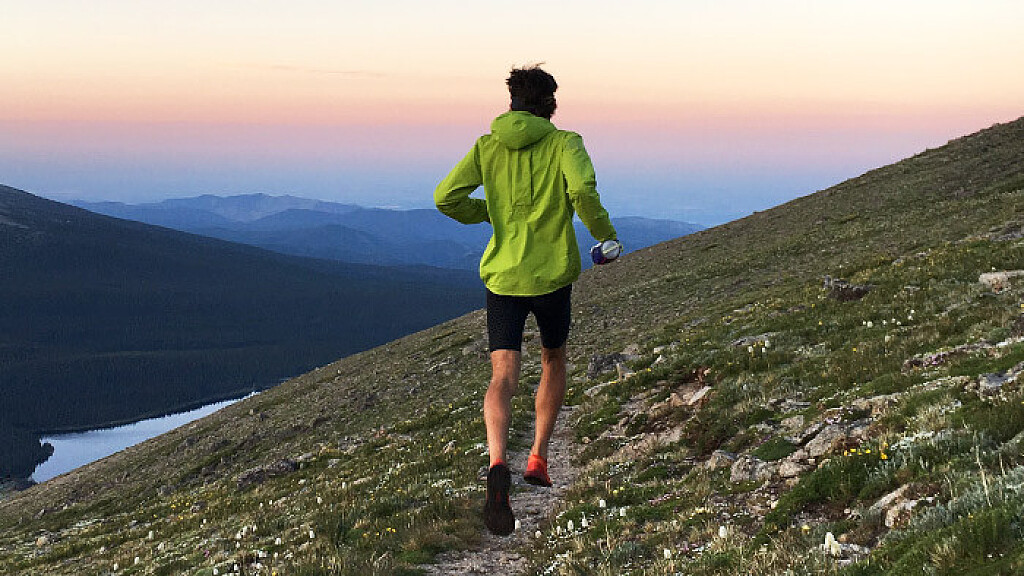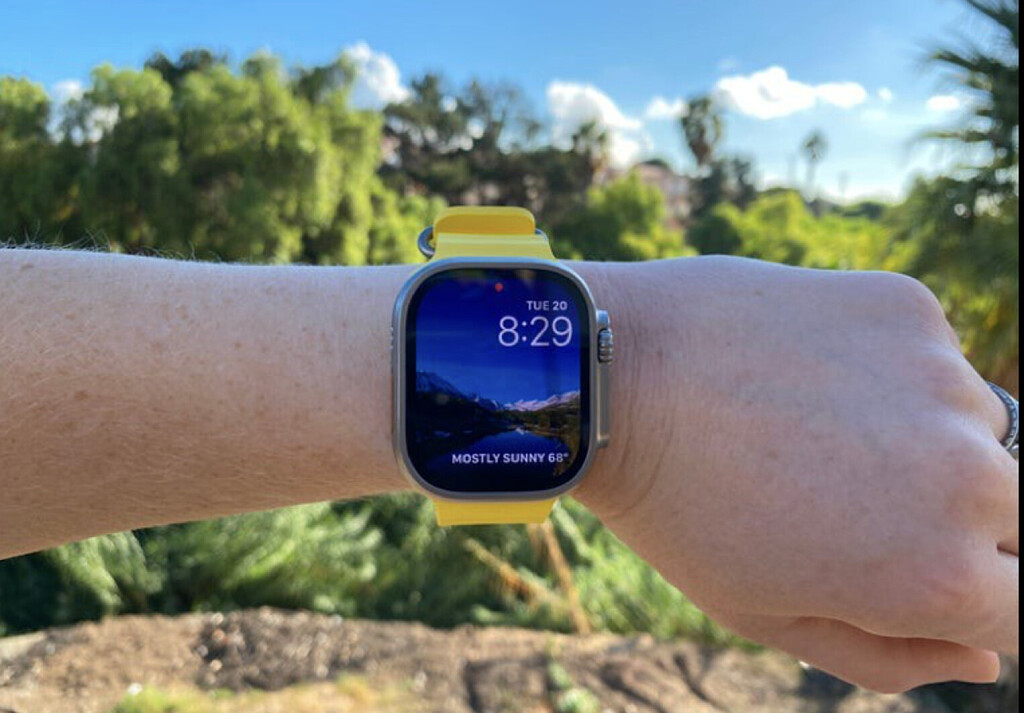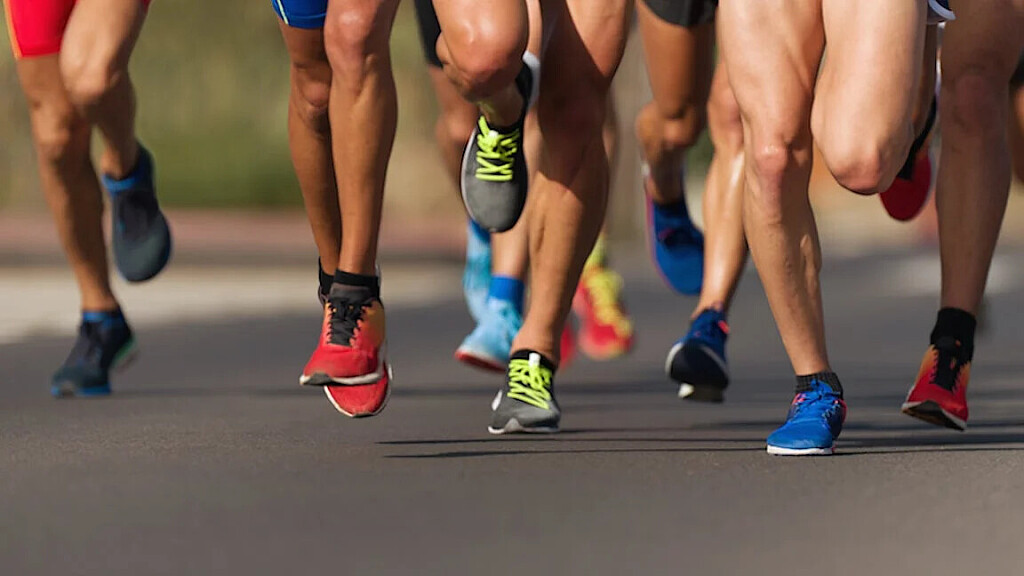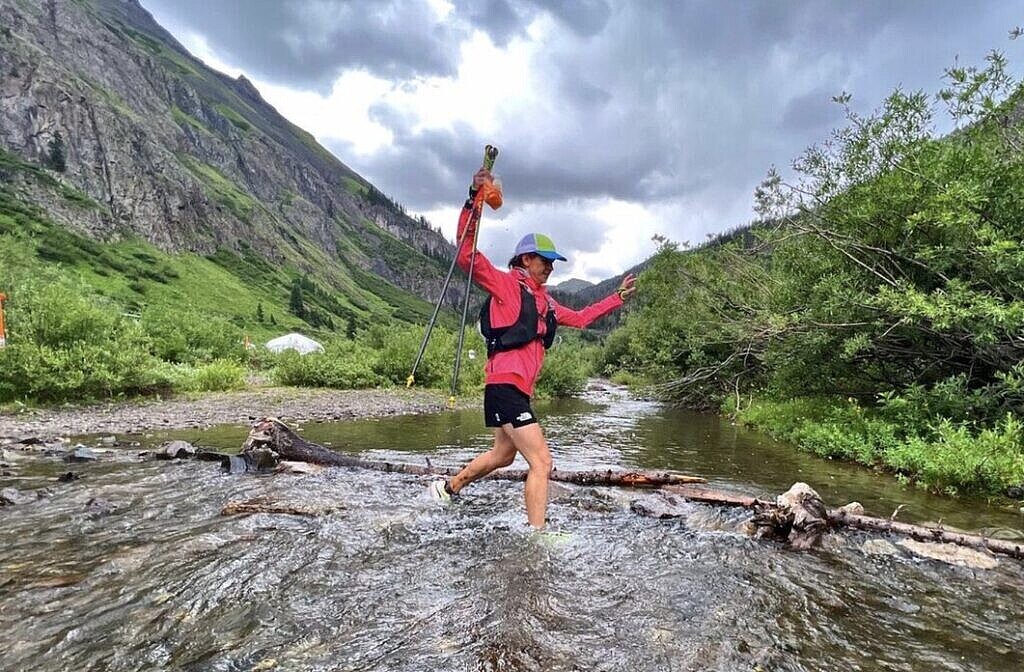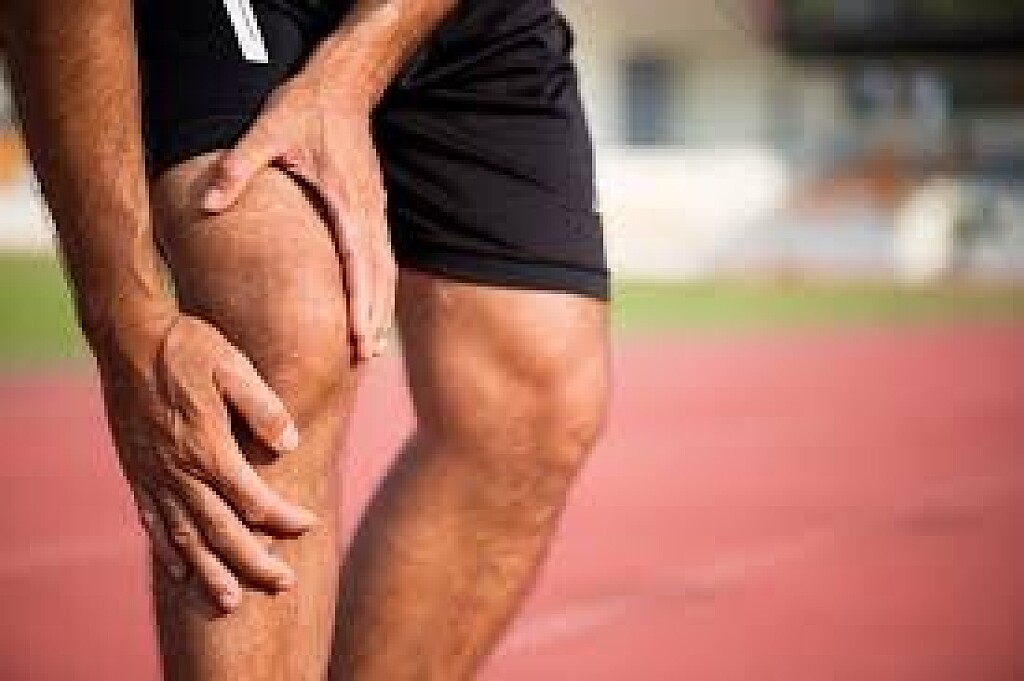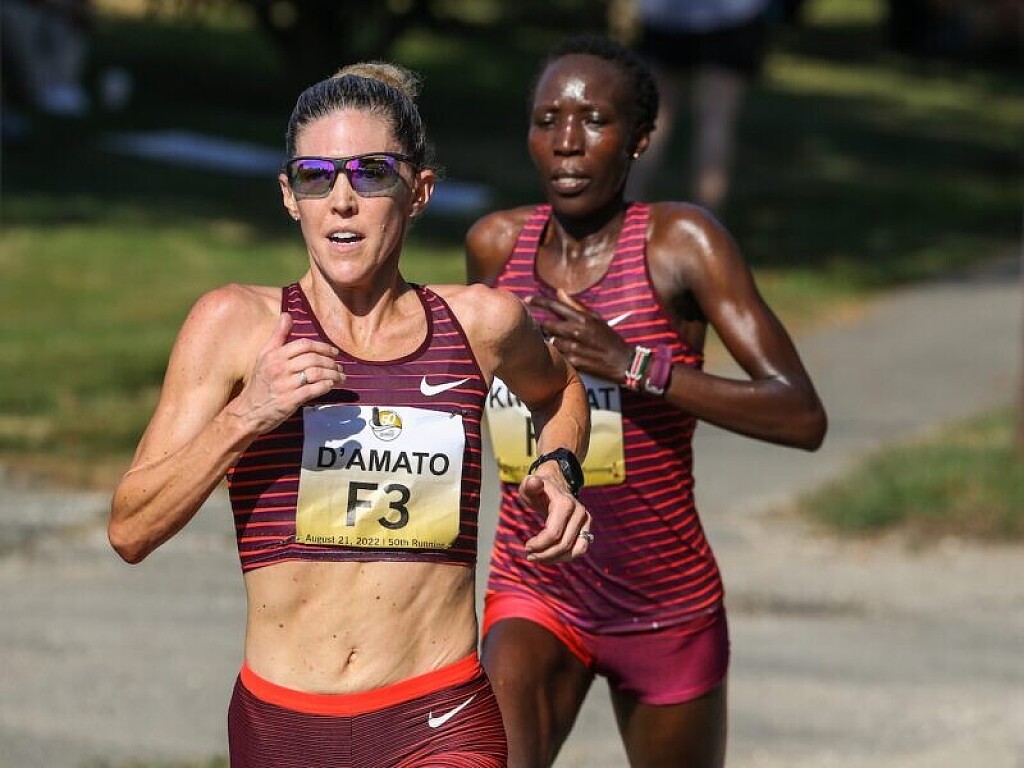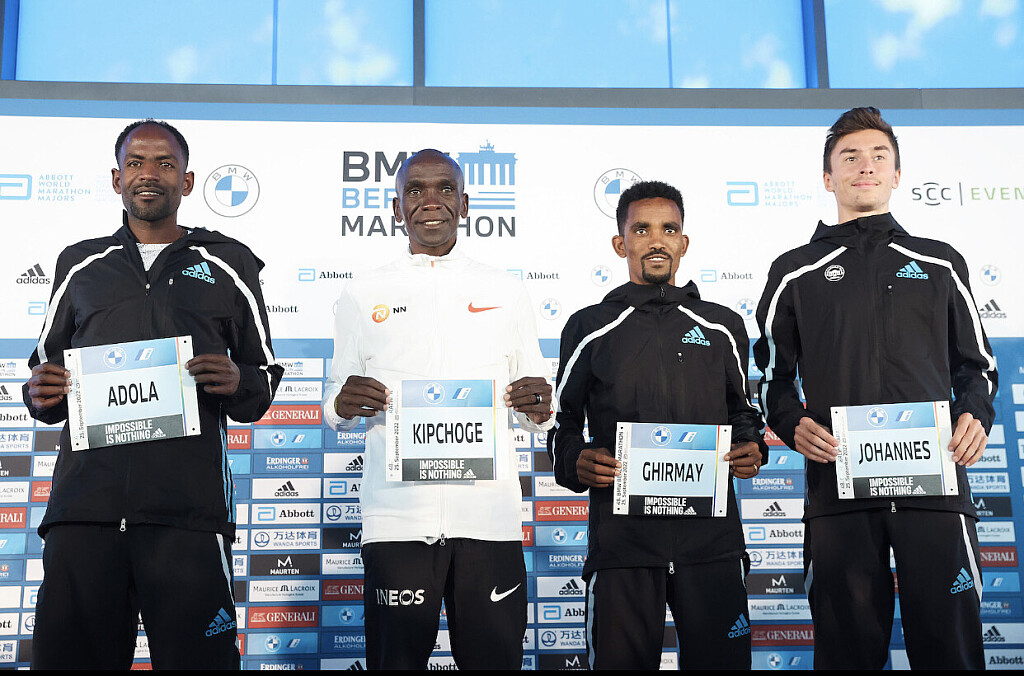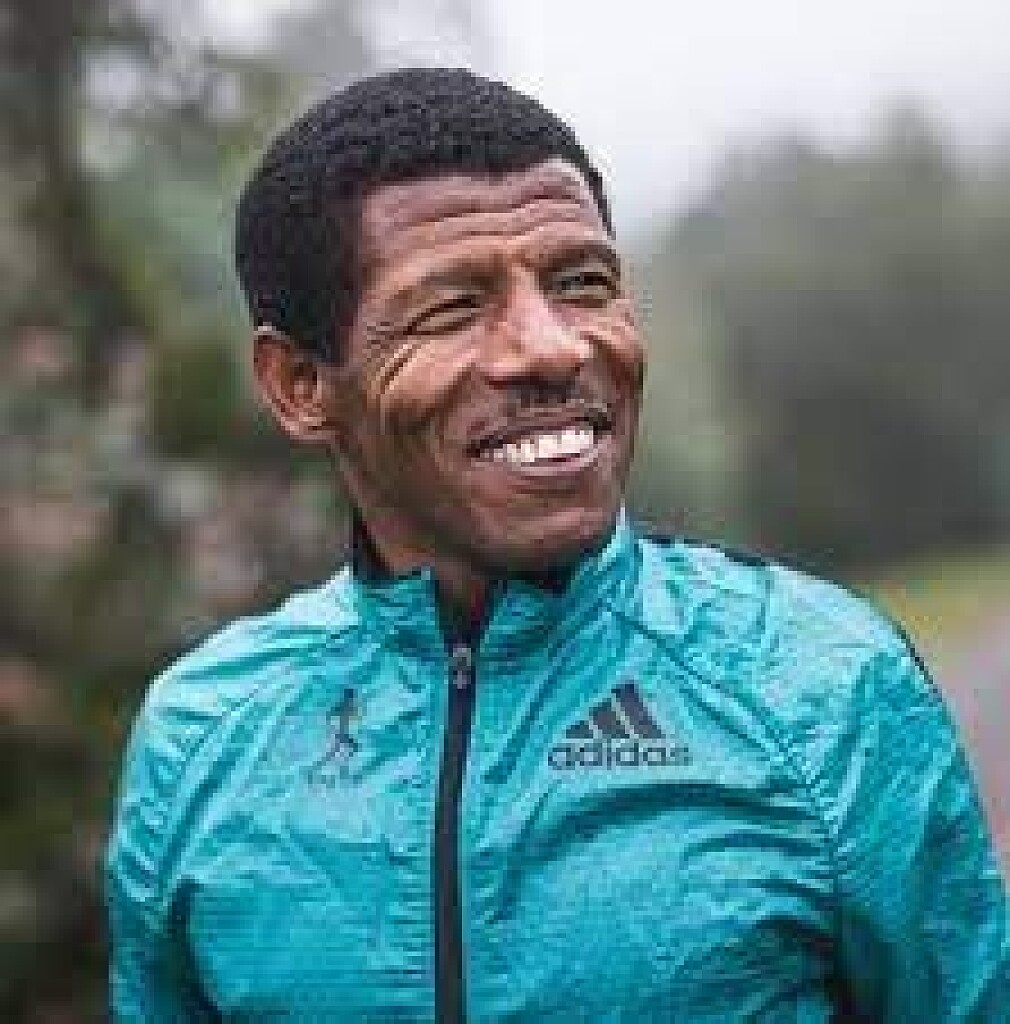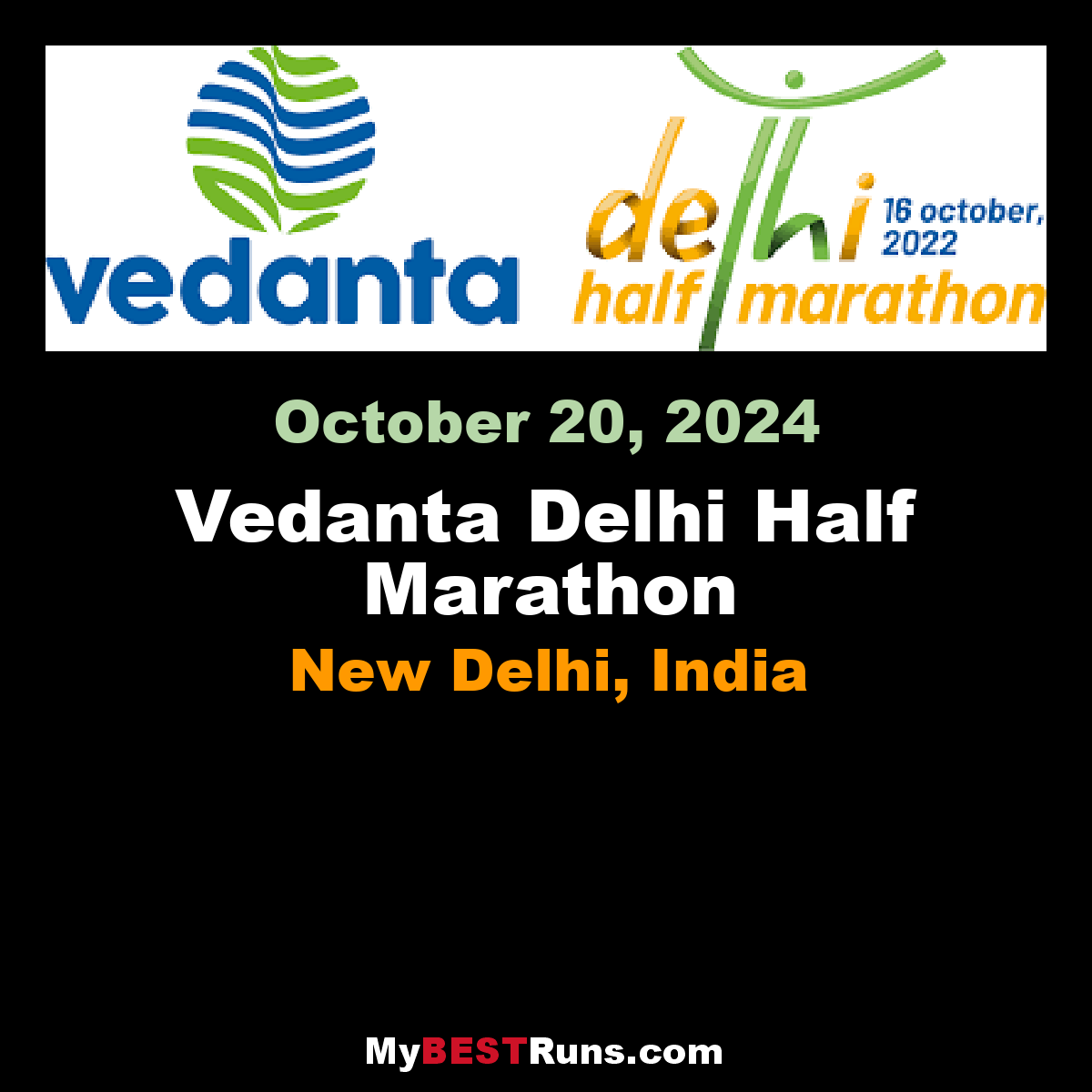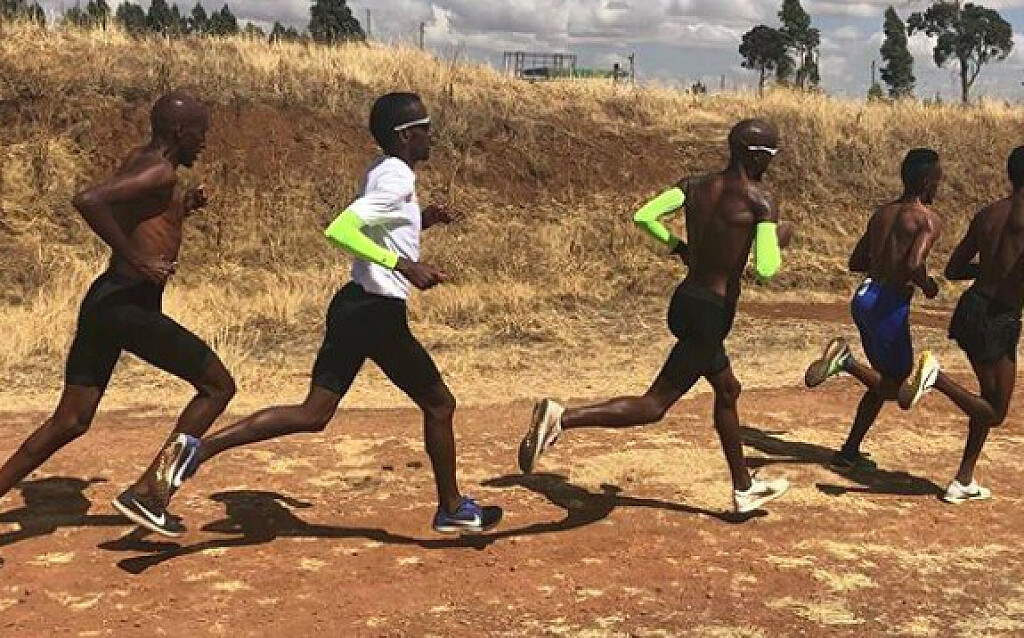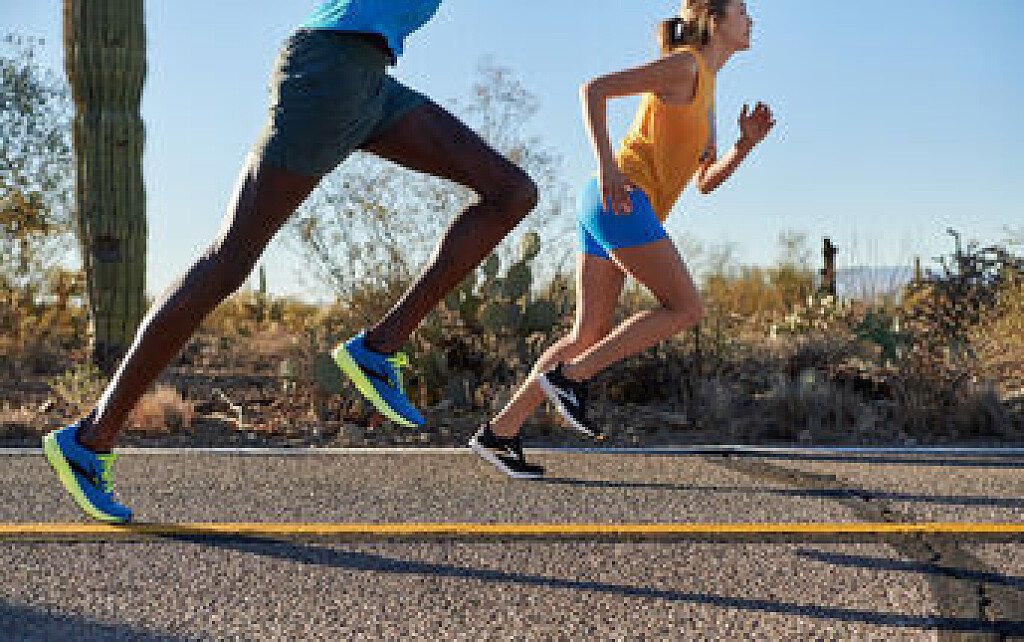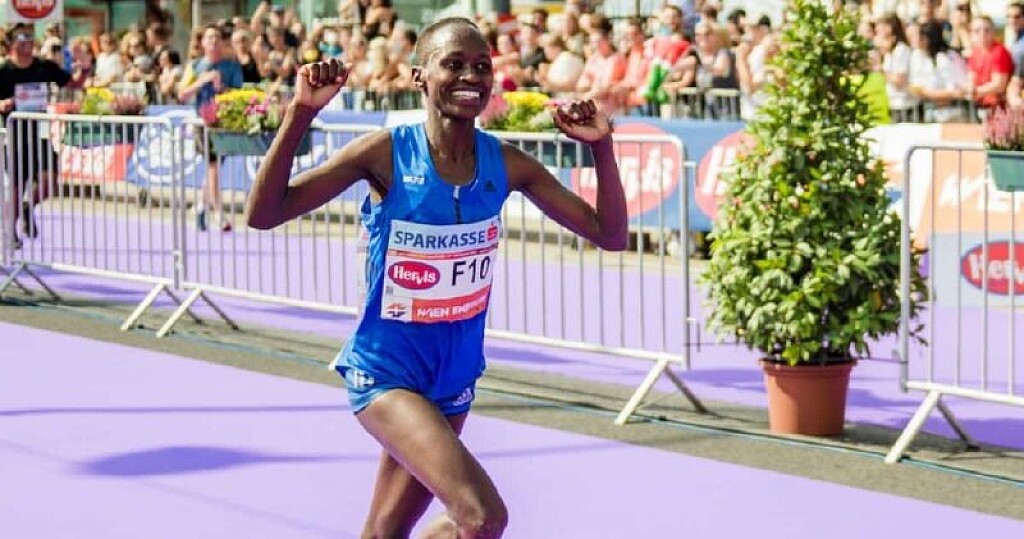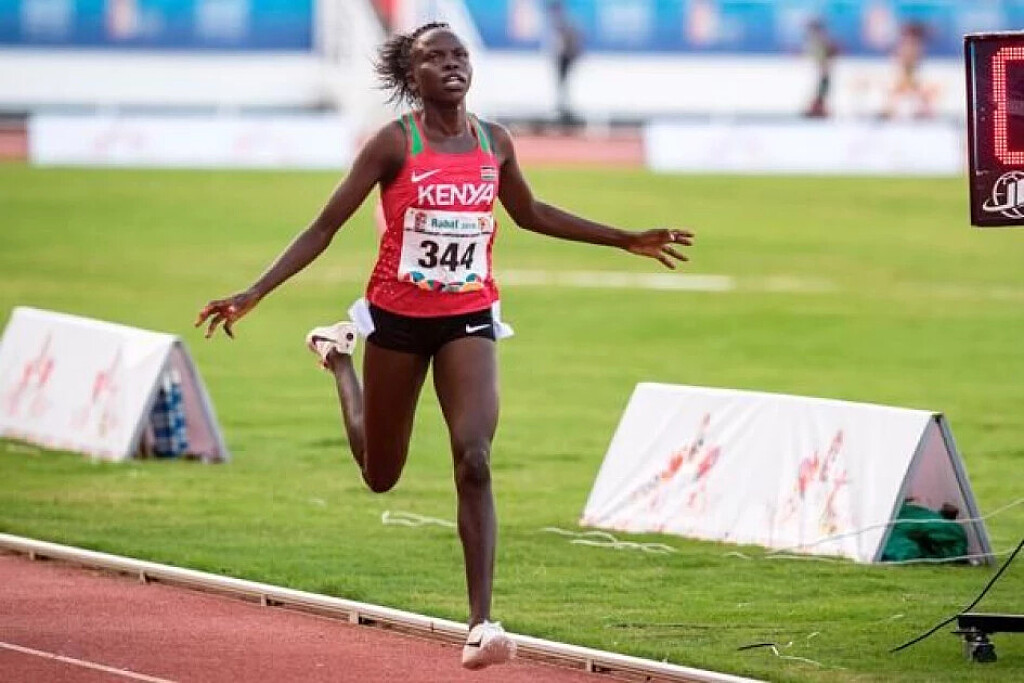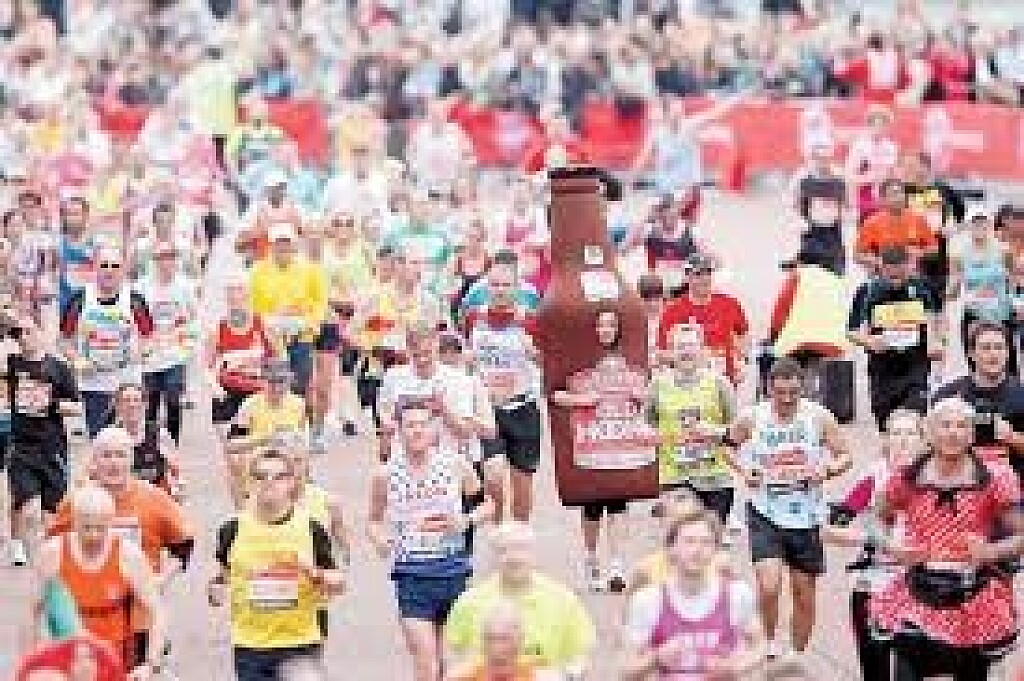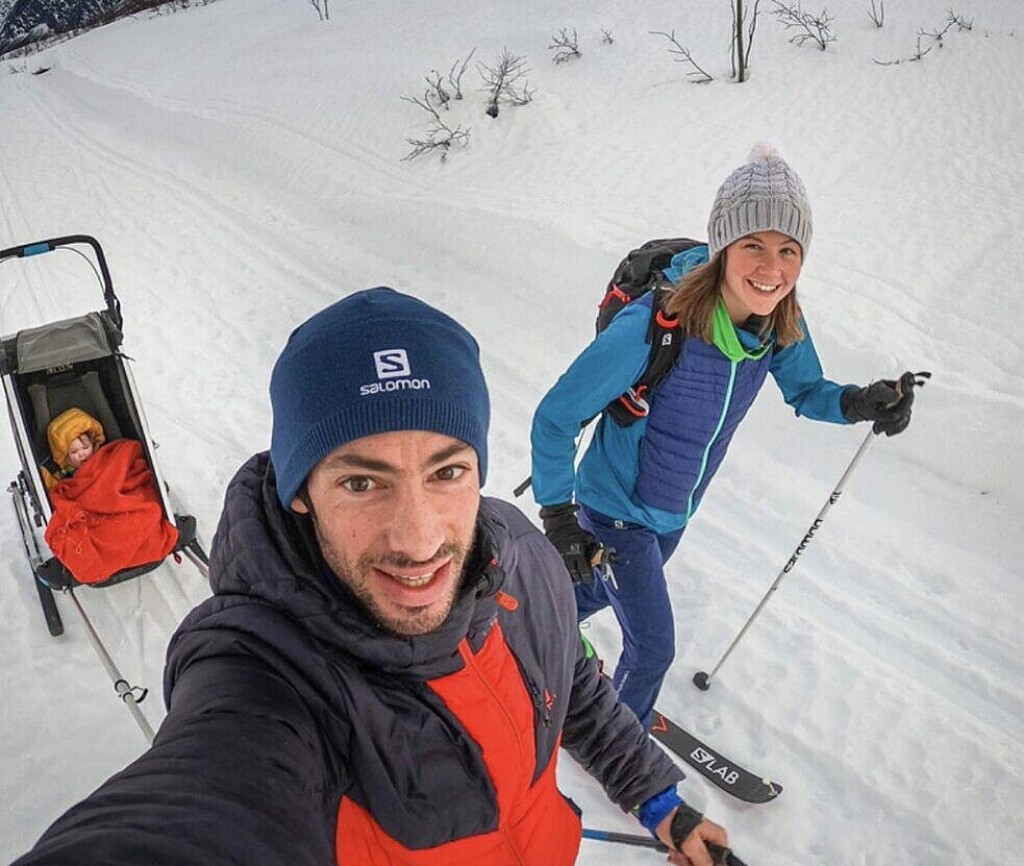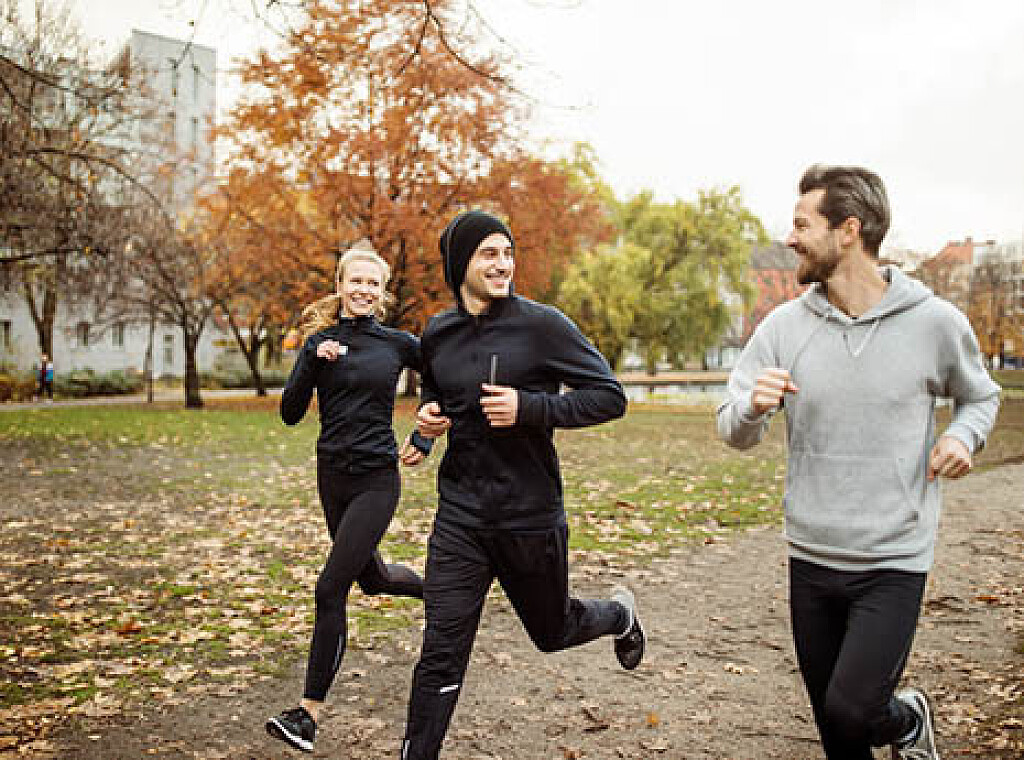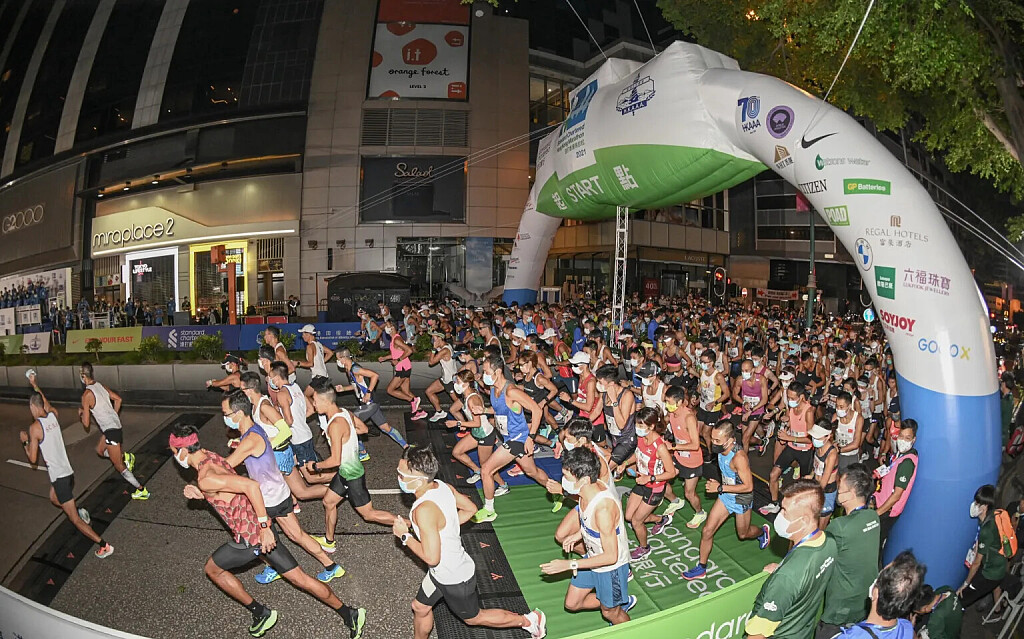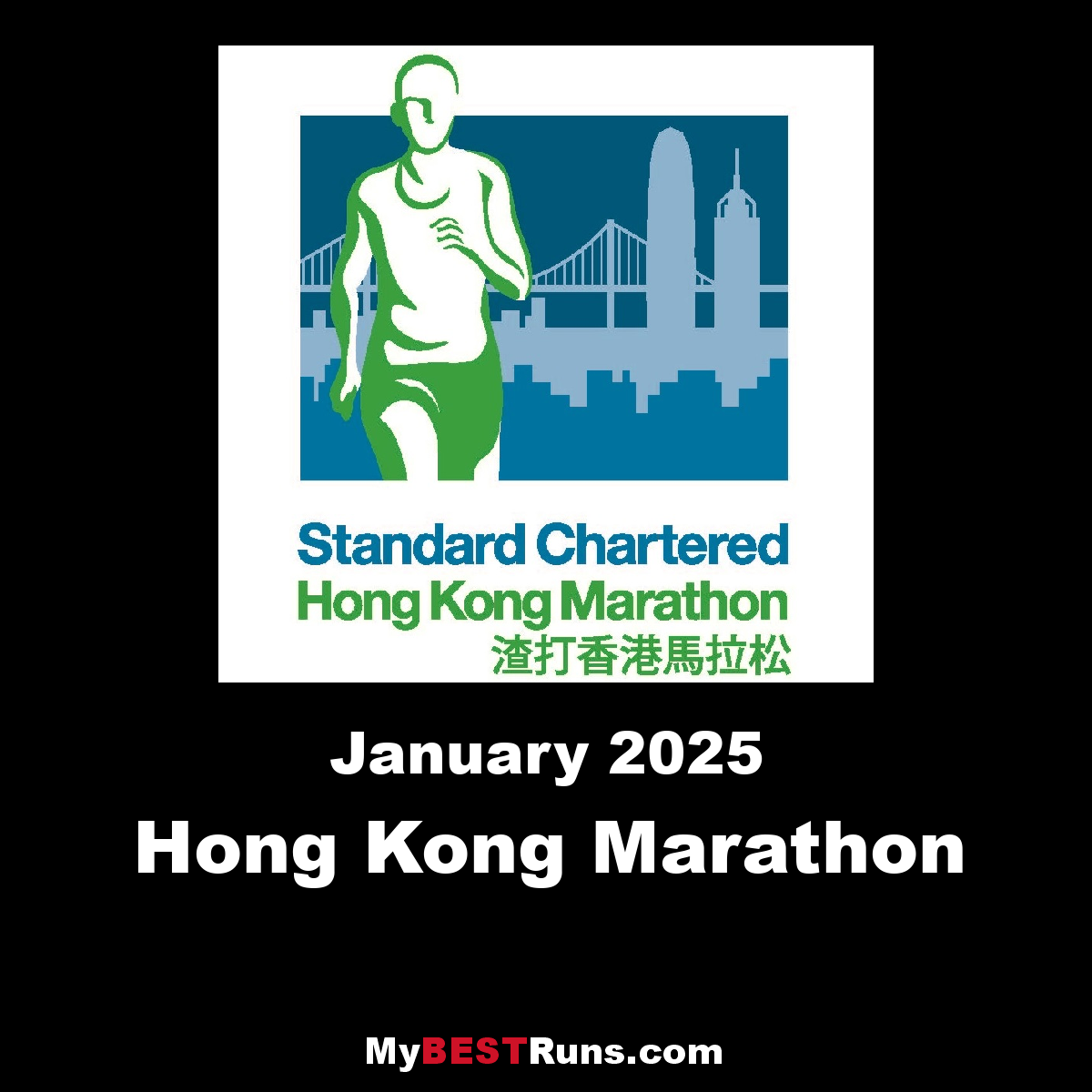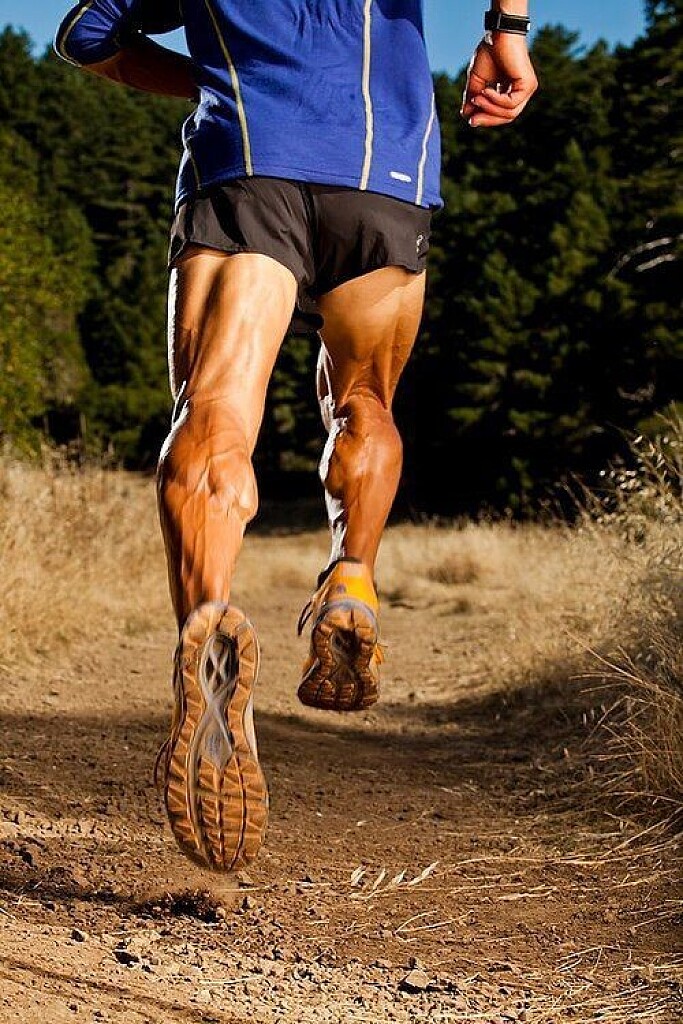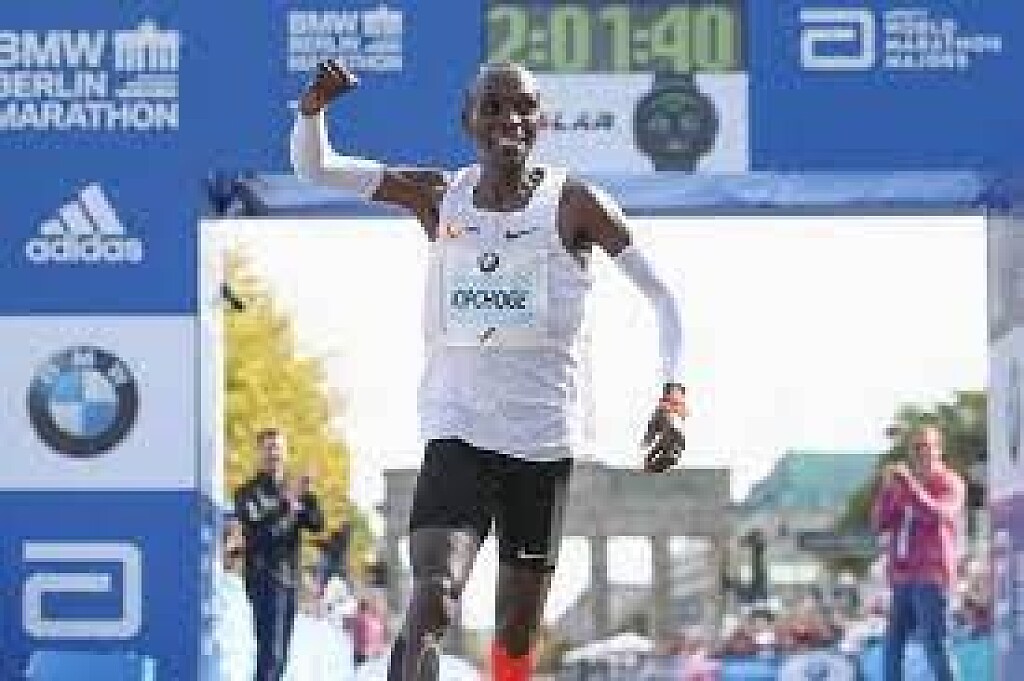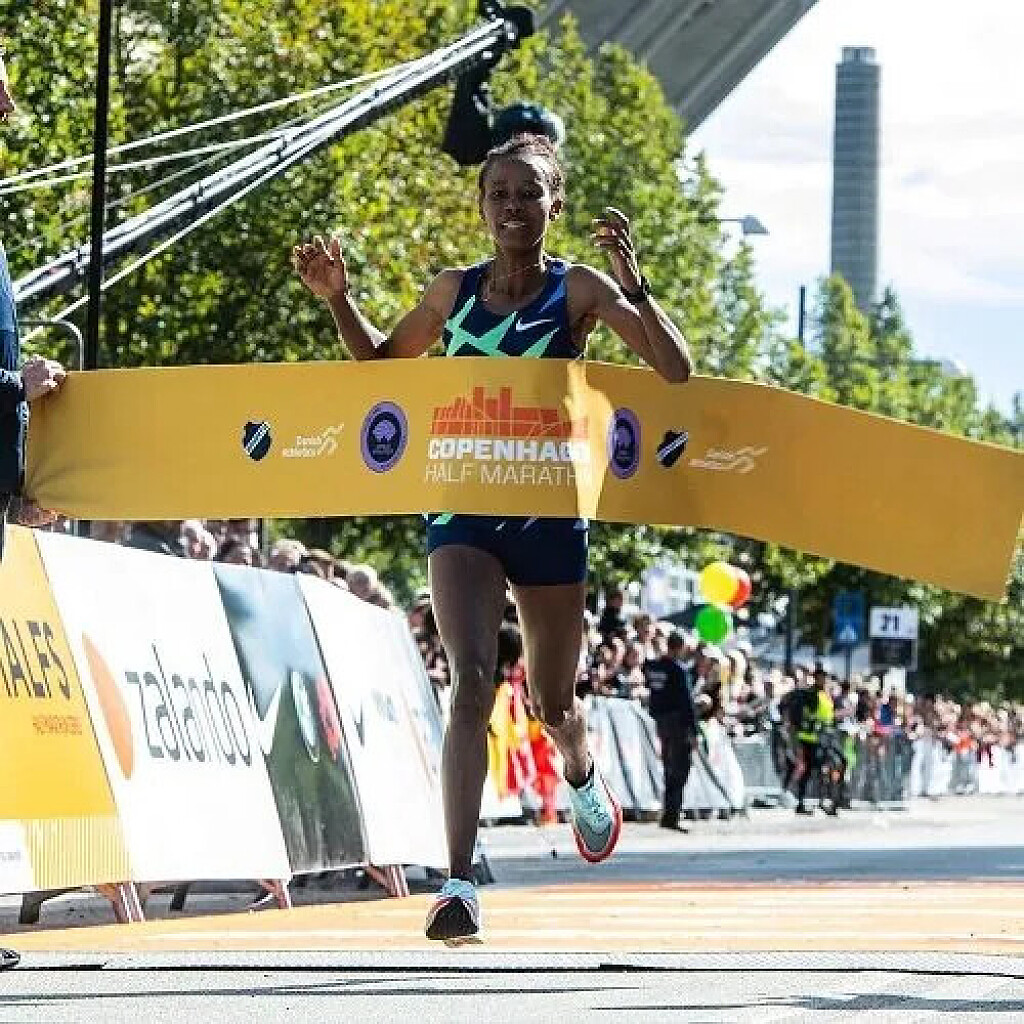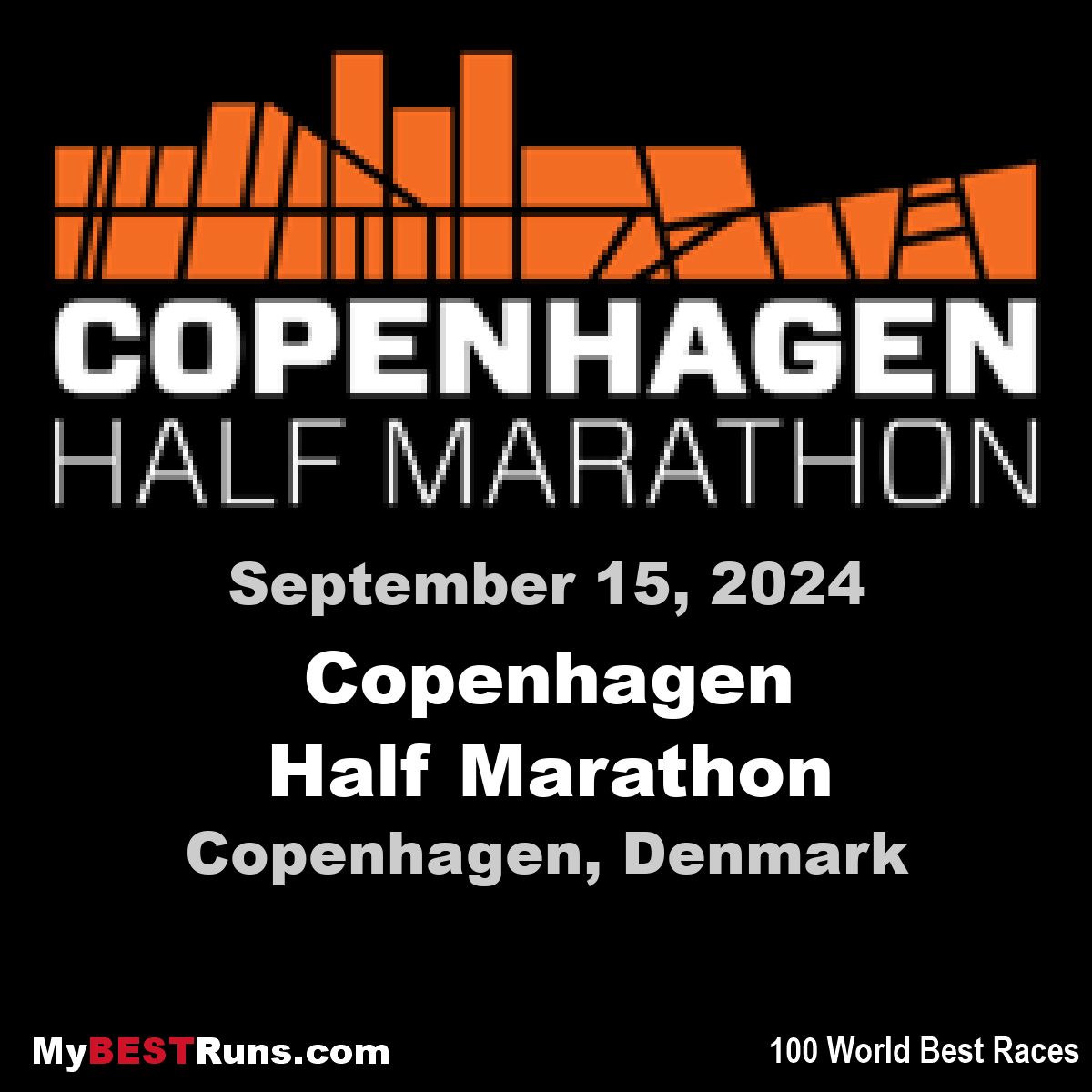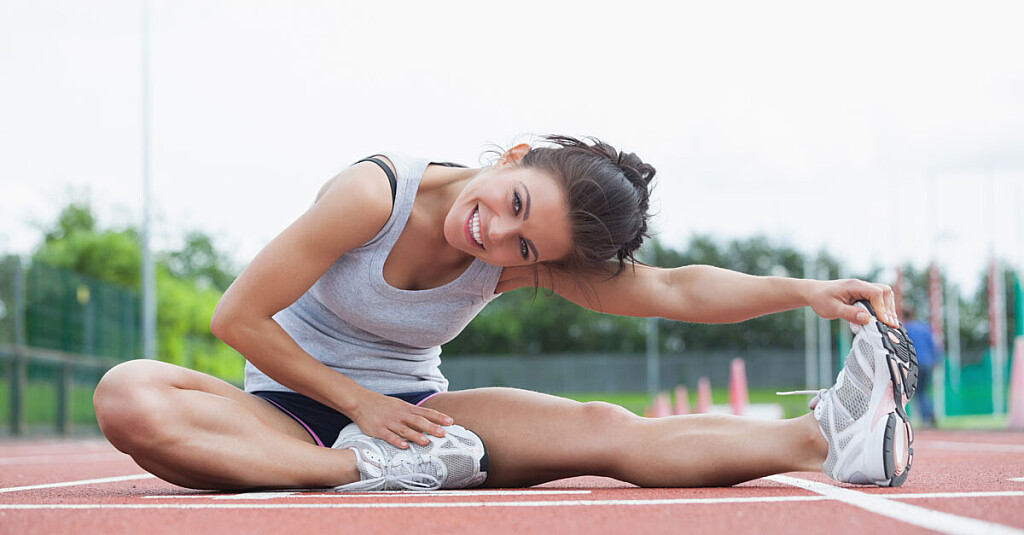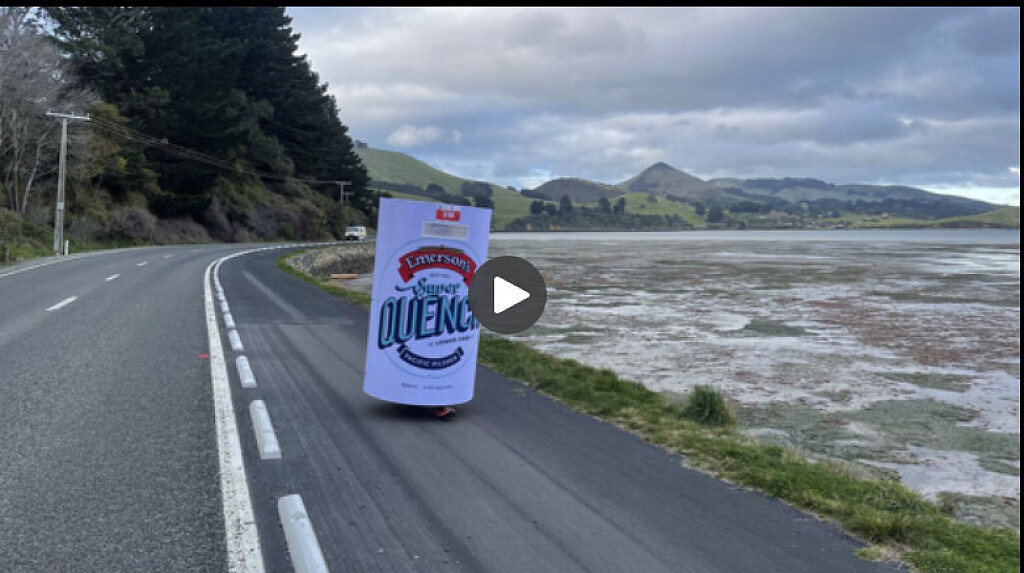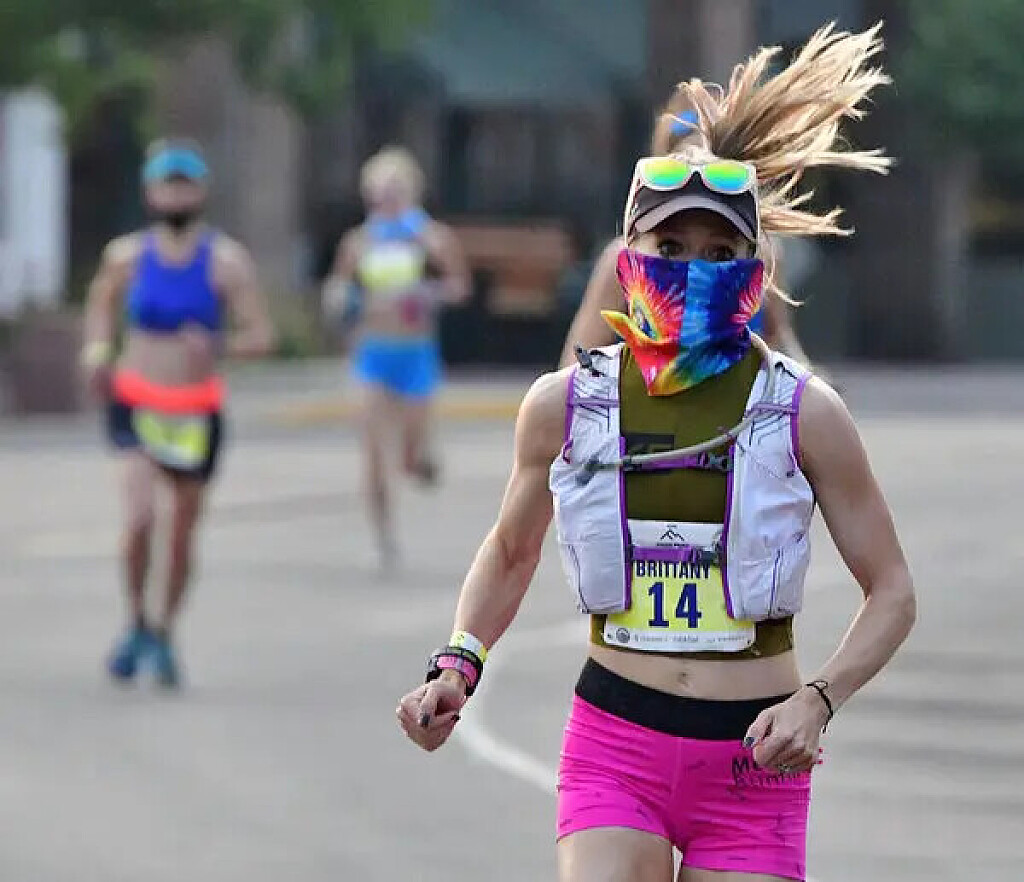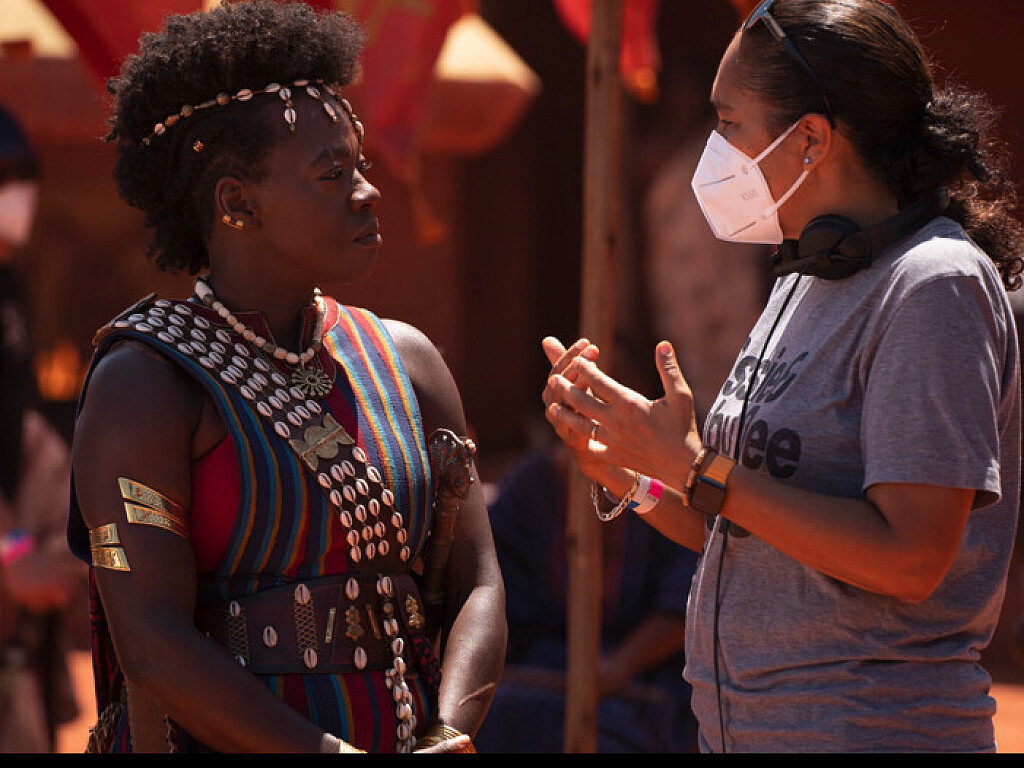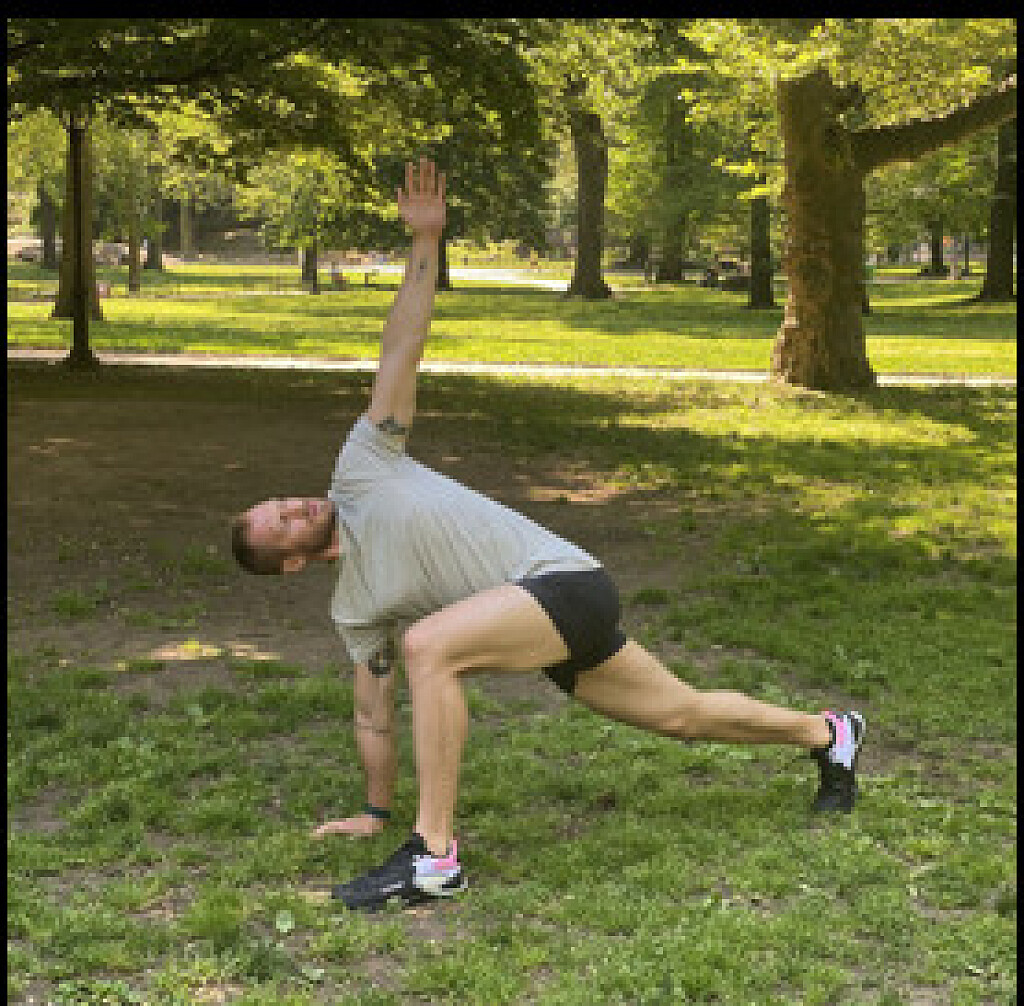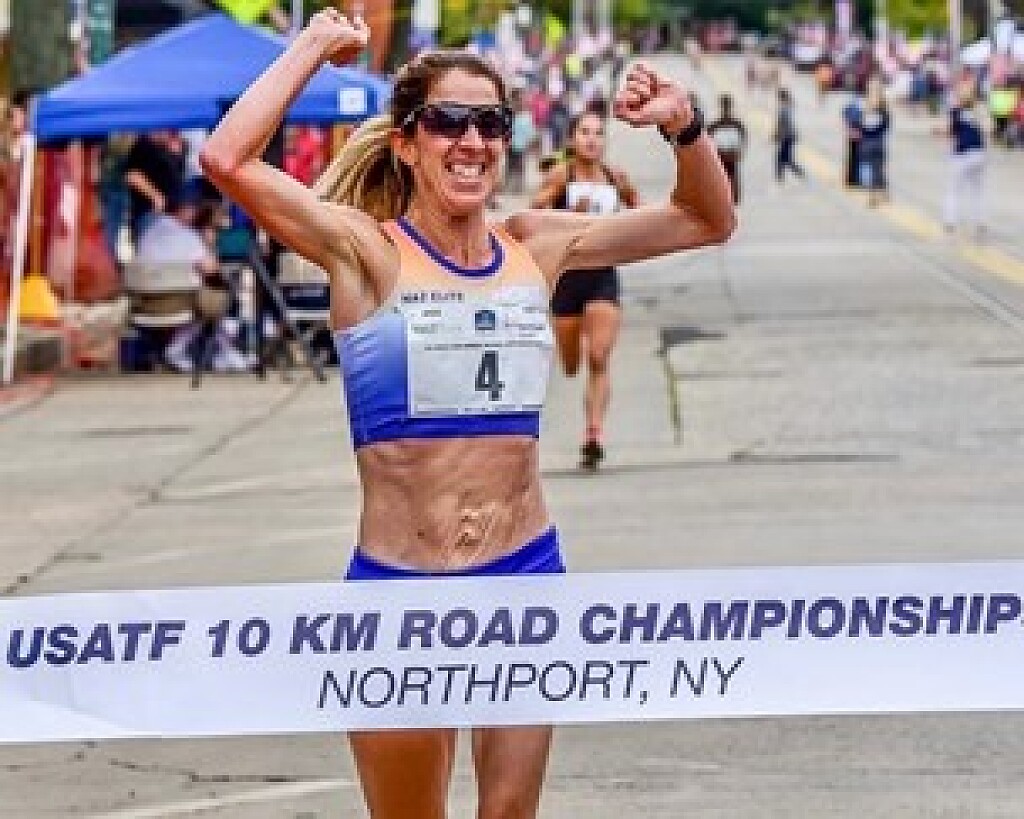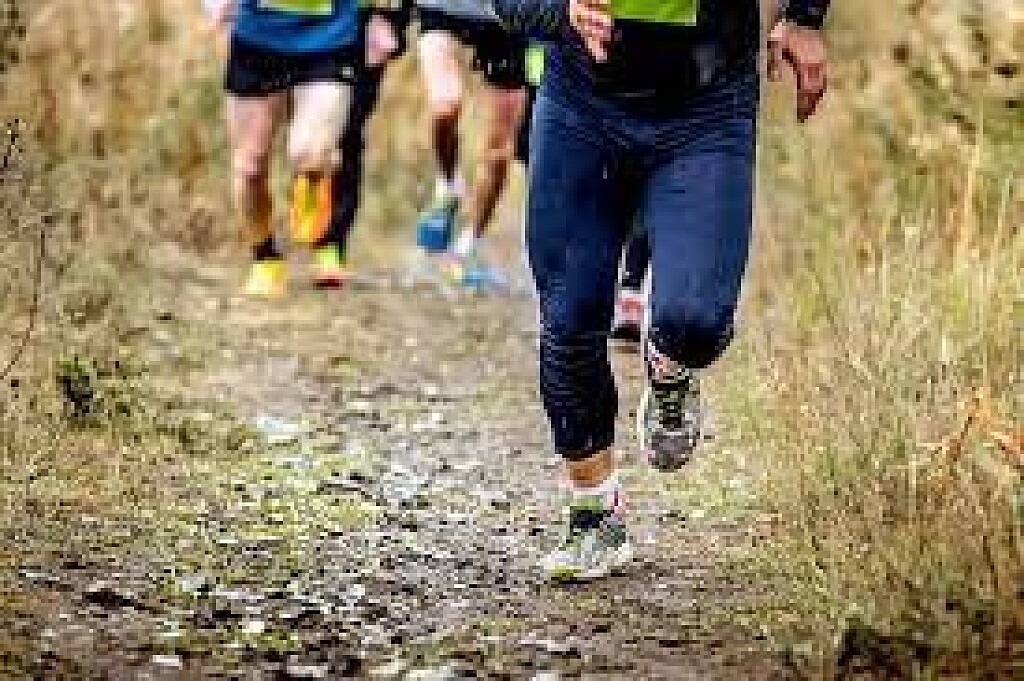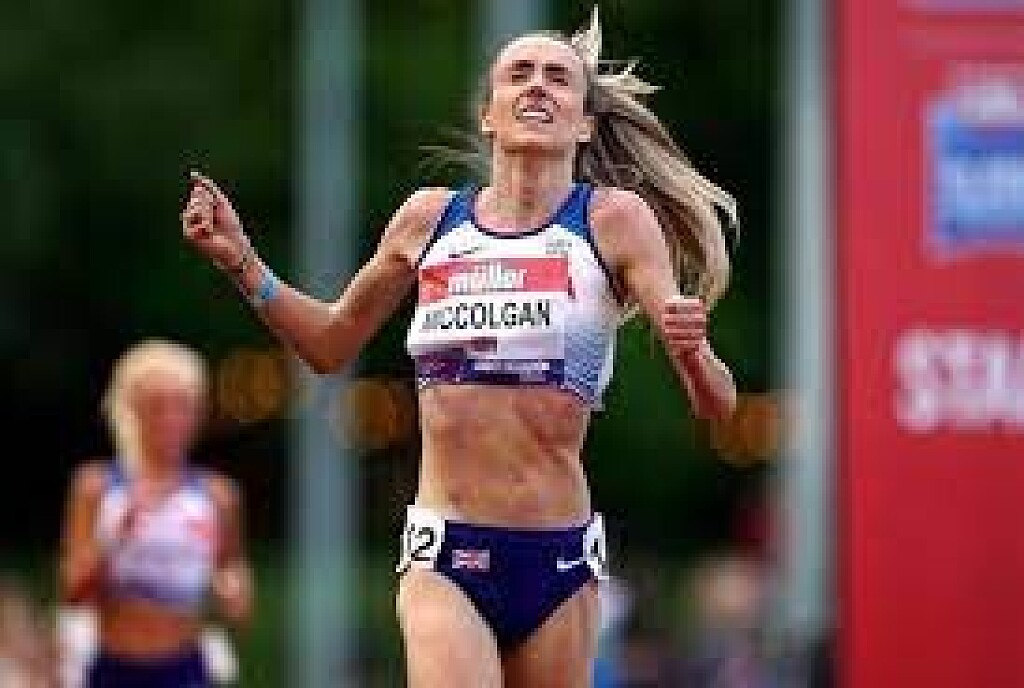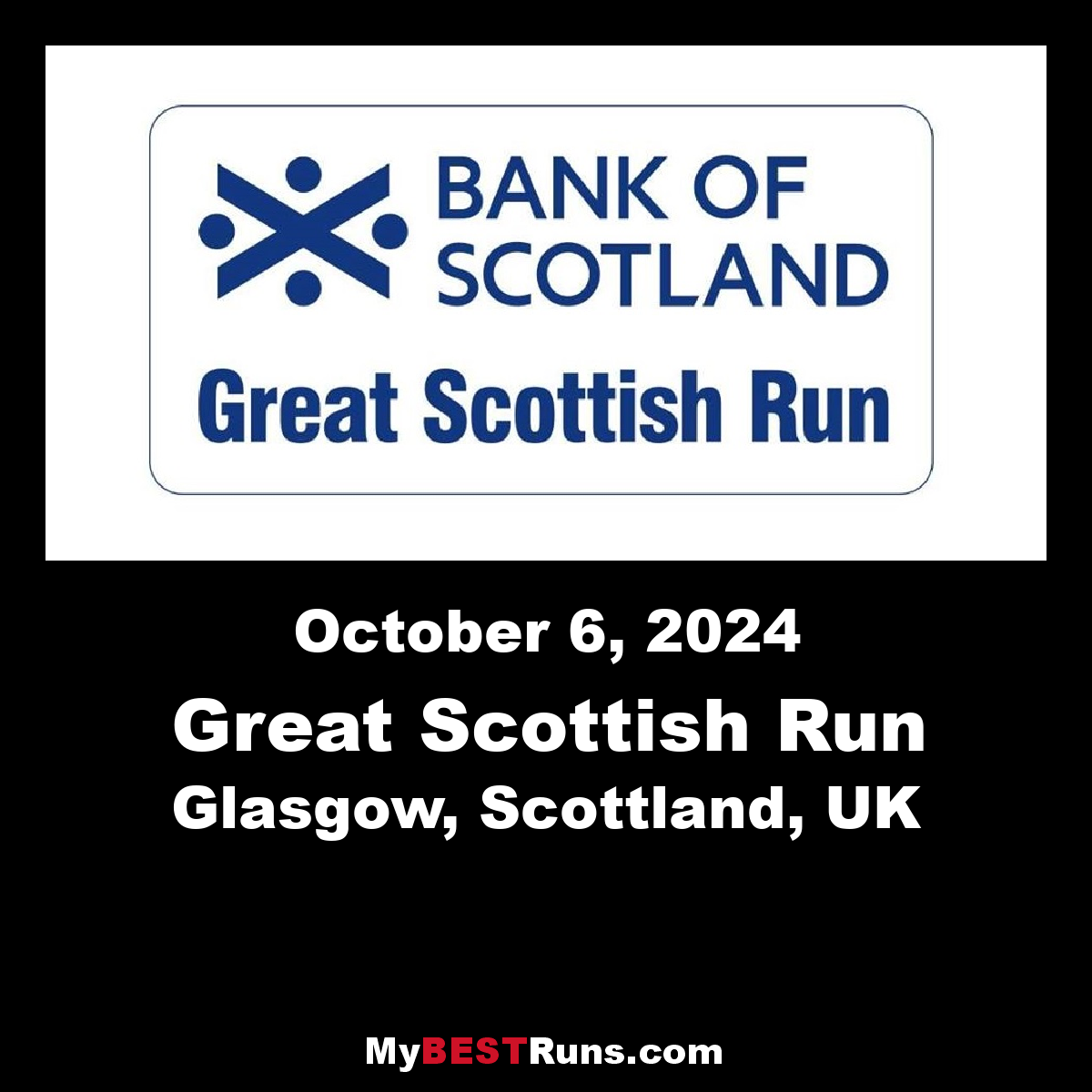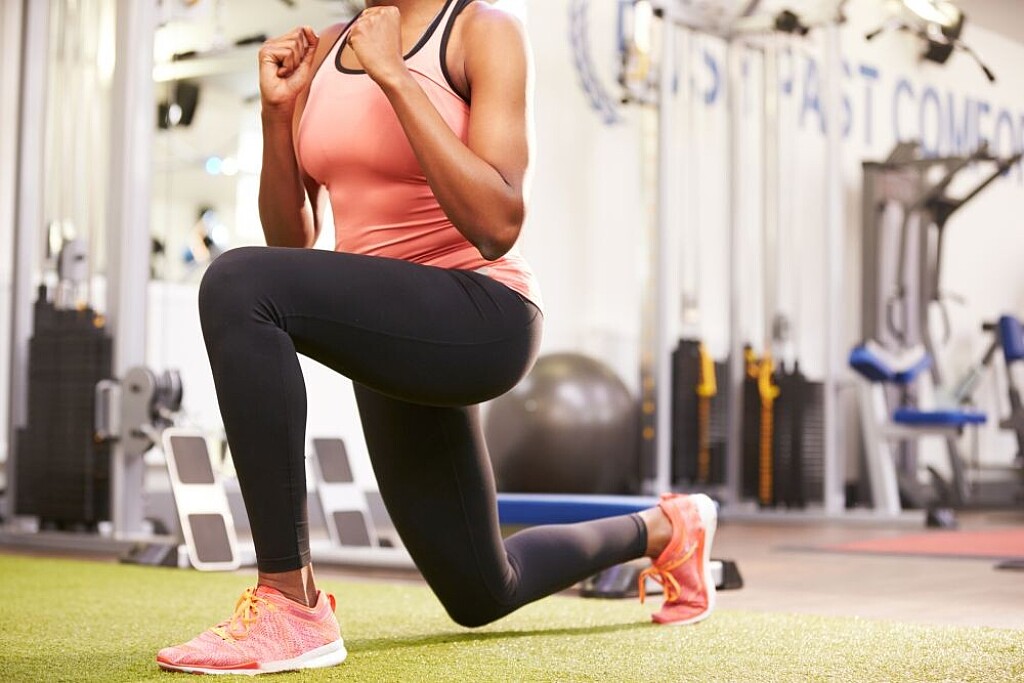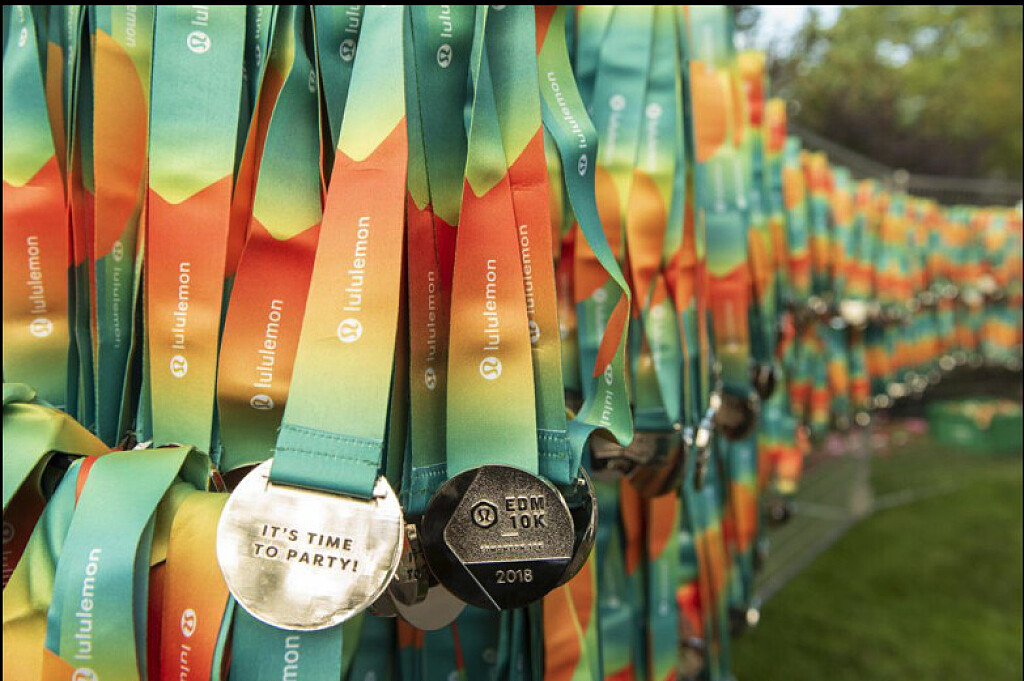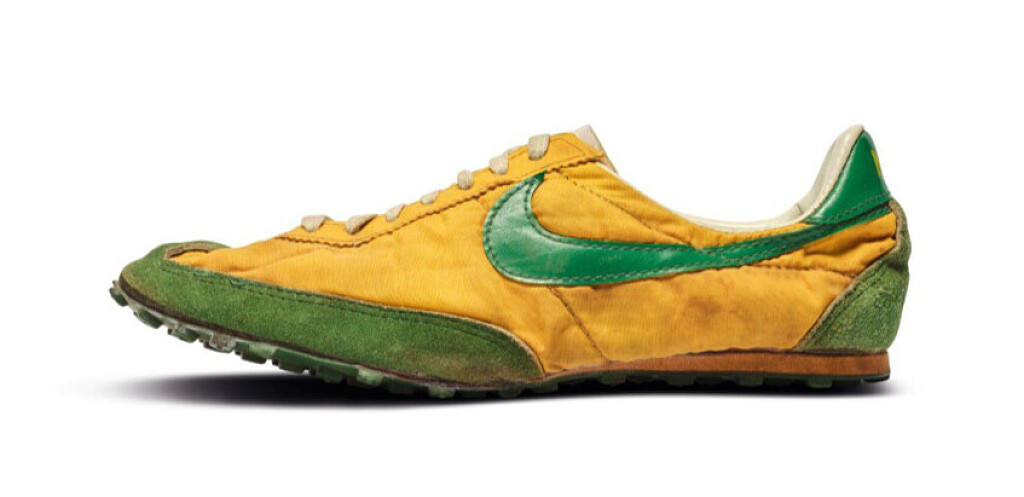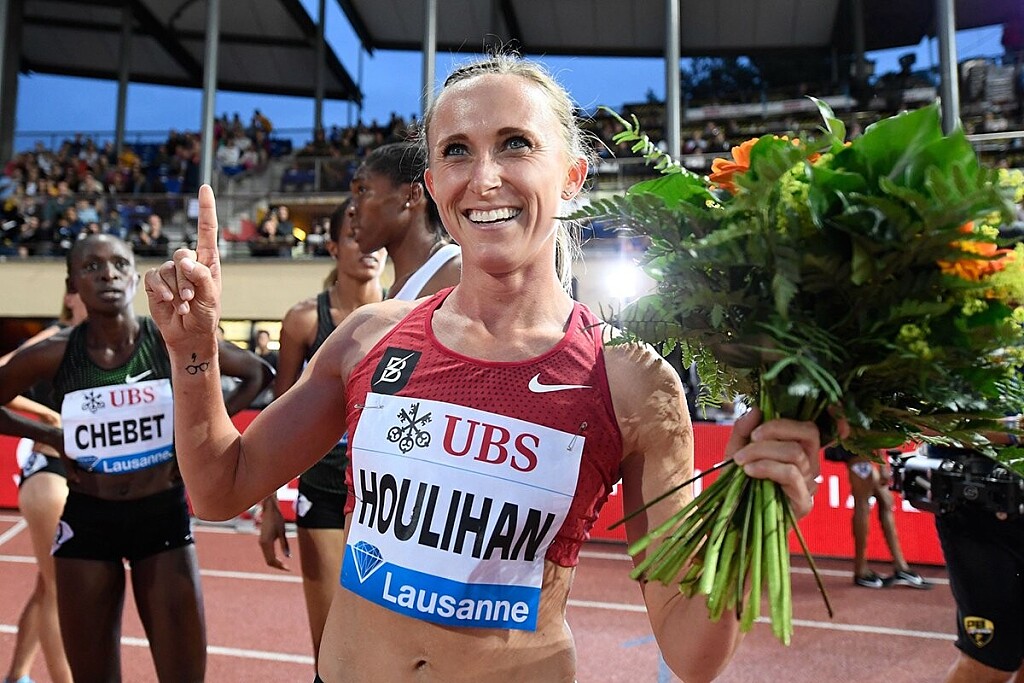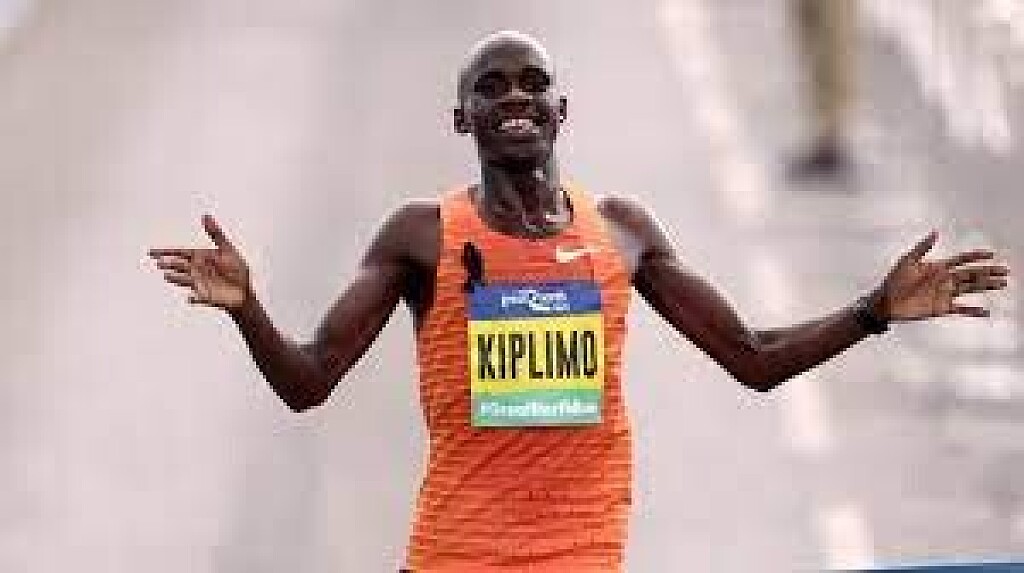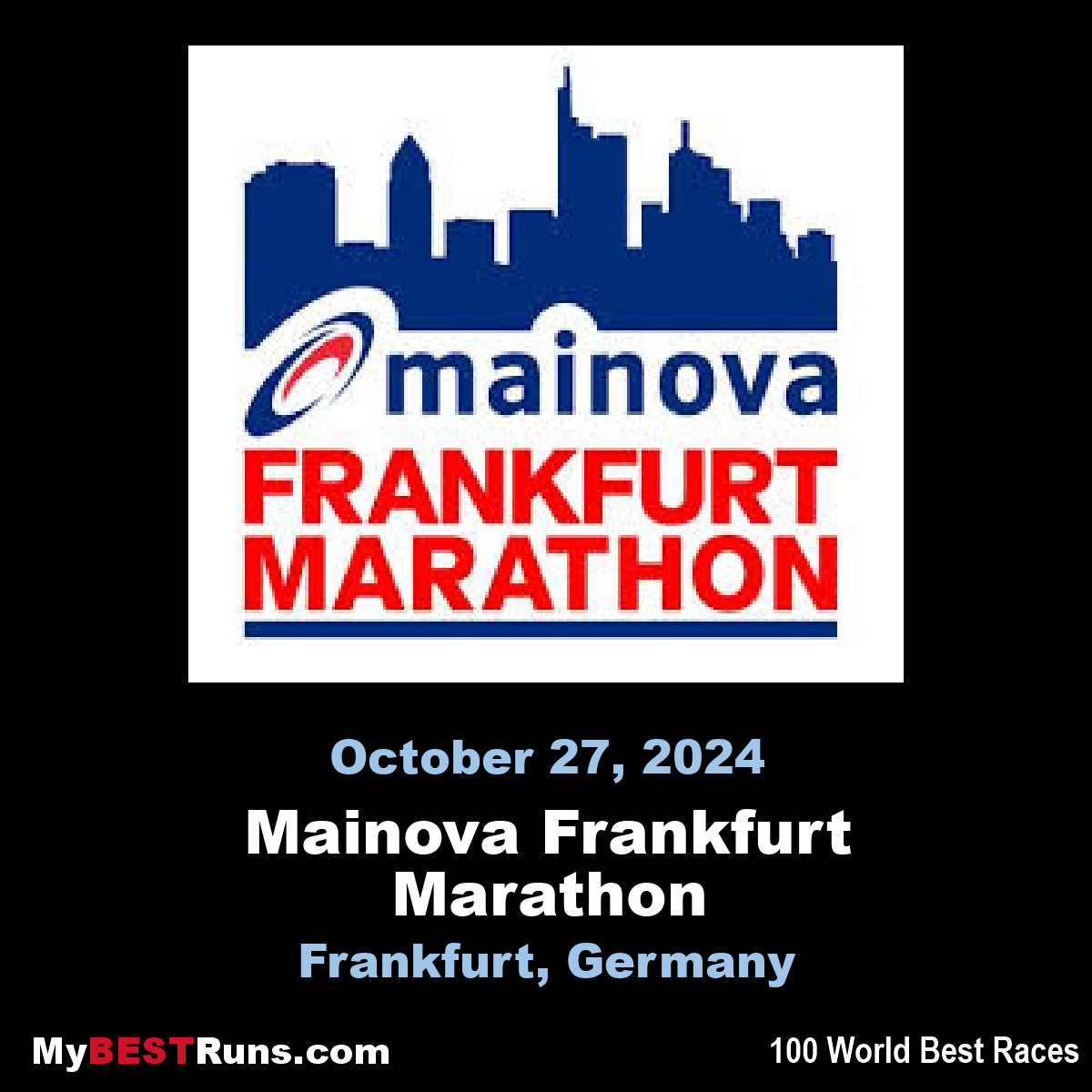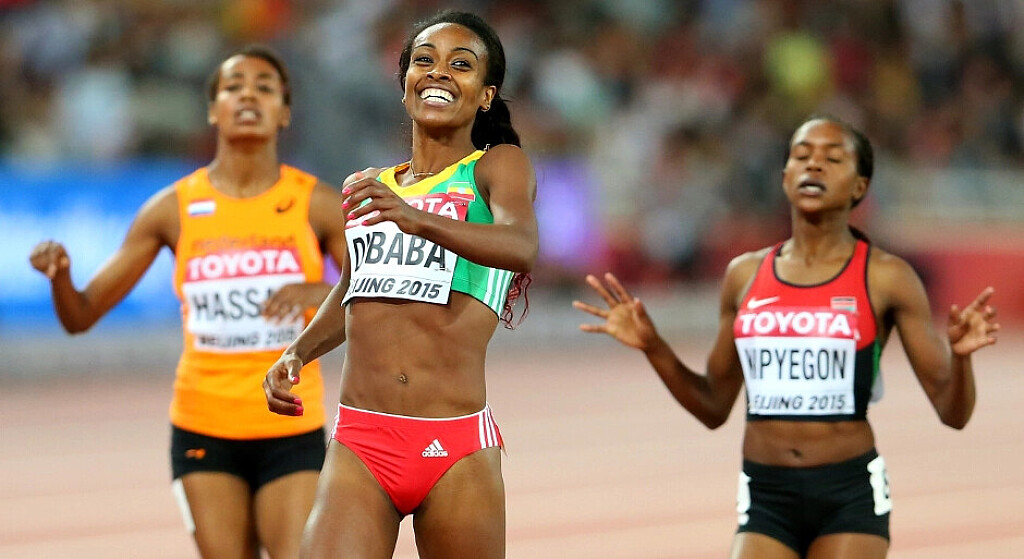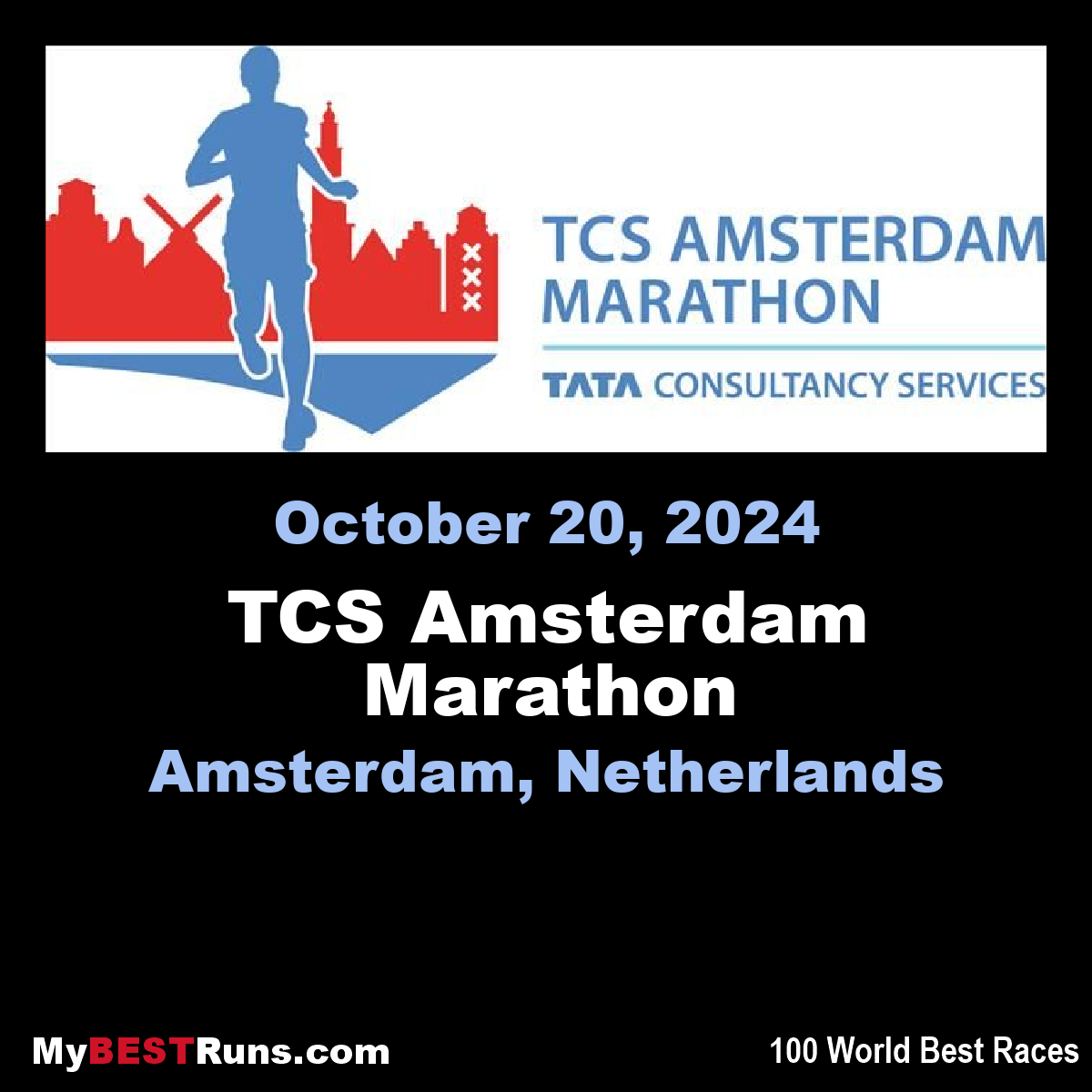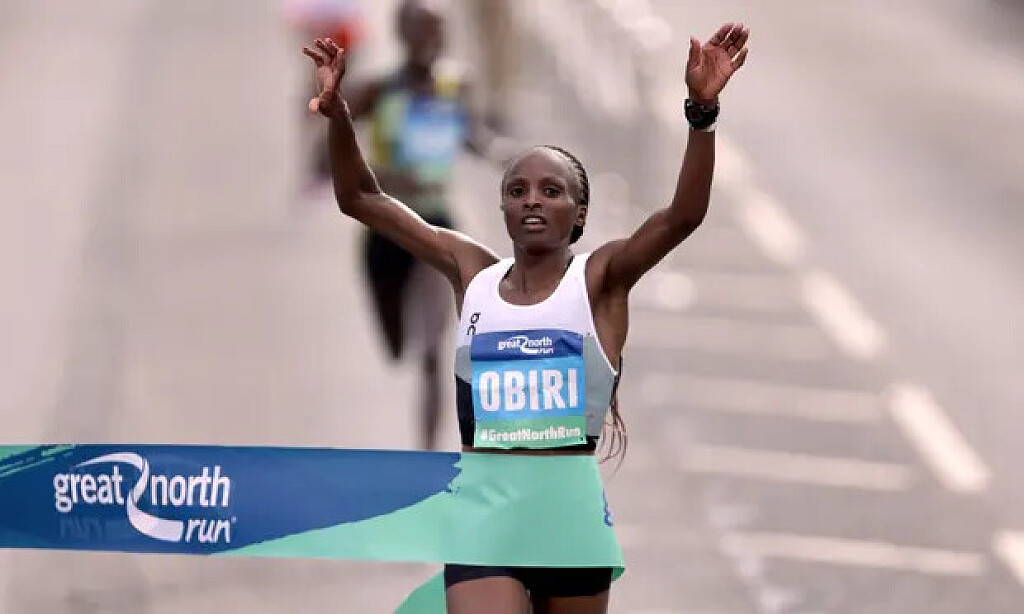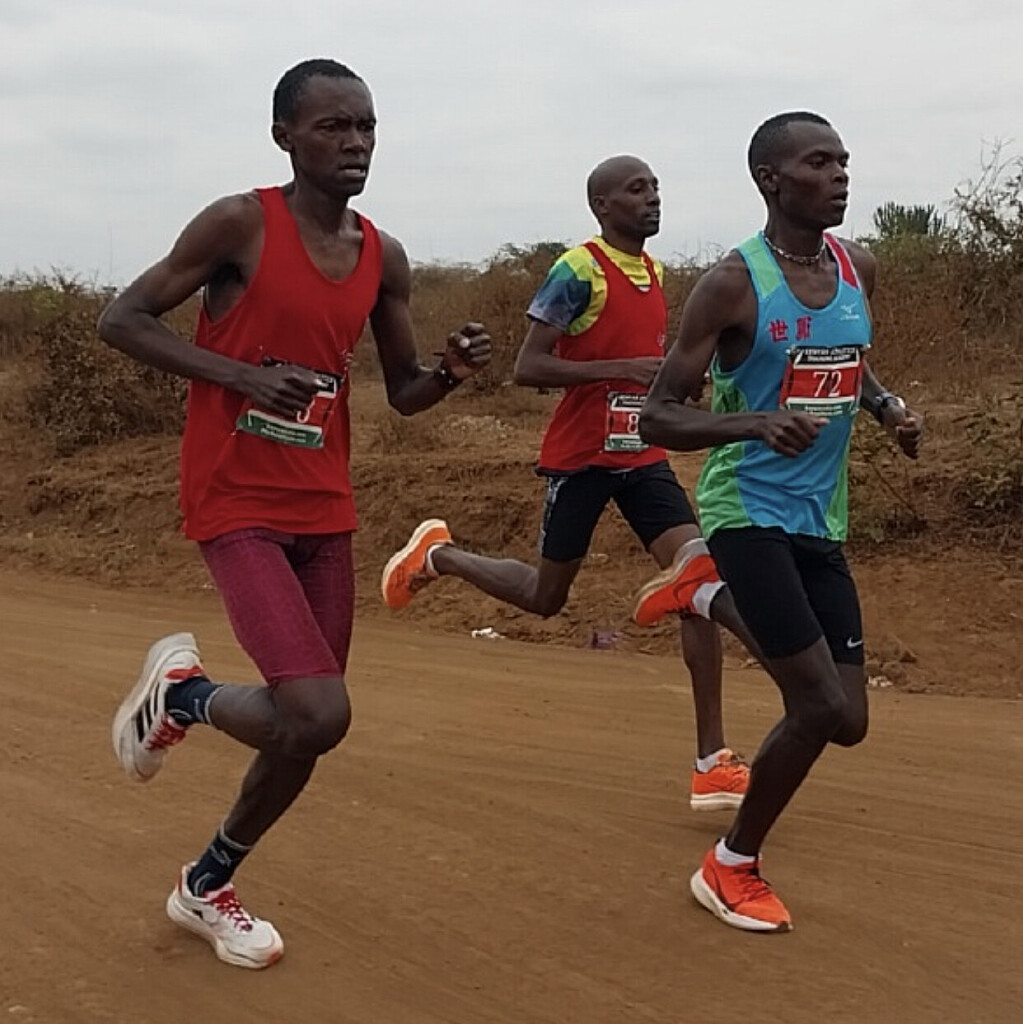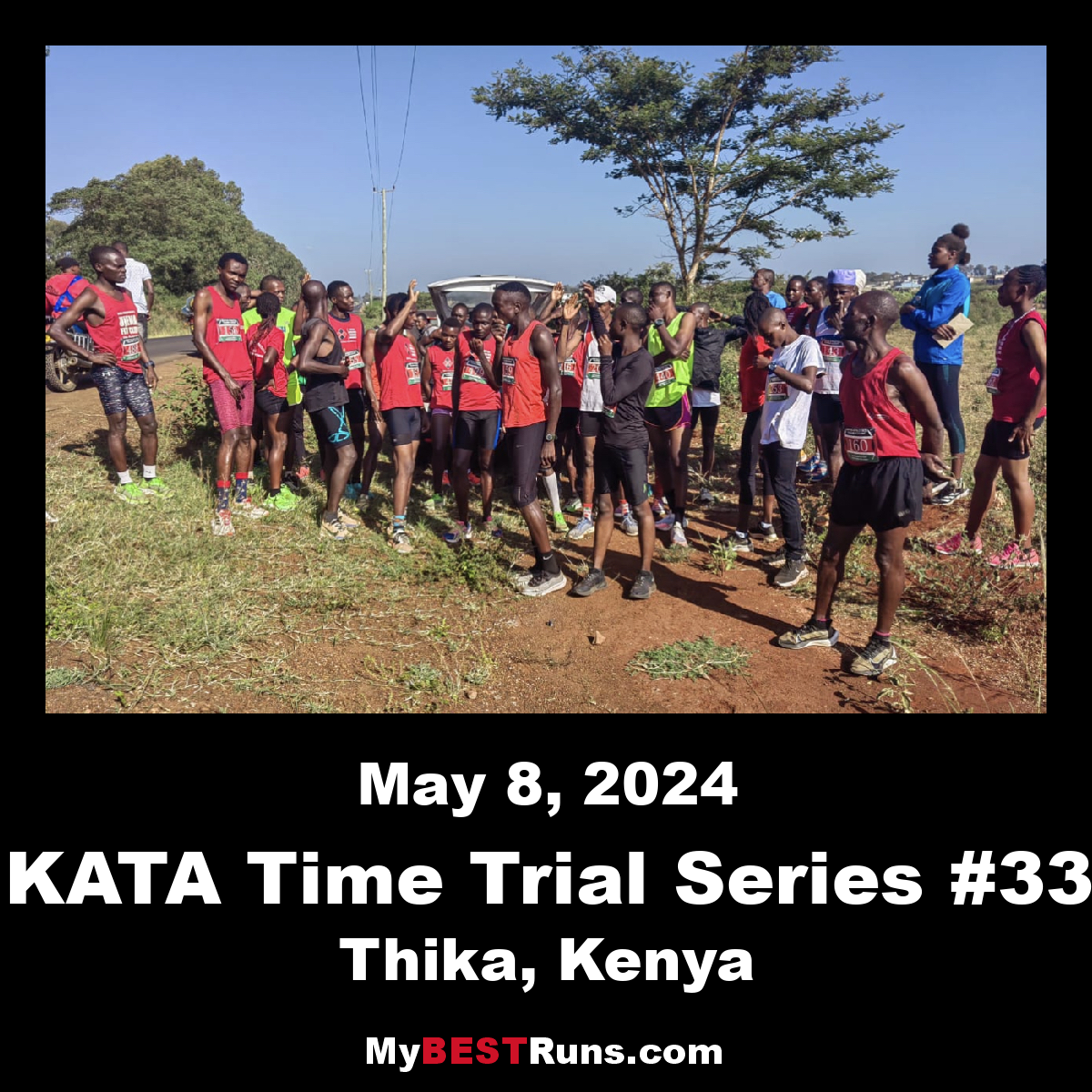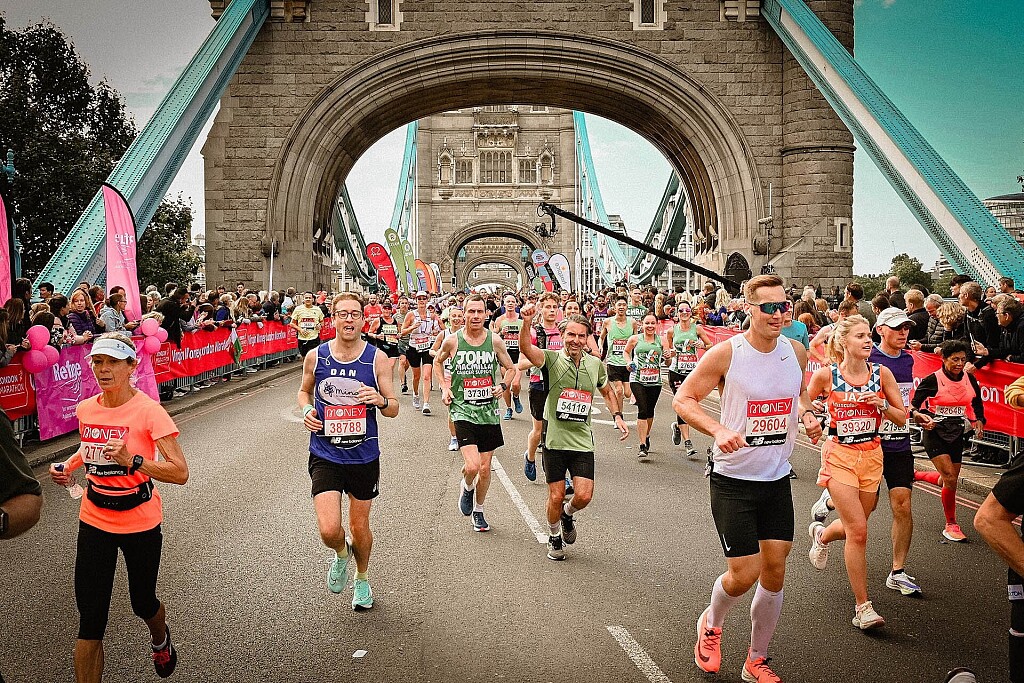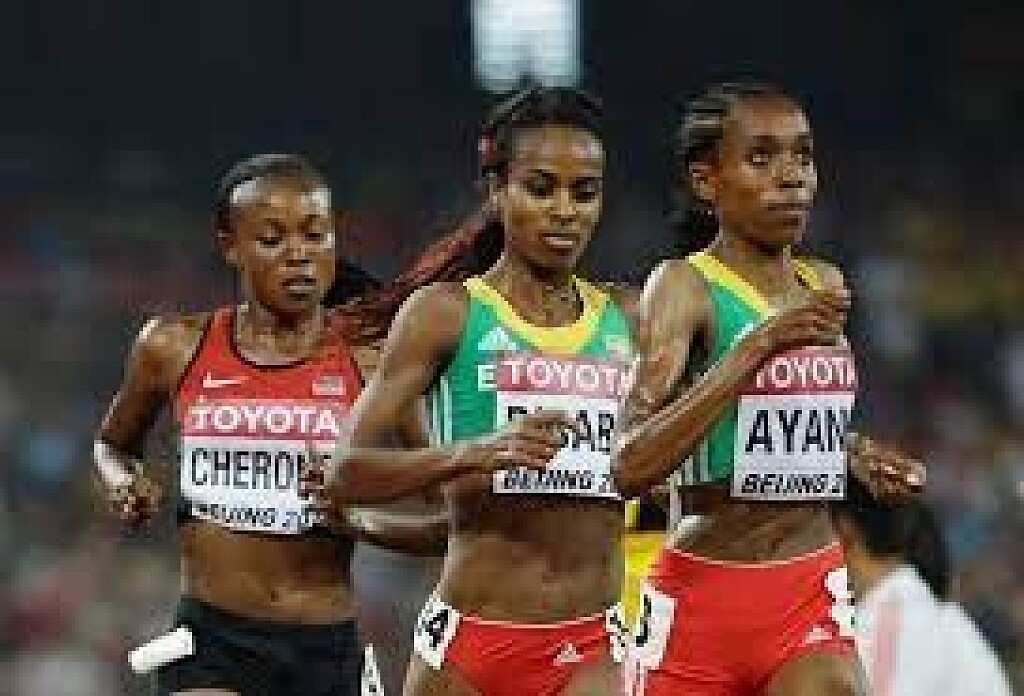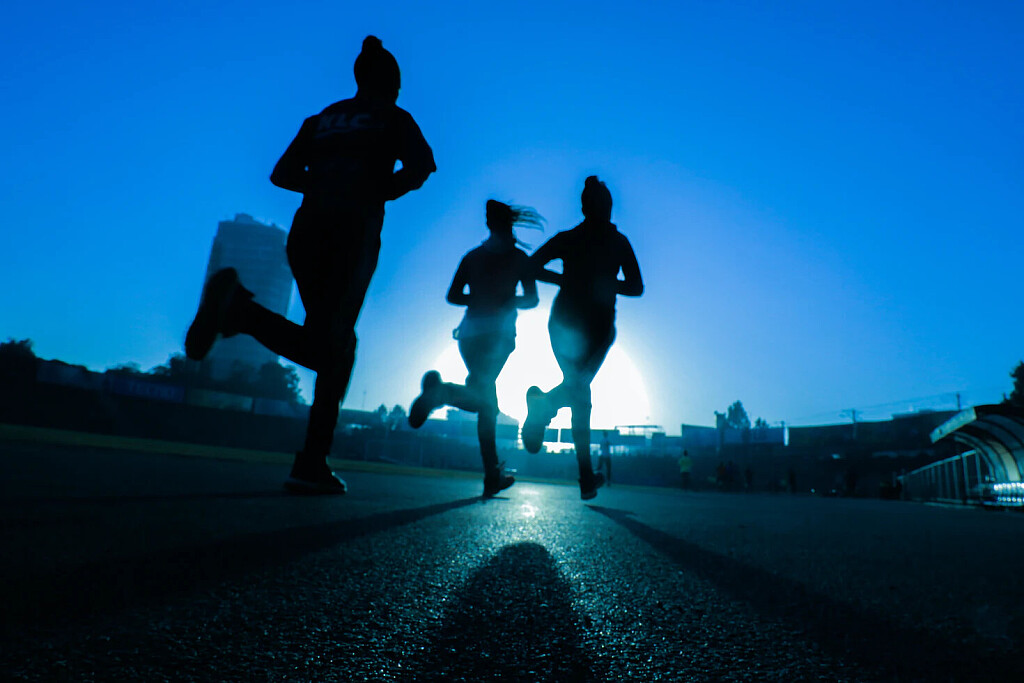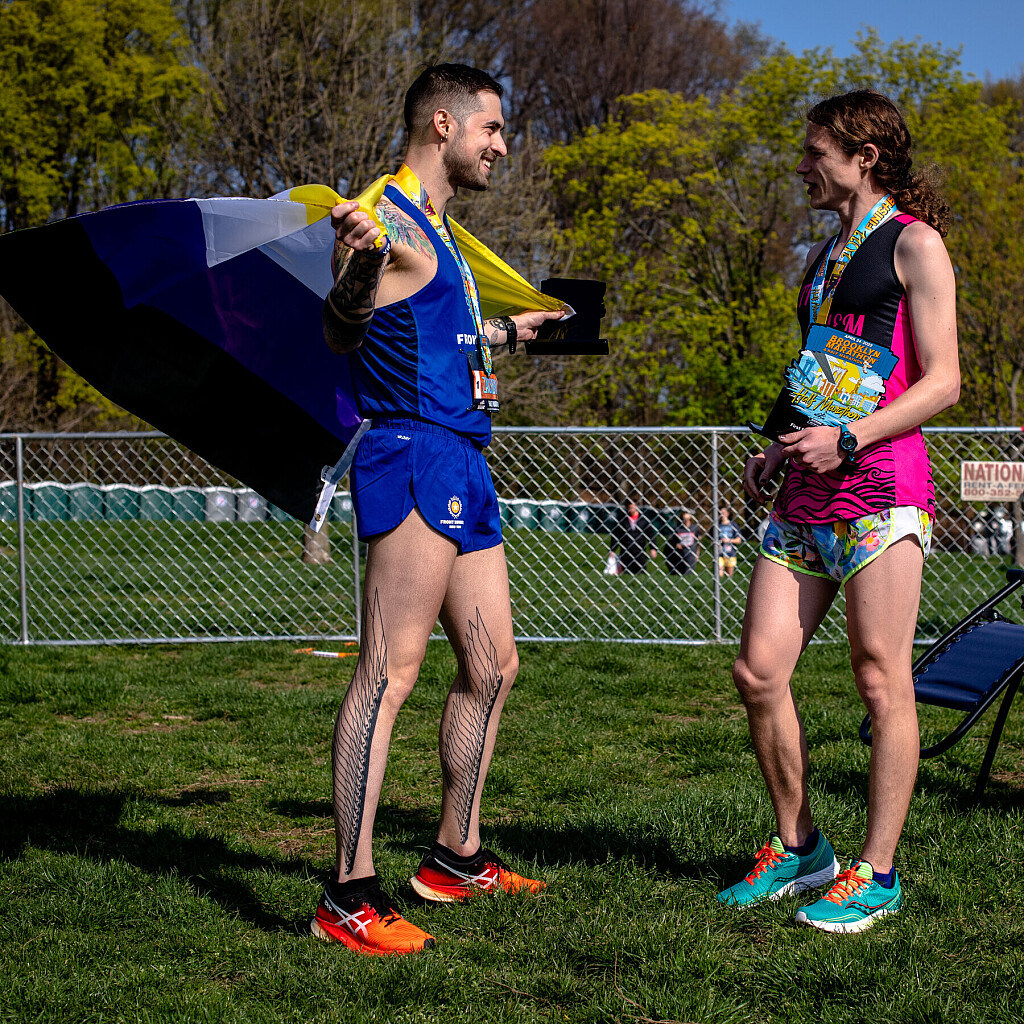Running News Daily
Running News Daily is edited by Bob Anderson. Send your news items to bob@mybestruns.com Advertising opportunities available. Train the Kenyan Way at KATA Kenya and Portugal owned and operated by Bob Anderson. Be sure to catch our movie A Long Run the movie KATA Running Camps and KATA Potato Farms - 31 now open in Kenya! https://kata.ke/
Index to Daily Posts · Sign Up For Updates · Run The World Feed
Incorporate these downhill running techniques into your easy runs to improve your turnover and speed
When you are running downhill, it may seem like an opportunity to pick up the pace. But you need to be smart about how you approach it: running downhill generates more force than running uphill or on a flat surface, putting more pressure on your muscles and joints. Often, runners will hit the downhill too fast or too hard, and they may pay for it later in the race (or even suffer an injury).
There are techniques for running downhill properly, helping you avoid injury and improve your leg turnover and speed.
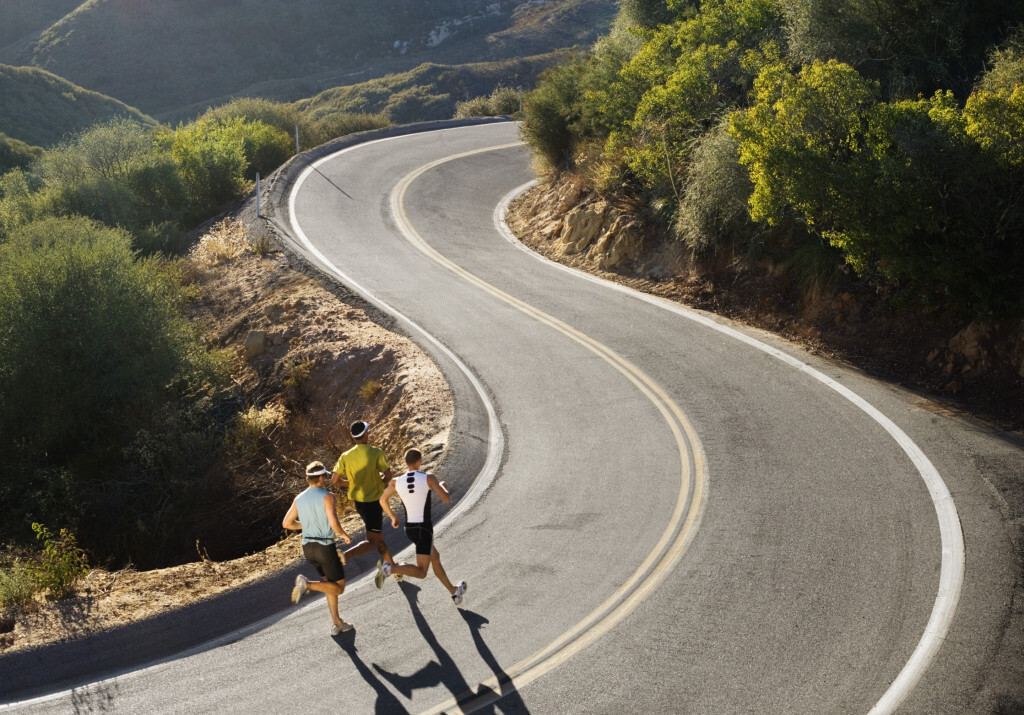
Relax your upper body
Gravity naturally forces your body to land harder on the surface when running downhill. Instead of stomping down a decline or tensing your neck muscles to help slow you down, relax your upper body from your core and up, and let gravity do the work for you.
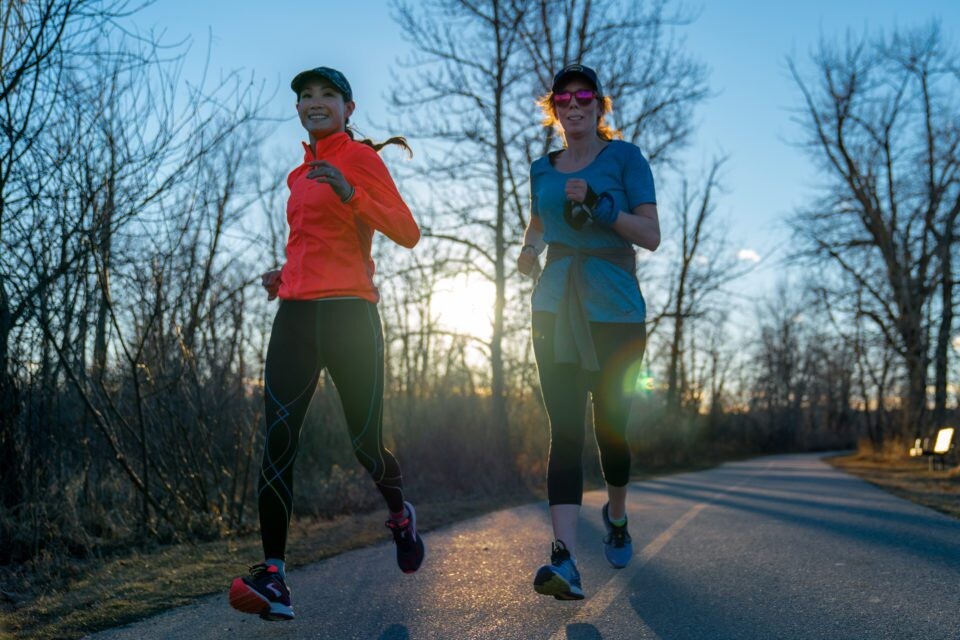
A great way to practice your downhill running is on easy runs. Try to incorporate downhill routes into your training to master the form. Don’t train on a hill that’s too steep. Look for a downhill with a three to five per cent grade and practice your form.
Control your stride
When approaching an uphill or downhill, the goal is to sustain the cadence from the flats. One way to do this is by controlling your stride. Lean slightly forward with your body and hips, forcing your legs to land underneath your body. If you are running down a technical hill, shortening your stride and taking quick, short steps will give you more control and is a great way to avoid injury.
Engage your core and keep your hips forward
Our bodies have a natural tendency to lean back and slam down with our heels, causing us to lose momentum on the downhill and to overstride. A way to prevent this is by engaging your hips and core and pushing them slightly forward—this will force your legs to land under your body, giving you more control of your stride without losing speed.
(09/24/2022) ⚡AMPby Marley Dickinson
The Apple Watch Ultra - The First Apple Watch That Can Go The Distance
We have reviewed Apple watches before. Often times it's simply as a service to endurance athletes who might think about buying one, so we can just say, "It's a nice watch, but it's not really for what you do." Especially those of us who train every day, sometimes twice per day, and have a particular affinity for data and accuracy and workout organization.
Apple watches have great apps, beautiful screens, and the best touchscreens in the game, but their built-in workout profiles and post-data analysis leave something to be desired. And the battery life-oh the battery life! But with the latest "adventure-focused" Apple Watch Ultra, now-for better or for worse-Apple has its hat in the endurance sport's ring with the big boys.
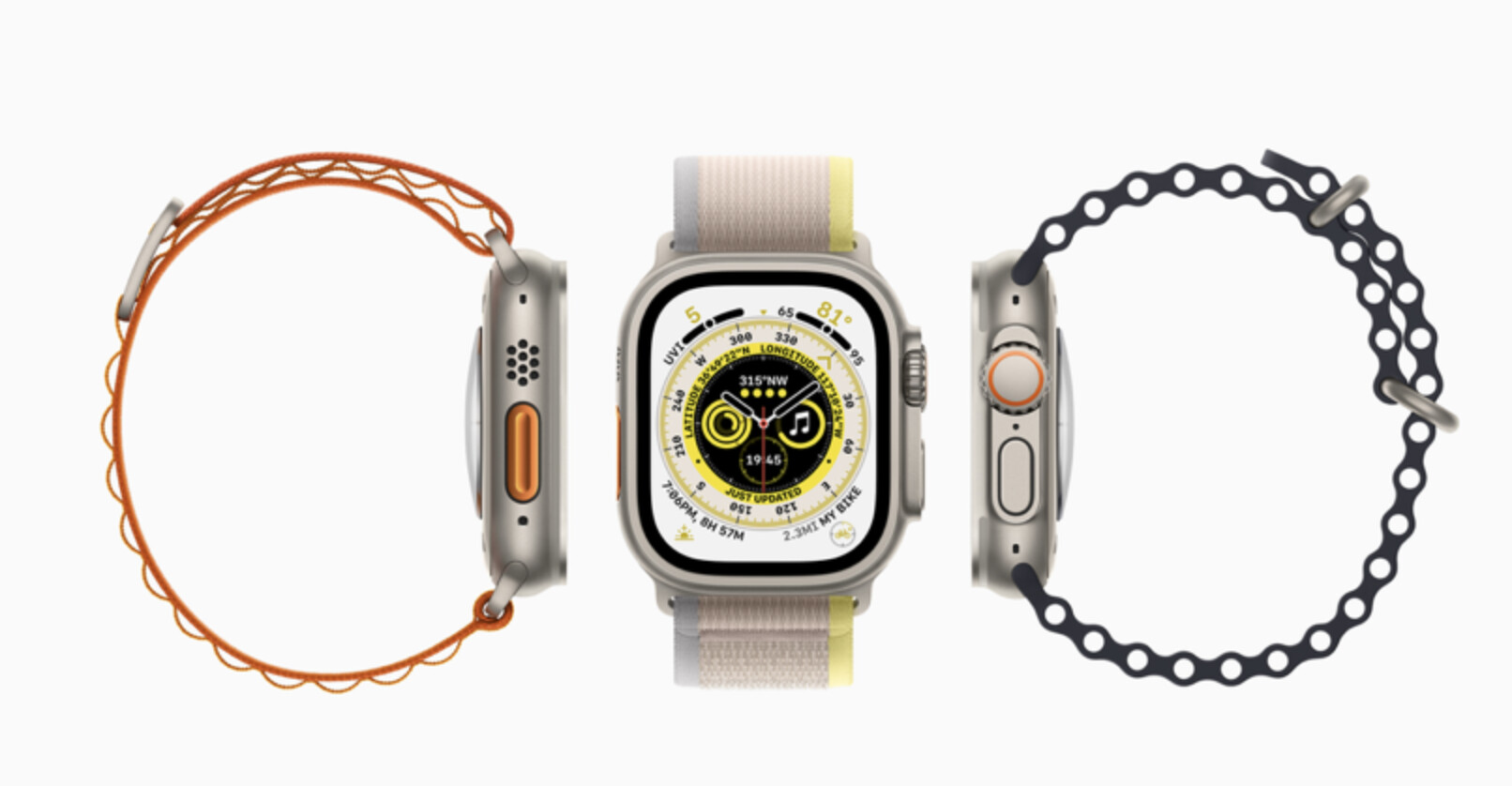
First, we'll look at what's new on the Apple Watch Ultra, talk about what we liked as we've spent hours using it, what we didn't like, and then dive into the endurance sports specifics before giving our conclusions and some competitive analysis. Let's see how it fares:
Apple Watch Ultra: What's New
Before we get into the specifics that make the Apple Watch Ultra an endurance/outdoor contender, let's quickly take a look at what's new:
Apple Watch Ultra: What We Like
As we noted before, the Apple Watch series was always a bit frustrating for athletes-the super limiting battery life meant you had to charge it pretty much every night, and you couldn't go on super long runs or adventures or race almost any ultras with it. Even if you loved everything else about the Apple Watch, that was always a deal breaker. The good news is that with the increased battery life and low-power options, you're looking at a smartwatch that can effectively handle any workout, event, or outdoor adventure that you could throw at it. Apple also teased a low-power workout mode that would give additional battery life, but with reduced resolution of GPS and heart-rate readings coming soon.
Battery life aside, the more robust build of the Apple Watch Ultra makes it feel less like a piece of fine art and more like a tool for training. And it's not just looks-the raised lip of the case protects the precious screen better than previous models by a ton. It's also safe to say that the "Precision Start" function and "Action" buttons are both things that pretty much every other smartwatch ever made already has, but both were gaps missing in Apple's exhaustive function quiver.
With all of this combined, the Apple Watch Ultra is not only a decent (yes, just decent, more on that below) outdoor adventure watch, but it's actually a good watch for anyone training for endurance sports-regardless of distance. Outside of training, Apple's "lifestyle functions"-things like text messaging, weather, music, third-party apps, contactless payment, and (way way) more-are basically unparalleled.
Yes, Fitbit has some fun stuff and a nice screen, but Apple is still lightyears ahead of any competitor when it comes to smartwatch power and integrations. As an example: The three-mic setup is nothing short of magic when making calls on the watch-no one is even remotely trying to do this stuff, except for Apple.
Also, let's not forget that since the untimely demise of the Forerunner 945 LTE, this is one of the only full-function workout watches with legit battery and LTE connectivity. So if you like to go training (or racing!) untethered to your phone, like so many of us do, this is still one of the ONLY ways to stay in touch via LTE. That's not nothing.
Apple Watch Ultra: What Could Be Better
While I won't speak to the dive functions, I would say that many of the "outdoor" functions like navigation and mapping are still pretty on-grid if the Apple Watch Ultra is supposed to speak to the hardcore adventure set. The lack of offline mapping and navigation seems like nothing more than an oversight (or lack of a mapping partner, maybe), and the compass waypoints and retroactive backtracking-while cool-aren't exactly going to save your life in the backcountry.
The battery is better, for sure, but to consider this a 100 miler or backpacking watch over something more expedition-worthy is reckless at best. If you're with a group of friends backpacking for a week, it's probably not a bad choice, but if you're doing a solo multi-day adventure or tackling and unsupported fastest known time (FKT), I wouldn't count on the Ultra as your only navigational tool-like you could for some upper-end adventure watches (the Coros Vertix 2 or the Garmin Fenix 7/Enduro line, for instance).
In terms of more workout-specific capabilities, the battery life (finally) brings the Apple Watch into the realm of ultra runners, but it still lacks some of the data power they really need. Trail runners should be encouraged that this is a watch they can finally do an ultra with (and all of the related ultra training). The multisport crew might complain about a lack of open-water swimming distance alerts that pretty much all open-water ready smartwatches have right now.
And while native running with power is a total game changer, given that currently only Polar and Coros have that built-in, serious runners might take issue with how inflexible the power metrics are in the workout screens. Yes, having average power and average three-second power is great (and the ability to move those metrics around), but lap power is sometimes just as important, if not more.
On the note of workouts, the Apple Watch Ultra does have some cool built-in workouts that you can select when you're feeling uninspired by your training program, and of course you can create and edit your own workouts on watch-without the need for an app. Apple also says there will be a "track detection" feature coming soon that will actually recognize-via satellite imagery-that you're in proximity to a track (U.S. only), and prompt you if you're going to be running on it. If so, you'll choose a lane, and it'll snap the GPS tracking and distances to that track. While other brands like Garmin and Coros have something similar, no one can automatically detect that you're near a track. For better or for worse, it's a reminder that the Apple Watch Ultra is paying (very close) attention to you.
Finally, there's the Gucci-patterned elephant in the room: The price. Sometimes it feels like Apple gets a bit of a pass on pricepoint because it has SO MANY great lifestyle integrations and really cutting-edge hardware, but because Apple wants to play with the long-distance training/adventure crowd now, they need to stand and be compared to other smartwatches in that world (see our competitive comparison below).
Eight-hundred dollars gets you a lot of smartwatch in the endurance/adventure realm-for instance the Garmin Fenix 7 or Forerunner 955 series or the Coros Vertix 2. All of those watches have some very very robust training modes, loads of customizable sport functions, navigation, and insane battery life. No, none have a beautiful screen, smartphone integrations, or LTE like the Apple Watch Ultra, but in terms of working out/navigating the outdoors, they're still on another level.
Conclusions
There's so much to cover in this watch, a reviewer could write a book, but the easiest thing to do is break the new Apple Watch Ultra down into what an Apple Watch has been before, and what this latest version is hoping to be. In the past, Apple watches have been a great lifestyle smartwatch that integrates incredibly with the Apple ecosystem. They play music send and receive texts, check emails-basically most things a smartphone can do now. They also let you go for casual workouts and track your "fitness" (lowercase) as you went.
The Ultra still has all of that. Now, with the Ultra, Apple wants to be considered an endurance sports/adventure outdoors player up against the watches we used to buy to supplement our Apple Watch purchases-from brands like Coros and Garmin and Polar.
Now, instead of having your Apple Watch for going to the office or going out at night, and your "workout watch" for serious runs, backpacking, and outdoor adventure, Apple wants to be all of these things: Leave your Garmin at home, let it die. Does Apple fully pull this off? Not quite, but they're dangerously close. For $800, you're still not playing in the same sandbox as $800 Garmin or Coros watches, but if this watch was $500 (with LTE), those brands would be sweating big time.
Even so, the issues we have with the Apple Watch Ultra aren't core issues-I can't imagine it'd be a tough lift to get offline mapping, especially given that the storage is already there (32gb by the way). It also doesn't seem incomprehensible that Apple could somehow add an average lap running power data field.
Is this the watch that replaces all of your watches? It very well could be.
(09/24/2022) ⚡AMPby Trail Runner Magazine
How to prevent heavy legs while running?
Tired, aching legs are not only a discomfort, they can also discourage potential runners from maintaining a regular training regime. So, to help you keep running, here are a few tips to help with heavy legs - as you will soon see, these are simple yet effective measures to put into place.
1. Warm up
We’ve all heard this advice before, but it is worth taking heed. Warming up before exercise encourages more efficient blood flow to the muscles thus allowing them to contract more efficiently. This should help you get the most out of your workout, whilst also preventing the onset of heavy legs.
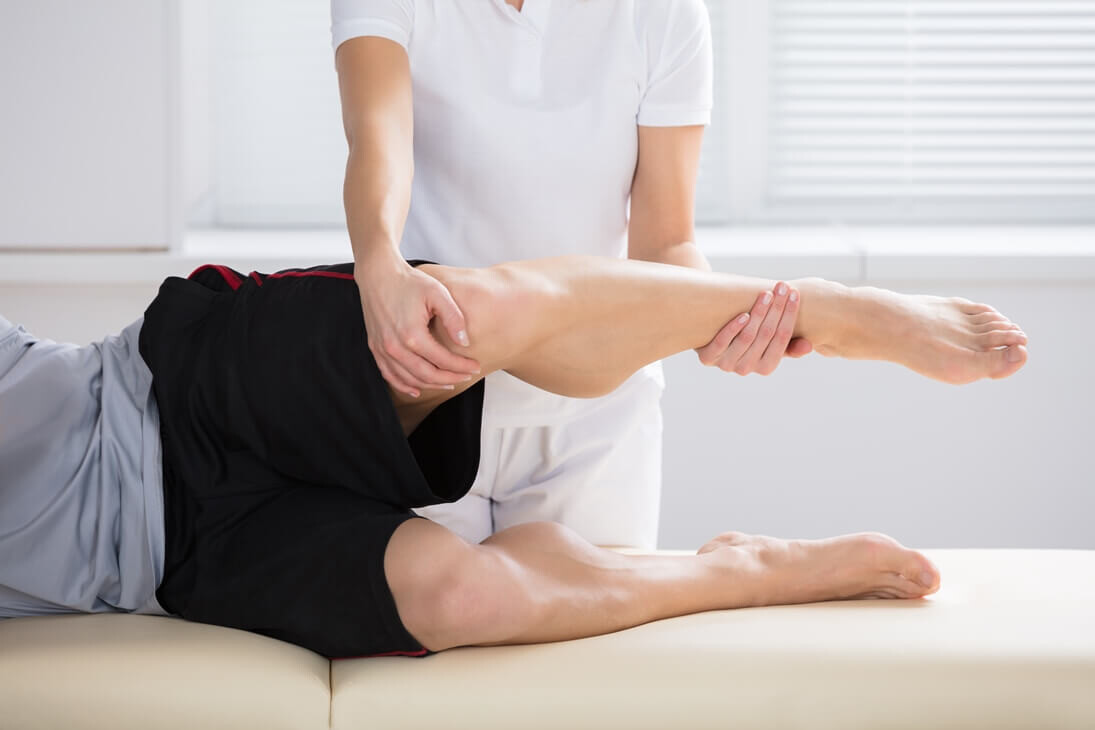
An effective warm up will also deliver nutrients to the muscles more efficiently. This, in turn, can prevent a quick build-up of lactic acid – too much lactic acid is known to contribute to muscle aches and even a burning sensation in the limbs.
The ideal warm up should last for at least ten minutes and it should cover all muscles. Take a look at our blog ‘Stretches for runners’ for more information and easy to follow videos.
2. Adjust your route
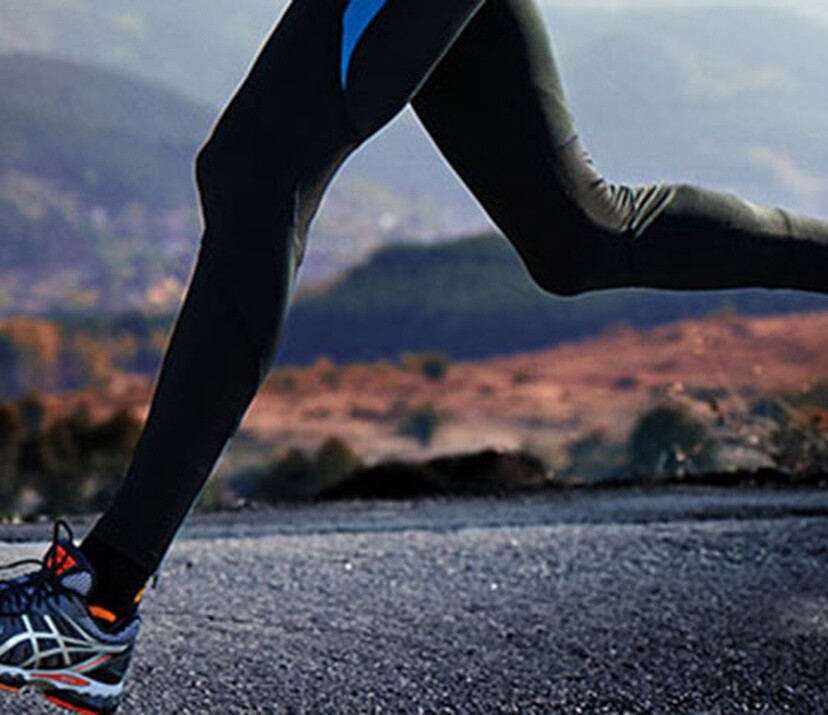
Even though you may have managed to run 10km on Monday, that doesn’t mean you will be able to run the same distance or more on Tuesday. That’s because fatigue in the legs can build up over several days. Therefore, instead of doing the same run over and over, it is essential to allow yourself short runs, or rest days in between long runs. On the whole, it is more important to ensure your run is of a high quality, rather than trying to achieve a certain distance. This will strengthen your muscles and improve performance in the long run.
3. Adjust your stride
Sprinting in short bursts, and keeping the pace slower in between, is thought to be a more effective training regime than continuing to run at a moderate pace. That’s because this approach builds muscle strength and fitness.
As soon as you feel your legs getting tired, try to lengthen your stride, without increasing the pace. This will stretch your muscles and disperse the build-up of lactic acid. As I’ve already mentioned, too much lactic acid is a contributing factor in heavy, painful legs whilst running.
4. Adjust your focus
Running along a stretch of straight road with nothing to look at, or pounding it out on a treadmill in the gym, can be pretty dull. Therefore, with nothing else to focus on, it is likely you will soon become absorbed in the tired feeling of your legs.
To distract yourself from this, try listening to music or a podcast. Alternatively, running a new route, or a route with lots of twists and turns, should give you something else to turn your attention to.
How to relieve heavy legs after running
5. Stretch
Just as warming up before a run is important, so too is stretching out your muscles afterwards. If you do not do this, your muscles are more likely to cramp and become painful the next day. Stretching your muscles also helps to minimise the effects of lactic acid in the muscles, and also makes you less prone to developing injuries.
6. Rest
A small amount of rest will speed up the recovery process, and prevent further injury from occurring. Rest will also help ensure your legs are ready for their next run, should you decide to do one in the days ahead.
Our blog ‘How to recover from a workout’ will provide more information about what to do to help your body after a period of exercise.
7. Massage your legs
If your legs need that extra bit of help to get moving the next day, then a massage may be just the thing. This encourages blood flow to the deep tissues thus removing waste products such as lactic acid from the muscles. Not only that, a massage may encourage nutrients and water to enter the muscles, therefore, repairing and restoring the tissue.
Massages are a particularly good idea if you are training hard and regularly, as this also helps to prevent injury to muscle.
8. Check for injuries
As a runner, the worst thing you can do is run on injured joints or muscles. Not only will your legs feel very painful, but it is likely to cause lasting damage. Therefore, do not battle on regardless of aches and pains, and do not ignore warning signs of pain and muscle fatigue as developing strains, sprains or stress fractures will take you off the running scene for a long time. It’s definitely not worth running for an extra mile if it means you can’t put your running shoes on for the next couple of months!
Remedies for tired legs
9 – Watch your diet
Not only is it important to run whilst full of nutrients to sustain you, but it is also critical to stay properly hydrated. Just ensure you take small sips, however, rather than big gulps as, coupled with the movement of running, too much water has the potential to cause digestive upset. If you are going for a particularly hard or long run, you could consider taking an energy bar with you as well.
You need to feed your muscles by giving them the correct balance of protein, carbohydrate, healthy fats and salt. Wholegrain varieties of bread, pasta and rice are higher in fibre and energy than their white or refined counterparts. Also, treating yourself to a small piece of dark chocolate after each run will not do any harm.
(09/23/2022) ⚡AMP
by A. Vogel
Why more men than women are running in ultra and trail races?
A recent study published in the Sport and Society journal set out to determine what barriers prevent women from entering ultra-distance races. It’s certainly not news that far more men sign up and race ultra and trail races than women.
Hardrock 100 recently added changes to their lottery system so that the percentage of women that enter the lottery is equal to the percentage of women racing, and other races are following their lead and promoting inclusivity in ultra and trail racing. In a sport where we are seeing women beat men at longer distances, why are so few women signing up to race?
The study

The research was conducted via online questionnaires sent to participants of all genders in two ultras in the U.K., the Highland Fling 85 km (53-mile) Ultratrail Race, and the Jedburgh Three Peaks Ultra. Jedburgh Three Peaks Ultra is a 61 km (38-mile) race that notably takes a firm stance on promoting inclusivity within their race and the larger Jedburgh Running Festival, offering a non-binary category for all of their races and encouraging transgender athletes to sign up in the category they identify with.
Following the online questionnaires, one-on-one phone interviews were conducted to compare the racing and training experiences between men and women and to determine what differentiated them.
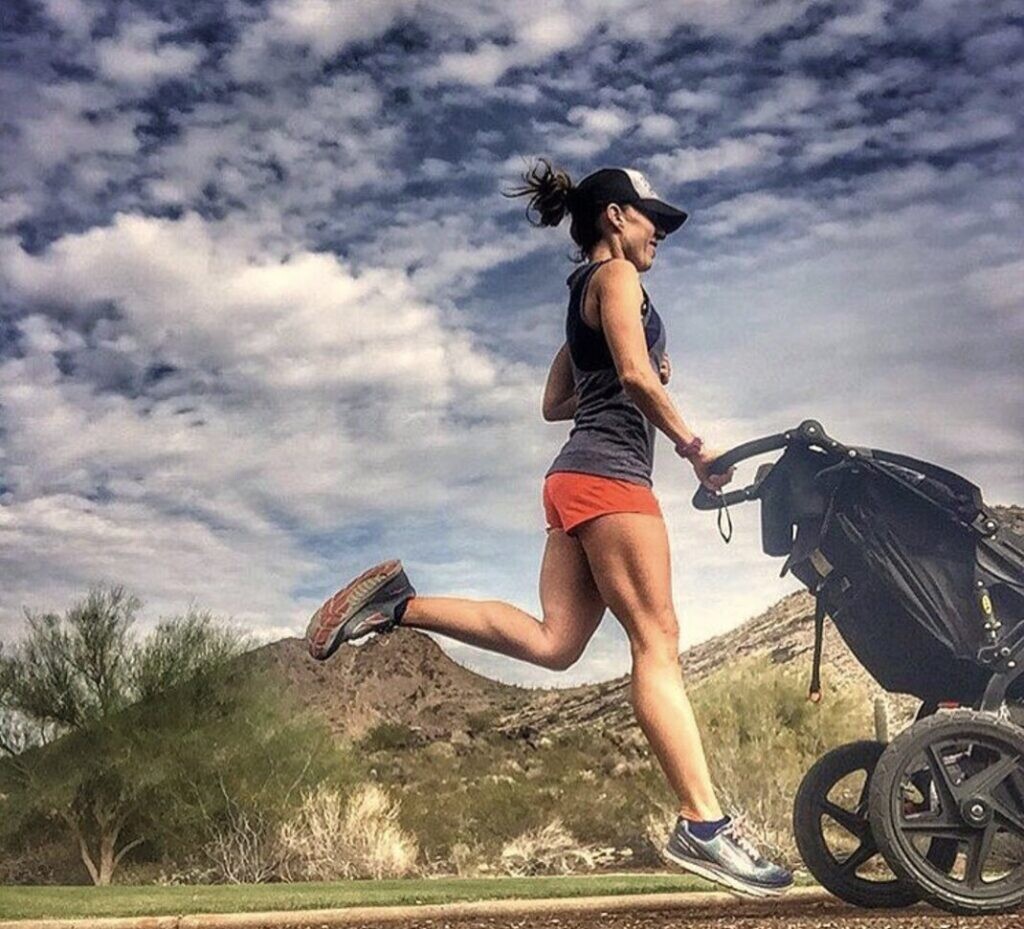
The takeaway
The conclusions researchers arrived at probably aren’t surprising to many women. While time was a factor impeding both men and women from training for longer or terrain-specific (ie. trail) races, it impacted women more. Interestingly, more men than women within the study had dependents, and the study determined that traditional gender roles seem to be the greatest barrier to women signing up for ultras.
Both male and female participants shared that negotiating time for running with family and work commitments required considerable planning and prioritizing and that sometimes this process of negotiation efficacy was a family or team effort.
"Despite gradual shifts towards egalitarian family roles in society, more restrictive traditional gender roles persist, and these may still influence the negotiating-efficacy of female ultrarunners more than males, thereby potentially reducing the availability of female training time,” researchers said.
While this suggests that women are still carrying a greater burden of workload within families, the study concluded with optimism, reporting that more women are signing up for races than ever before. Researchers determined that the current historical influence of traditional gender roles is diminishing, and the ratio of women to men in ultra and trail races should continue to improve.
(09/23/2022) ⚡AMPLeg pain? Four running mistakes you’re making
Running – how hard could it be? After all, you’re just putting one foot in front of the other, right?
Unfortunately, it’s exactly that attitude that’s behind so many leg and foot injuries!
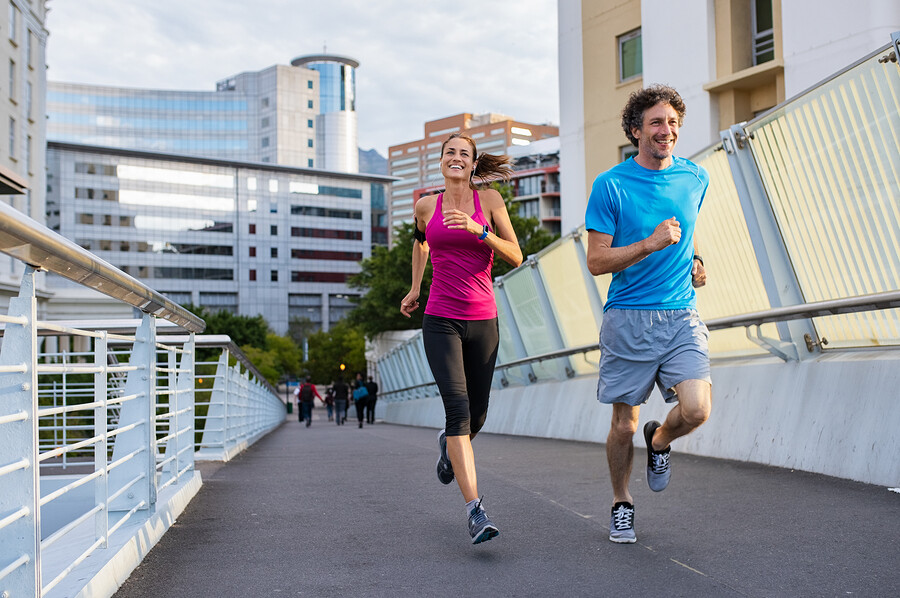
There’s much more to running than just putting on a pair of trainers and going for it. Believe it or not however, there’s a lot going on behind the scenes when you go out for a run.
And with that comes the risk of lower leg pain – especially if you have no idea how to run properly!
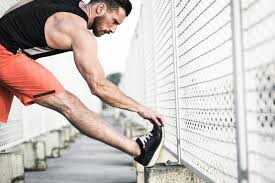
What kind of problems might I run into?
Injuries and falls aren’t the only problems you might run into when you go out for a jog – each step you take when you run sends shockwaves up your legs.
Over time, these shockwaves can damage the tissue, ligaments and cartilage in your legs.
This can lead to a whole host of different lower leg pains, including:
Microfractures
Muscle tears
Runner’s knee
Shin splints
Needless to say, any one of these problems may result in lower leg pain strong enough to stop you from running… or worse!
As such, you’ll want to make sure you that you’re running properly, and not making one of these common running mistakes…
Running mistake 1: wearing the wrong shoes
A good pair of shoes is essential – think of them like shock-absorbers for your feet, soaking up and distributing the impacts that come with running and minimising the stress on your lower legs.
When choosing running shoes, it’s essential that you select shoes that are designed with your particular running-style in mind. This directly affects how much of the impact your feet and lower legs are exposed to.
For example, if your footfalls tend to be on the outside of your soles, then you’ll want extra thickness and padding in those parts of your shoe.
Running mistake 2: not warming up
While it can be tempting to skip the pre-run warmup (especially when you’re short of time), we strongly advise against it!
Warm-up exercises “activate” your body, signalling to your organs and muscles to prepare for physical activity.
In particular, this results in increased flexibility, speed and range of motion in your limbs and muscles, reducing your chances of accidentally overstretching your lower legs.
Not to mention, they also prepare you for exercise by starting up blood flow and psyching you up!
When preparing for a run, we recommend cycling through a range of mobility movements for your lower legs – we show our clients complete warm up routines that have them ready to run in under 5 mins.
After that, it’s a good idea to not dive straight into your run, but to open with a brisk walk or gentle jog, gradually working your way up to your normal pace.
Running mistake 3: overstriding
Many people assume that having long strides is a good thing.
However, that’s not always the case!
Think of the amount of force that goes up your legs every time you take a step.
When you overstride, your heel strikes the ground at a harsher angle, sending greater force up your leg than shorter strides would and consequently, leading to a higher risk of lower leg pain.
Ideally, you’ll want your feet to land midsole, with your foot closer to your body. This results in the optimum distribution of force, and is the safest way to run.
Luckily, this type of problem can be trained around with the help of a physiotherapist.
At Physio AUS, our Highett physio work with all sorts of athletes, runners included, to improve their technique.
Running mistake 4: biting off more than you can chew
Running is deceptively simple – after all, the only thing you’ll need are some shoes and a stretch of road to get started.
Unfortunately, that’s also why so many first-time runners end up with lower leg pain – they inadvertently wind up pushing their bodies too far!
Instead, we recommend starting small and gradually bumping up the distances and times.
It’s also a good idea to take periodic “rests” to give your body time to bounce back.
How an Highett physiotherapist helps you run
If you’re keen to get back into running, you may want to touch base with your local physiotherapist.
Physiotherapists may be able to help runners such as yourself get back into running a number of ways.
Conditioning and training that help you get back into running
First-time runners and people who are getting back into exercise after a long time away are especially prone to lower leg pain.
As such, we suggest booking an appointment with your local Highett physio before you take to the track.Using a range of exercises, stretches and other treatments, your Highett physio will help condition, enhance resilience and build strength in your lower leg muscles.
(09/23/2022) ⚡AMPby Physio Aus
Are records going to be broken at the Berlin Marathon this weekend?
The fall marathon season kicks off this Sunday, Sept. 25, in Germany for the 48th annual Berlin Marathon, which is the first of four Abbott World Marathon Majors over the next six weeks. The biggest name is distance running Eliud Kipchoge returns to the course he set the world record on four years ago, but the question everyone is asking is whether he can run 2:01:39 again?
He also looks to become the second man to win four Berlin Marathon titles, joining the great Haile Gebrselassie, who won four consecutive between 2006 and 2009.
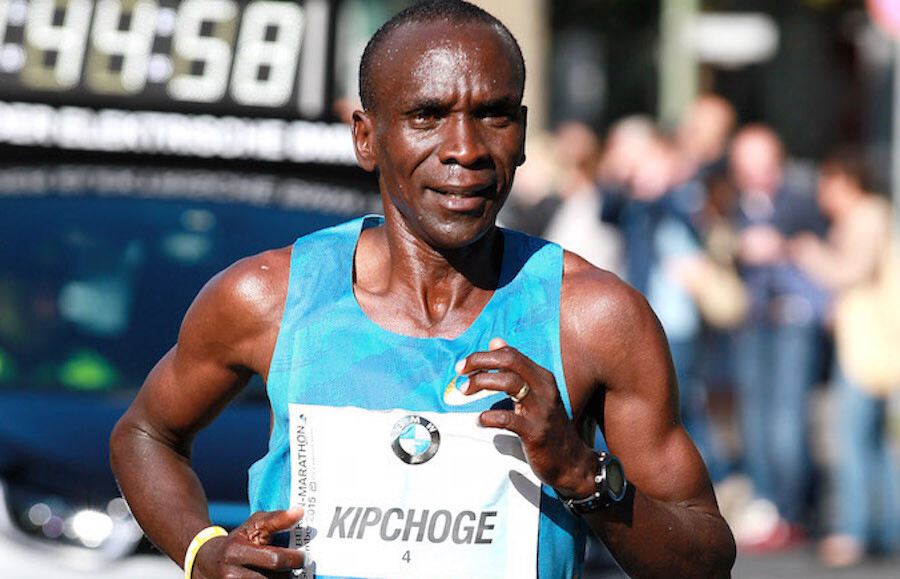
Kipchoge isn’t the only athlete chasing a record in Berlin. U.S. marathon record holder Keira D’Amato has made a quick turnaround from her eighth place finish at World Championships and has her eyes on the American record of 2:19:12, which she ran in Houston earlier this year.
Vancouver’s Natasha Wodak is the lone Canadian in the elite field, and she is looking to take advantage of the fast Berlin course. In 2020, Wodak ran the second fastest marathon time by a Canadian woman, 2:26:19, at The Marathon Project in Arizona. She followed up that performance with an impressive 13th place finish in the marathon at the 2020 Olympics Games.
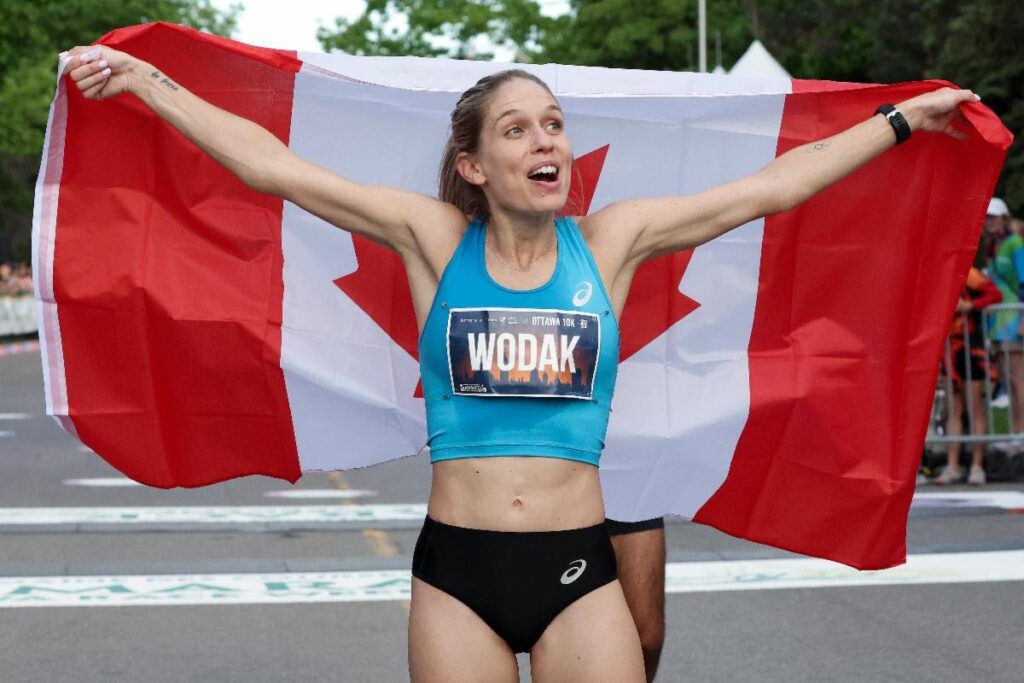
Wodak hopes to shake 90 seconds off her marathon PB Sunday to challenge Malindi Elmore’s Canadian record of 2:24:50 from 2019.
The weather
The race starts at 9:15 a.m. local time on Sunday (which is 3:15 a.m. E.T. in Canada). The temperature looks to be perfect for marathoning — between 10 C and 14 C, with next to no wind.
Men who hope to finish near Kipchoge
It is well-known that Kipchoge is the favorite, but who are the guys most likely to finish second or stick with him until 30K?
Ethiopia’s Guye Adola, who was second to Kipchoge in 2017, won Berlin last fall in 2:05:45. The win marked his first major victory after struggling with injury earlier in his career. Like Kipchoge, Adola is fast and knows what it takes to win on this course. In 2017, he ran the fastest marathon debut in history on this course but since has not run near 2:03.
Adola is the only other sub-2:05 runner, which Kipchoge is bound to finish under. If anyone else wins this race, it would take a miracle, or mean both Kipchoge and Adola have blown up.
Ghirmay Ghebreslassie of Eritrea won the 2015 World Championships in Beijing and the New York Marathon in 2016 after missing the podium at the Rio Olympics. Although Ghebreslassie has the experience, in a sub-2:05 race, he may not have the speed to keep up with Adola and Kipchoge.
Marley’s Pick: Eliud Kipchoge (KEN) – 2:02:29
Can Keira D’Amato become the first American winner?
D’Amato has the fastest time out of the 24 runners in the women’s elite field with a time of 2:19:12, but she has only had nine weeks to prepare for Berlin after her 2:23:34 at the World Championships in Eugene. She was only selected for the U.S. team after Molly Seidel dropped out a few weeks before the championships.
To run 2:23 at worlds off not much training is impressive and should be a confidence booster for D’Amato on a faster Berlin course.
Many of the top Kenyan and Ethiopian runners will be competing later this fall, but there are other sub-2:22 runners in Berlin. Kenya’s Nancy Jelagat Meto (2:19:31 – Valencia) and Vibian Chepkirui, the winner of the Vienna City Marathon in 2:20:59 in April, have the experience and speed to deny D’Amato the title.
Rosemary Wanjiru of Kenya, a 65:34 half marathoner, is making her marathon debut here in Berlin. Although this is her first marathon, she will likely be in contention most of the race.
Marley’s Pick: Rosemary Wanjiru (KEN) – 2:18:39.
(09/23/2022) ⚡AMPby Marley Dickinson
BMW Berlin Marathon
The story of the BERLIN-MARATHON is a story of the development of road running. When the first BERLIN-MARATHON was started on 13th October 1974 on a minor road next to the stadium of the organisers‘ club SC Charlottenburg Berlin 286 athletes had entered. The first winners were runners from Berlin: Günter Hallas (2:44:53), who still runs the BERLIN-MARATHON today, and...
more...Eliud Kipchoge ready for fast times in Berlin
Eliud Kipchoge is ready for a very fast race in the BMW BERLIN-MARATHON on Sunday which may well lead him to break the world record here for the second time.
The double Olympic champion, who set the current world record of 2:01:39 in Berlin four years ago and also broke the two-hour barrier when he ran 1:59:40.2 in a race in Vienna in 2019 which did not conform to regulations, will start as the clear favourite.
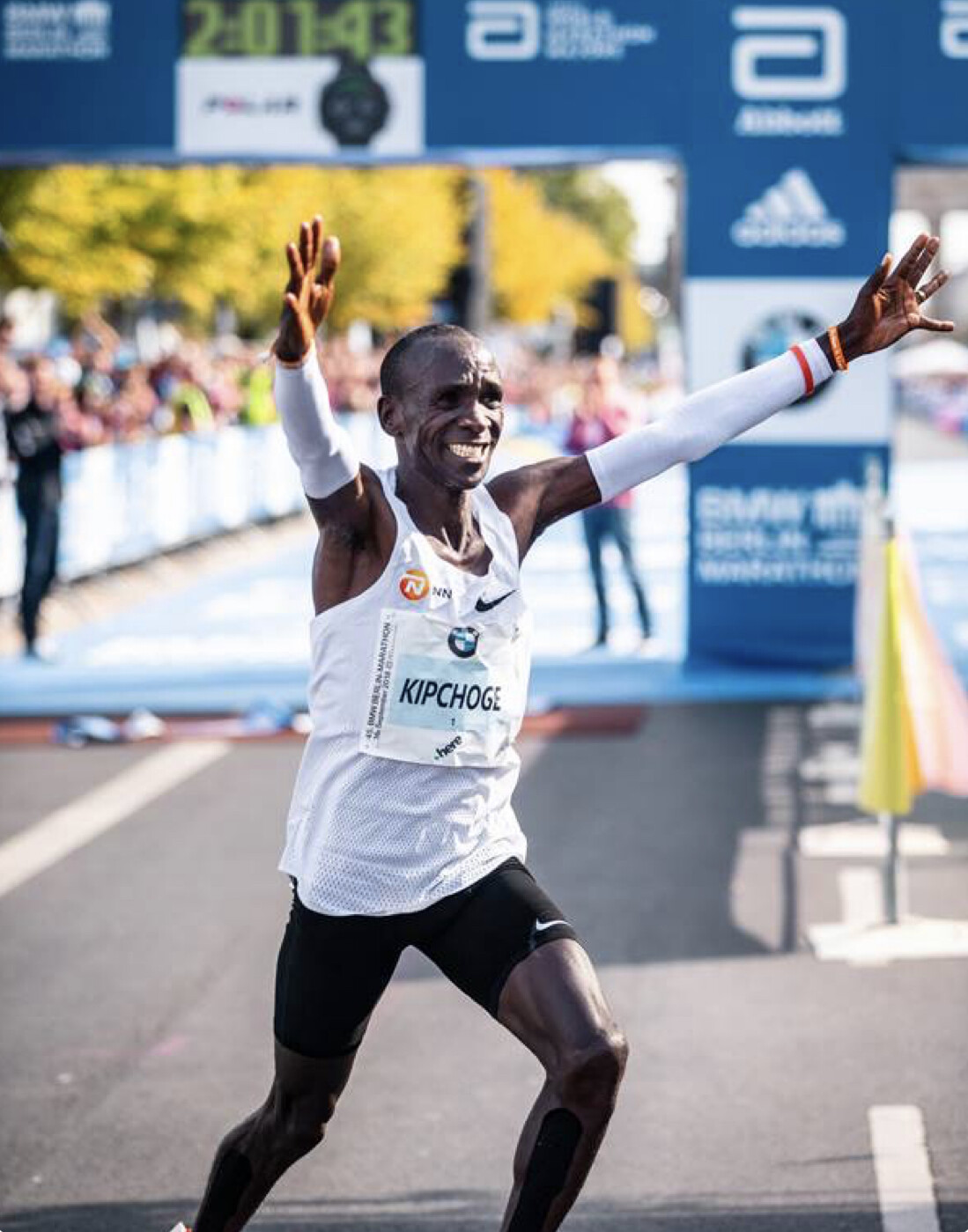
Organisers of the BMW BERLIN-MARATHON have registered 45,527 runners from 157 nations for the 48th edition of the event. Germany’s most spectacular road race is part of the Abbott World Marathon Majors (AWMM) and is also a Platinum Label Road Race of the international athletics federation, World Athletics.
The 37-year-old Kenyan held back from making any hard and fast promises when he spoke two days before the BMW BERLIN-MARATHON. “I’d like to thank the organisers for letting me race again in Berlin after four years and expect a very good race. I’ve trained well as usual – every training day is a challenge.”In response to the question at the press conference, what would be “a very good race” for him, Eliud Kipchoge answered: “A very good race is a good race.”
That got the audience on his side before he added: “I want to inspire people and if a course record comes out of this at the end, I will appreciate it,” added this outstanding athlete. It should be noted that the course record is, of course, the world record, but Eliud Kipchoge was careful not to utter these words.
The world record holder, whose career so far has brought him victory in all but two of his 18 marathons, could well achieve his fourth win in Berlin after taking the title in 2015, 2017 and 2018. That would bring him equal with the Ethiopian legend Haile Gebrselassie as the two men with most wins in Berlin. If the world athlete of the year for 2018 and 2019 is in world record form, Eliud Kipchoge should prove unbeatable on Sunday.
On the other hand, the elite field has plenty of strength in depth. Heading the list of challengers is last year’s champion Guye Adola from Ethiopia, winning the title in unseasonably warm conditions in 2:05:45 and beating the Ethiopian superstar Kenenisa Bekele into the bargain.
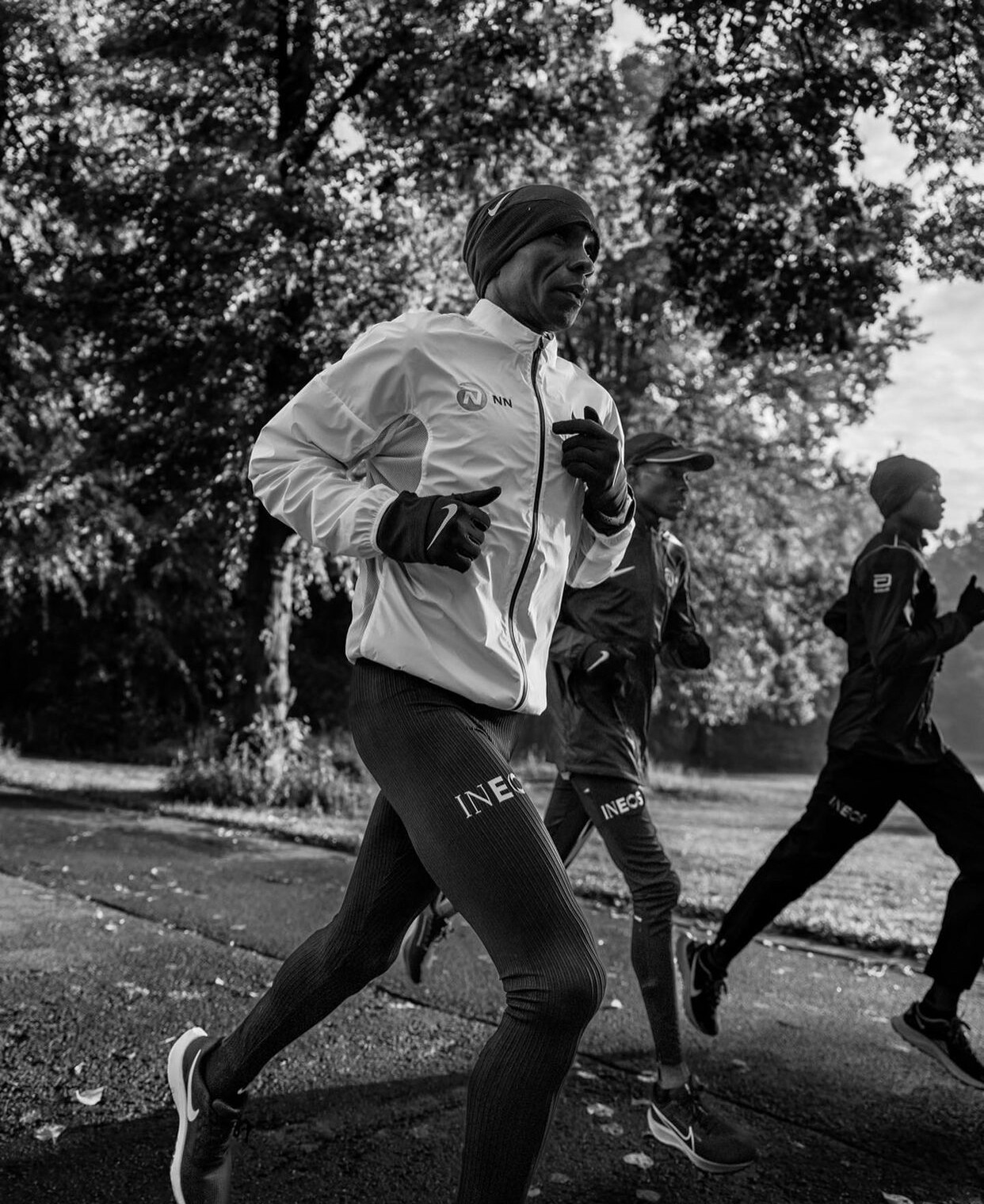
It was in Berlin in 2017 that Guye Adola ran what remains his personal best of 2:03:46 and on his debut at the distance. Only Eliud Kipchoge finished ahead of him though from time to time Adola took the lead. “I have prepared well and look forward to the race,” said the 31-year-old, who described Kipchoge as “a hero.”
The BMW BERLIN-MARATHON has greater strength in depth among the men’s elite field than ever before. As many as 18 runners have personal bests under 2:08. Among them is Ghirmay Ghebreslassie who caused a surprise when winning the world title in 2015 and also won in New York the following year. The Eritrean athlete has a best of 2:05:34 which he set in finishing third in Seville in February.
“It’s a big challenge to run in such a field and against Eliud Kipchoge. I’ll do my best and my aim is a place on the podium,” said Ghirmay Ghebreslassie.
An unusually large number of Japanese runners will be among the elite starters, the reason being that they are trying to qualify for the 2024 Olympics. There will be 13 of them with personal bests of under 2:10 in the BMW BERLIN-MARATHON. The fastest of them is Ryu Takaku with a best of 2:06:45.
The leading German in the field is Johannes Motschmann, who was a member of the German team at the European Championships which won the silver medal in Munich. Despite a short recovery time of six weeks since that competition, the 28-year-old wants to improve his personal best of 2:12:18 in the direction of 2:10.
The race in Berlin is the biggest of my career so far. Since I’m a hometown boy here, I’d even rate it above the European Championship marathon,” said Motschmann, who runs for the Marathon Team Berlin.
The Austrian record holder, Peter Herzog, will also be aiming to take advantage of conditions at the BMW BERLIN-MARATHON and run faster than ever before. His current best is 2:10:06 and his ambition is to become the first Austrian.
While a double world athlete of the Year in Eliud Kipchoge will take centre stage, a former star of world sport will be running some way behind him: the Brazilian football legend Kaká, a member of the team which won the World Cup in 2002, and also a Champions League winner and Footballer of the Year.
“I definitely wanted to run a major marathon and asked friends who recommended Berlin to me. That’s why I’m here. On Sunday I want to run 3:40. The marathon is something very special in that we, as mass runners, run together with the elite. I’m very excited,” admitted Kaká at the press conference.
Elite runners with personal bests
Eliud Kipchoge KEN 2:01:39
Guye Adola ETH 2:03:46
Ghirmay Ghebreslassie ERI 2:05:34
Dejene Debela ETH 2:05:46
Mark Korir KEN 2:05:49
Ashenafi Moges ETH 2:06:12
Tadu Abate ETH 2:06:13
Bethwel Yegon KEN 2:06:14
Awet HabteERI2:06:25
Ryu TakakuJPN2:06:45
Limenih Getachew ETH2:06:47
Hiroto InoueJPN2:06:47
Zablon Chumba KEN 2:07:18
Kenya Sonota JPN 2:07:23
Kento Kikutani JPN 2:07:26
Kazuki Muramoto JPN 2:07:36
Tadashi Isshiki JPN2:07:39
Atsumi Ashiwa JPN 2:07:54
Daisuke DoiJPN2:08:13
Rintaro TakedaJPN2:08:48
Yuki Matsumura JPN 2:09:01
Peter Herzog AUT 2:10:06
Johannes Motschmann GER 2:12:18
Third photo: Kipchoge's first run in Berlin
(09/23/2022) ⚡AMPBMW Berlin Marathon
The story of the BERLIN-MARATHON is a story of the development of road running. When the first BERLIN-MARATHON was started on 13th October 1974 on a minor road next to the stadium of the organisers‘ club SC Charlottenburg Berlin 286 athletes had entered. The first winners were runners from Berlin: Günter Hallas (2:44:53), who still runs the BERLIN-MARATHON today, and...
more...Here’s how to master that explosive finishing kick, become a pro at finishing hard on tired legs with these workouts
Many people believe you’re either born able to finish fast, or not–but that’s not actually the case. The ability to finish strong on tired legs can be learned and improved on. Coach and author Steve Magness says that while people assume they’re limited by genetics, “that stuff can be manipulated to a degree.”
Here are three workouts to add to your routine so that your finishing kick astounds everyone around you. While these are easily done on a track, you can take them to the road or wherever you prefer to train, and your measurements don’t have to be exact. If you’re a newer runner, feel free to modify the workout by doing less reps, and gradually adding more as you get stronger.
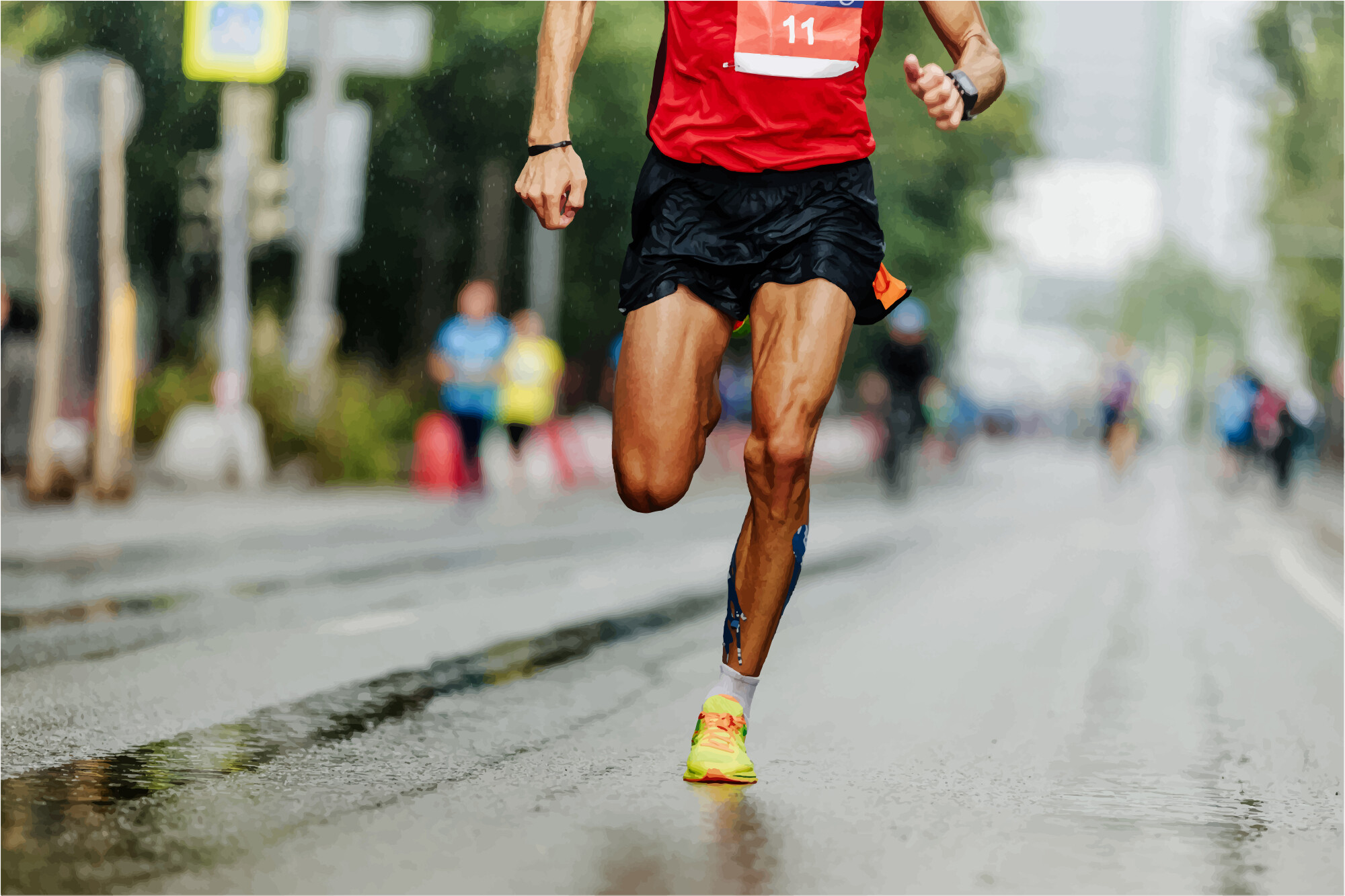
500 meter repeats with bounding
Bounding involves taking long, exaggerated strides, driving off the back leg and lifting the front knee as high as you can. These increase your force requirement and muscle-fibre recruitment. Adding the kick at the end of each repeat forces you to switch between speed and fatigue resistance.
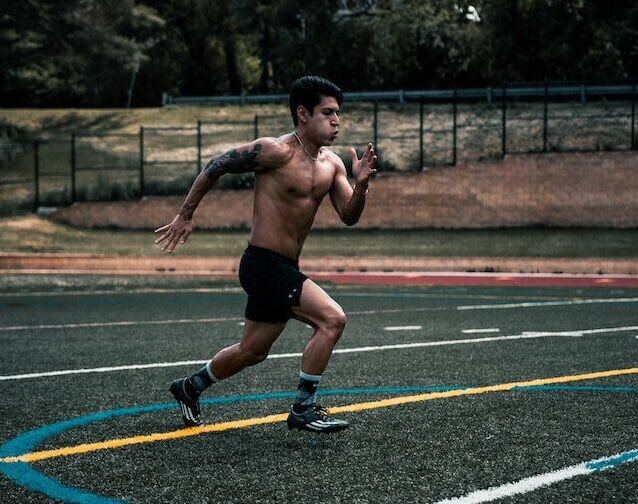
Warm up with 10 to 15 minutes easy running
Try four to six 500m repeats, with the first 200m at 5K pace or faster, moving straight into 100m of bounding, followed by a 200m kick finish.
Cool down with 10 minutes easy running
800 meter accelerations
For each rep, run the first 400m at 10K race pace, the next 300m at 5K pace and the last 100m full-out.
Warm up with 10 minutes easy running
Run four to six 800m repeats with three minutes rest in between each 800m
Cool down with five to 10 minutes easy running
Practicing relaxing to open up on that final stretch
I had a track coach in high school that had us repeat “relaxed runners are fast runners” every practice. He was right–runners tend to tense up during the end of a race, trying to force a fast finish, and end up actually slowing down. Magness suggests shaking it out. “One of the best things you can do is to just drop the arms, open up the hands and shake them out for a second.’
Aim for faster turnover and even, controlled breathing. Like anything else, running relaxed when you’re tired takes practice, and it’s normal for it to feel challenging at first.
(09/23/2022) ⚡AMPby Running Magazine
Aleksandr Sorokin wants to become the first man to run 200 miles in 24 hours
On Sept. 17, the world’s fastest ultrarunner, Aleksandr Sorokin of Lithuania, demolished his previous 24-hour world record from a year ago, running 319.61 kilometers at the IAU 24-hour European Championships in Verona, Italy. There is no doubt that Sorokin’s record will stand the test of time, but the 40-year-old ultrarunner says he’s not done yet with the 24-hour distance.
After breaking Yiannis Kouros’s long-standing 24-hr record of 303.506 km a year ago, with 309 km, Sorokin has once again redefined human performance, beating his old mark by more than 10 kilometers.
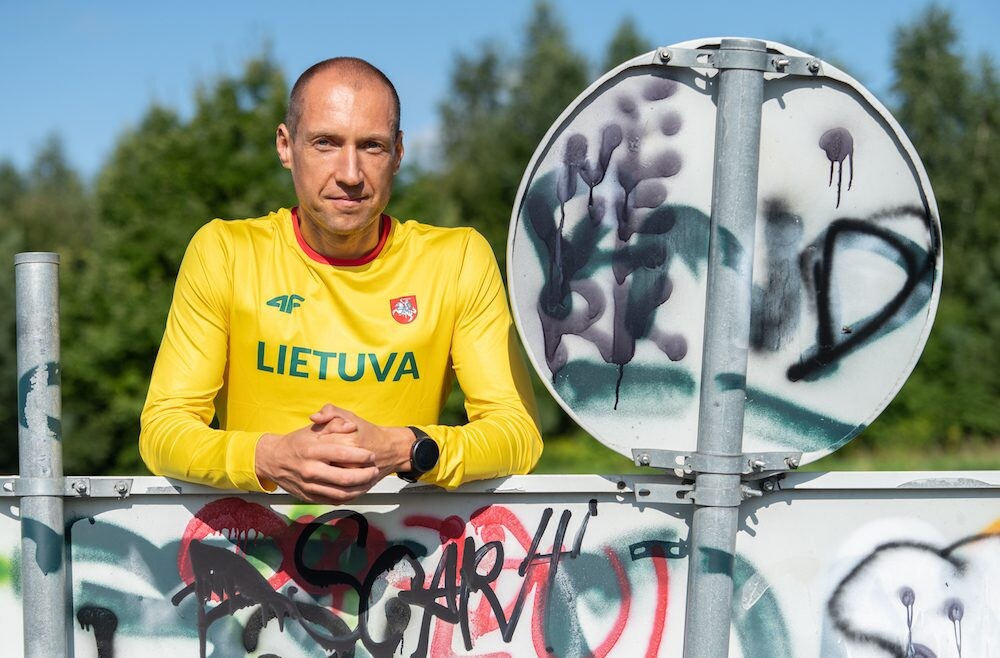
No runner has ever covered 200 miles (321.86 km) in 24 hours, but Sorokin has come the closest, with his most recent record of 319.61 km. “I have unfinished business with the 24-hour distance,” he says. “There’s much more to come.”
Ten kilometers is a significant improvement for Sorokin in a year, but he says he hasn’t changed much in his training. “Nothing has changed, but little by little, my body has become faster,” he says. “We’ve added a little more mileage this time around, too.”
Three to four weeks out from the European championships, Sorokin’s peak training weeks were between 360 and 380 kilometers (an average of 50-plus kilometers per day).
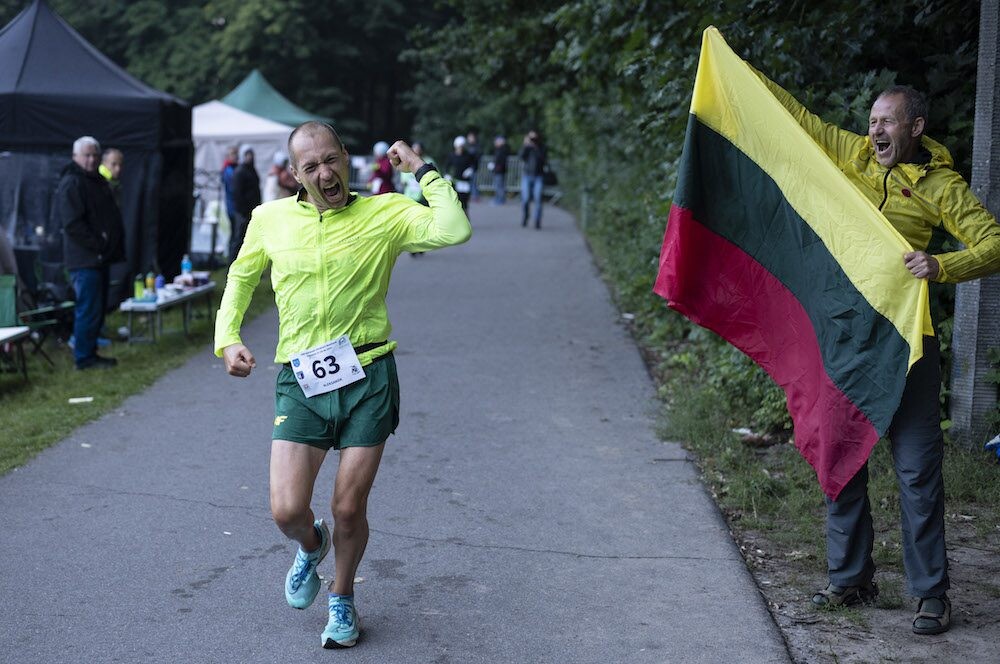
“My training for these ultra races is no secret,” Sorokin says. “My coach and supporters motivate me to achieve my goals and work hard.” Sorokin has a public Strava profile where he uploads all his training in the lead-up to each race.
In a 2021 interview with Sorokin, he spoke about how winning European championship gold for Lithuania was his ultimate goal when he began running in 2013. Sorokin holds seven world records on the track and road: 100,000m (track), 100 miles (road), 100 miles (track), six-hour run, 12-hour run (track), 12-hour run (road), 24-hour run (road).
The Lithuanian distance runner has no races planned for the immediate future but he is excited for what is yet to come. “I think running 200 miles in 24 hours is possible,” says Sorokin. “There are many factors that need to go your way—like good weather and a fast course.”
In January, Sorokin became the first runner to break the 11-hour barrier for 100 miles in 10 hours, 51 minutes and 39 seconds at the Spartanion Race race in Tel Aviv, Israel.
(09/22/2022) ⚡AMPby Running Magazine
Haile Gebrselassie to be the International Event Ambassador at the Vedanta Delhi Half Marathon 2022
Haile Gebrselassie, one of the greatest distance runners in history, will be the International Event Ambassador at the Vedanta Delhi Half Marathon 2022 on Sunday October 16.
The Ethiopian legend won the 10,000m gold medal at both the 1996 and 2000 Olympic Games as well as four successive World Athletics Championships 10,000m titles from 1993-99.
In addition, Gebrselassie won a further four world indoor gold medals and the 2001 World Athletics Half Marathon Championships title, and set no less than 15 world records outdoors and on the roads, and a further five world indoor records, revising the record books over a stunning range of distances from 1500m to the marathon.
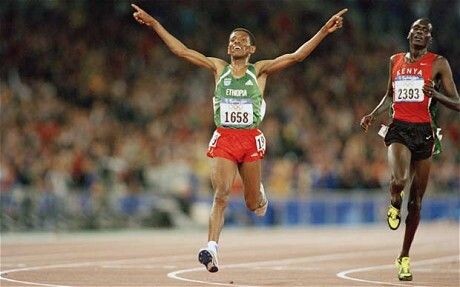
“There are few things more inspiring and joyful than seeing a city run together. When we run together, we stay together, we win together,” said Gebrselassie, whose activities in Delhi will include motivating and inspiring the thousands of runners who will take to the streets of the Indian capital next month, as well as promoting the event in the final days before the gun goes.
"Running and the community are the two things that are most important to me, and an event like the Vedanta Delhi Half Marathon brings them together in a special way.
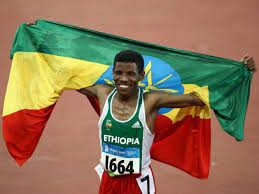
“The enthusiasm of the host city inspires something special in everyone involved in making this beautiful event possible. I’m going to be cheering all the runners as we celebrate the different hues of Delhi,” he added.
Uganda’s Jacob Kiplimo, the reigning world half marathon champion and world record holder over the distance, will headline the elite field for the 17th edition of the Vedanta Delhi Half Marathon 2022.
The Vedanta Delhi Half Marathon 2022 is a World Athletics Elite Label Race and one of the world's most prestigious half marathons.
(09/22/2022) ⚡AMPby Runners Web
Vedanta Delhi Half Marathon
The Airtel Delhi Half Marathon is a haven for runners, creating an experience, that our citizens had never envisaged. The streets of Delhi converted to a world-class running track. Clean, sanitized road for 21.09 kms, exhaustive medical support system on the route, timing chip for runners, qualified personnel to ensure smooth conduct of the event across departments. The race...
more...Eight Interval Training Workouts used by World Champions and Coaches
Interval training involves high-intensity repetitions followed by standing, walking or jogging recoveries. Interval training can be of varied length but are usually short and intensive accelerations.
This forms a crucial part of all distance runners – some throughout the year, others closer towards the lead-up to a race. Here are some examples of interval sessions used by elite athletes.
1. Craig Masback who represented the United States in international competitions on several occasions devised his own interval running workouts. He and his roommate ran 6 x 300m followed by a 2min rest. They would then progress to 4 x 1100m with 800m between each set at an aerobic pace where they ran the last 300m at a hard pace. Including warm-up and cool-down they would run a total of 10miles during their session.
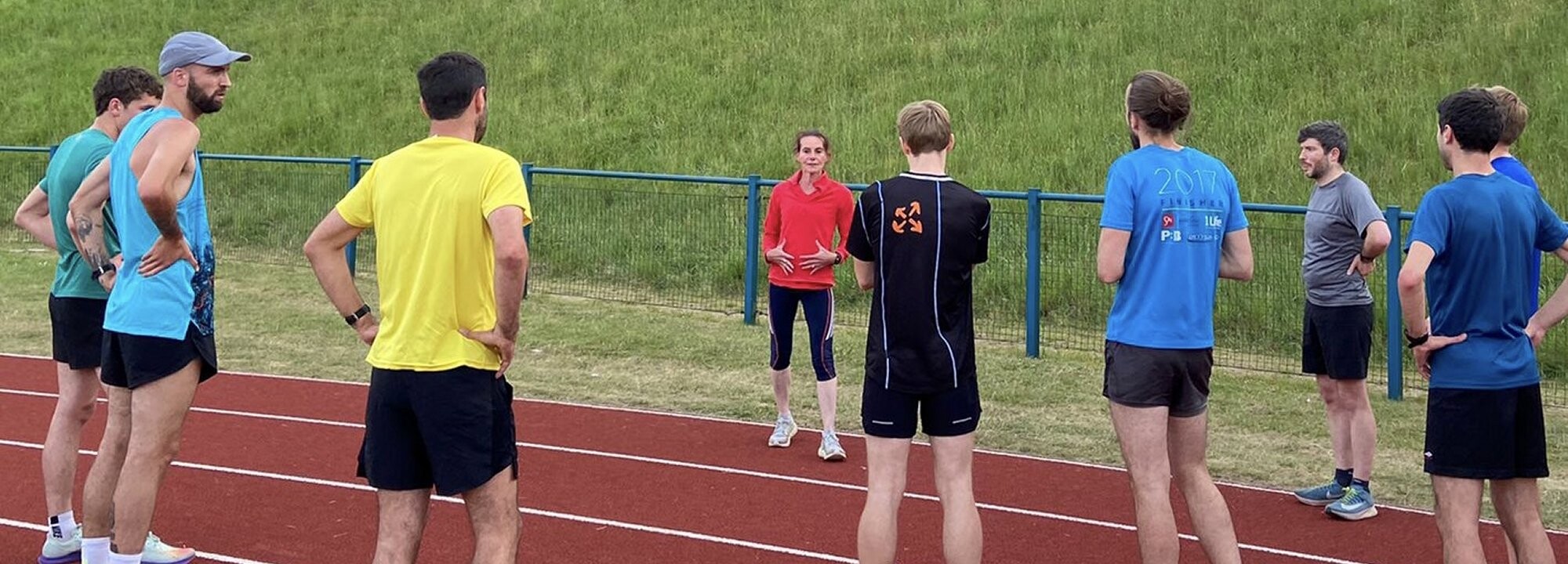
2. Arturo Barrios, a five-time world record holder and Olympic Games runner, had a favorite interval running workout: 10 x 1000m on the track @ slightly faster than 5km race pace, with a slow jog recovery as rest. Barrios used this workout every other week in the lead up to a race with his last session occurring 2 weeks before racing.
3. Silvio Guerra, gold medalist at the South American Games and Olympic Games runner, found that his most important track workout was 8 x 1km with 2mins to 2:30mins recovery depending on weekly workload and time of the season. He recommends this workout as it provides a runner with speed and endurance. He used a 3-mile warm-up that ended with a quick pace followed by 15mins of stretching and striding (10 strides).
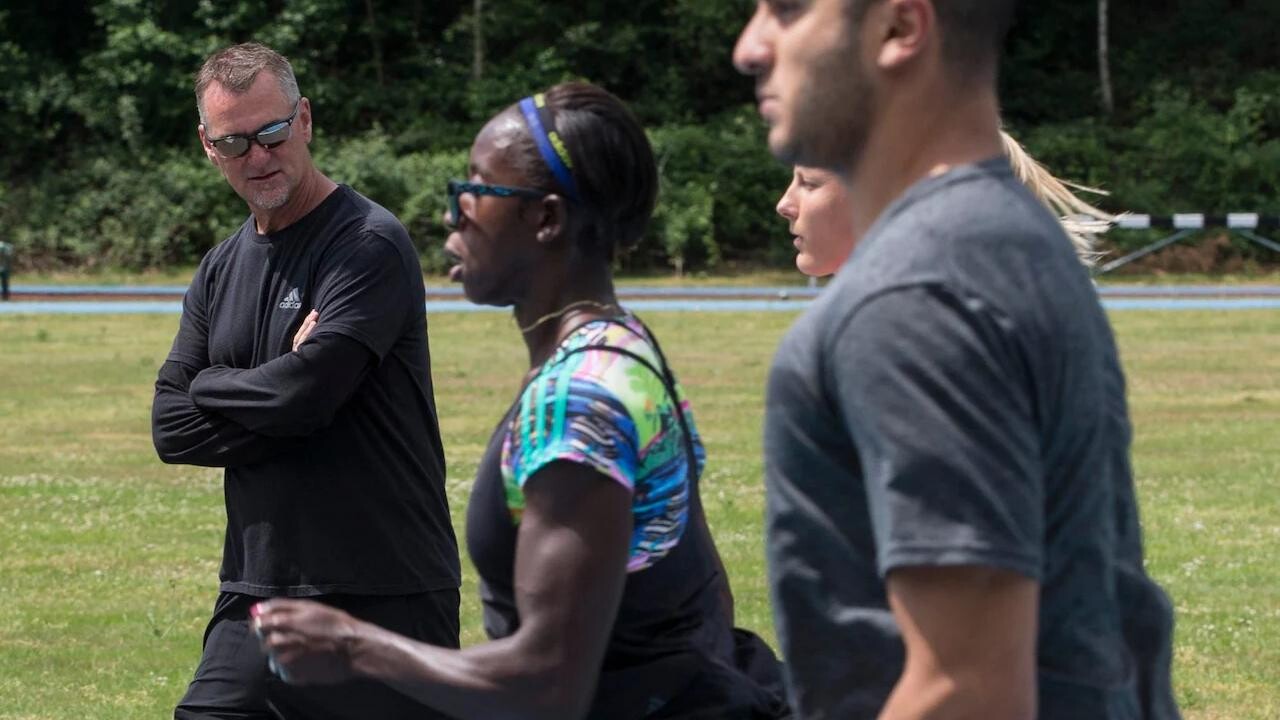
4. Bill Dellinger, a bronze medalist at the 1964 Olympic Games for the 5000m, used advanced interval training to his advantage. He completed 3 miles of alternating 30s and 40s 200m runs with no recovery. The workout finished when he could not keep up with the pace anymore. As a coach he uses the 40-30 with his athletes almost 3 times during winter training with some of his best athletes going for 18 laps continuously. He also used the 800-300, which consisted of running 800m at a runner’s 5km goal pace with a 400m recovery, followed by 300m at mile race pace with a 200m recovery in 40s. The cycle repeated until the athlete could not keep up with the pace anymore.
5. Libbie Hickman, World Champion and Olympic Games runner for the US, used a straightforward 8 x 300m in 48s with a 200m recovery phase. She tries to be in a fairly recovered condition before the start of every 300m also making this her toughest workout. Hickman feels that runners need to have a strong base before trying a workout like this.
6. Marc Davis, a former US record holder for 2 miles, used a fast ladder style workout for his interval training sessions. He ran a hard mile, followed by a 1200m, 800m and 400m. The recovery between each was half the distance of each segment. He ran his workouts close to a 4-minute mile pace and called it the Alberto Salazar special.
7. Adam Goucher, a US national champion runner, used to run 10 x 500m on the track with a 100m recovery between each repeat. Goucher ran his 500m between 1 minute 16 seconds and 1 minute 18 seconds. He calls it ‘Coach Wetmore’s Secret’ and feels that it provides great preparation for a 5km. Goucher recommends bringing the training down to your level by providing adequate recovery so that you are able to finish the session. As you improve and get fitter reduce the recovery time to suit your needs.
8. Rich Kenah, an elite runner who represented the US, uses a 4 x 400m with a 4min jog recovery when he approaches his racing season. His wife Cheri uses a 3 x 1mile workout running them in 4:45. To them, these sessions are key indicators for their current state ‘a great barometer of our fitness’. For example, if Rich can run all 4 sets of 400m in 52.0s, he knows that he is in good shape for a quality 800m race.
The workouts are preceded by a 1-hour warm-up including jogging, stretching, drills and striding. This particular session usually comes after a month of ‘fairly high volume’ during the season.
Conclusion
Interval training is a form of workout that is used by runners and coaches across the world. They help improve your speed and endurance while simulating situations and pain that you are likely to face during your races. There are several ways of doing interval training across a lot of surfaces, therefore there is no one right way to complete this kind of a session. Find what suits your current level of fitness and race distance and to create an interval session for your needs.
(09/22/2022) ⚡AMPby Chelsea Ho
Tips to build back your confidence after a running break
If you haven’t run in a while and you’re worried about getting back into it, you’re not alone. Setbacks can happen to anyone, and everyone takes a different amount of time to return to running confidently. When you are coming back from a long break or an injury, it’s easy to compare your current fitness with your former results, but understanding your setback can help you to gain confidence and motivate you to get back on track.
Here are a few things to remember to build back your confidence.
Set short-term goals
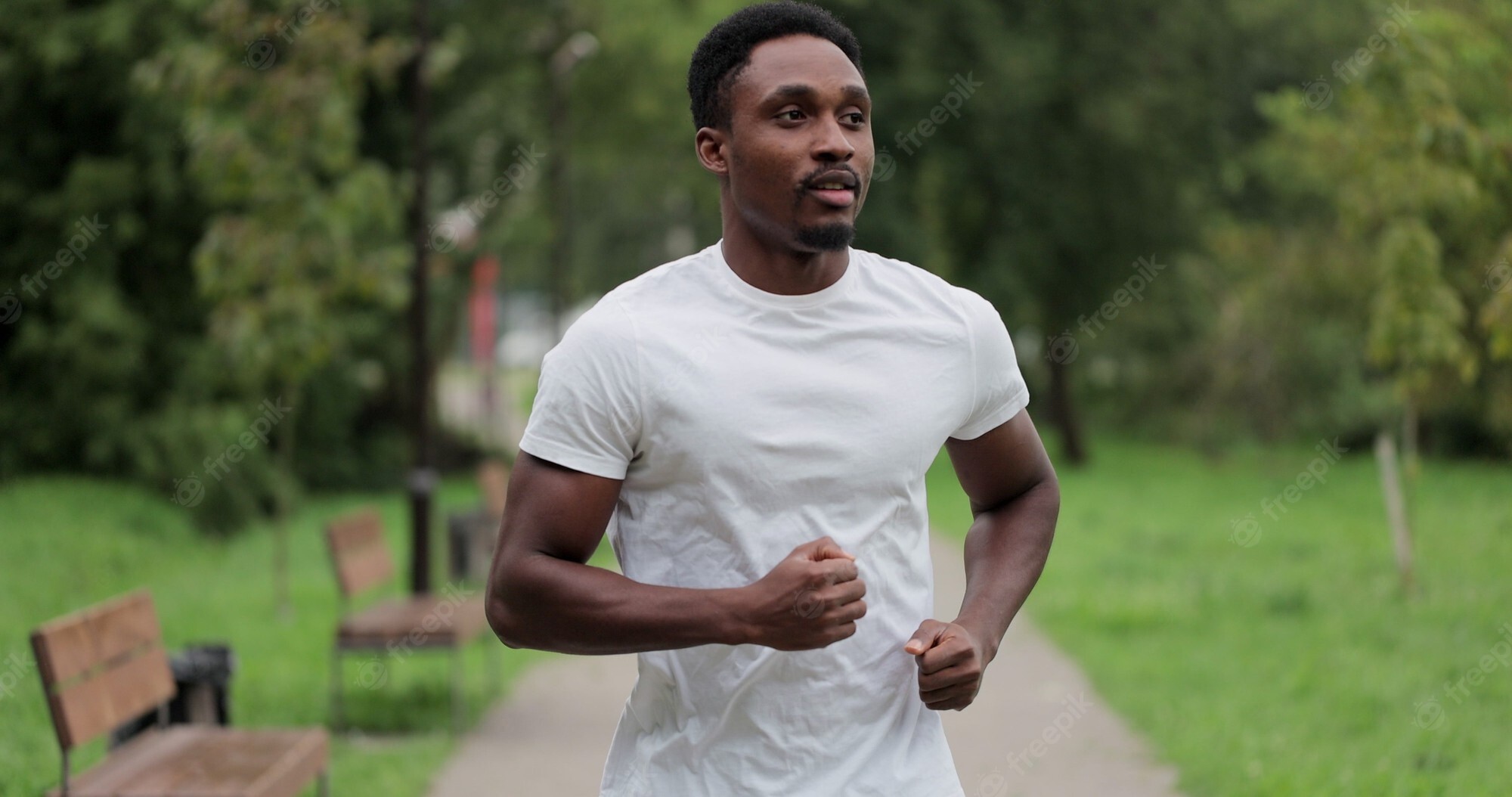
Long-term goals are easy to set, but hard to achieve. Everyone can dream of making their comeback at Boston or getting back to their previous fitness, but physically getting there requires confidence in your training.
Instead of setting a long-term goal, focus on a few shorter-term goals, so you can enjoy a feeling of accomplishment before you tackle bigger ones. Short-term goals can help increase your motivation to keep working toward your long-term goal.
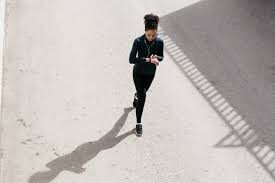
Take it slowly
Whatever you do, do not rush your return to running. Regardless of where you are at in your training, it’s essential to listen to your body and take plenty of rest days, rather than trying to cram all the running you missed into the next few weeks. Returning to your previous fitness will take time, and it’s better to start with a few weeks of easy jogging before hopping into hard workouts.
Get into a routine
Finding a training plan for a short-term goal (like a 5K or 10K six or eight weeks from now) and setting a running routine can help you get back on track. Once you find a routine of running two or three times a week, your training runs will begin to feel like second nature again, and you’ll look forward to them, instead of dreading them.
Knowing what you can expect in your training can help boost your confidence levels.
Enjoy the process
Rome wasn’t built in one day, and neither was your marathon prep. Enjoy the process of your training build, and don’t put too much pressure on yourself to get runs done. Progress takes time.
If you are still struggling with running confidently, it may be a sign you need more time off or a different structure to your training. Running should be fun, and it’s crucial to find a balance in your training between regular efforts, hard efforts and recovery.
(09/22/2022) ⚡AMPby Marley Dickinson
Two-time Vienna champion Vibian Chepkurui now targets Berlin glory
Two-time Vienna Marathon champion Vibian Chepkurui has set her sights firmly on successfully graduating to the World Marathon Majors and claiming the Berlin title this Sunday.
Chepkurui, who trains in Iten, Elgeyo Marakwet County, has been preparing for the Berlin Marathon for the last three months and is confident of a good outing on the streets of Germany’s political capital.
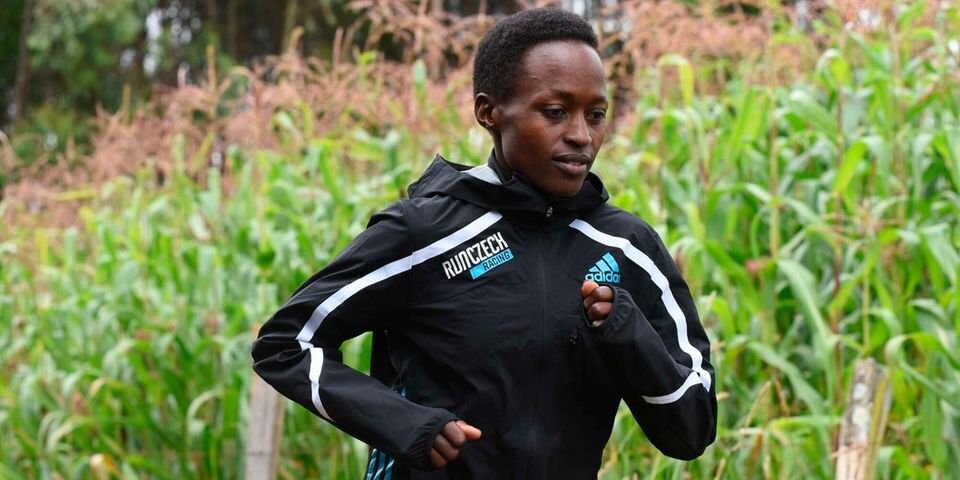
Kenya will be seeking to recapture the title that Ethiopia bagged in the last two editions with Gotytom Gebreslase having won last year while Ashete Bekere bagged victory in 2019.
The last Kenyan athlete to win the race was Gladys Cherono who ran a course record two hours, 18 minutes and 11 seconds in 2018. Cherono has since retired from elite running.
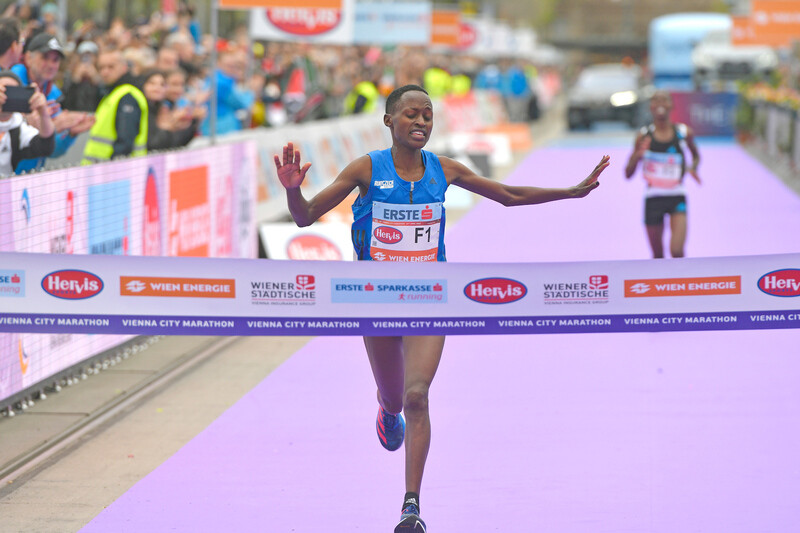
“My target in Berlin is to run my personal best from 2:20:59 to 2:18 and I believe if the weather conditions will allow, I will be able to hit the target,” Chepkurui, who is managed by Ikaika Sports Management, told Nation Sport at her home.
She said that after running well in this year’s Vienna Marathon in April where she clocked a course record, she is confident of an “impressive race” in her first major marathon.
(09/21/2022) ⚡AMPby Bernard Rotich
BMW Berlin Marathon
The story of the BERLIN-MARATHON is a story of the development of road running. When the first BERLIN-MARATHON was started on 13th October 1974 on a minor road next to the stadium of the organisers‘ club SC Charlottenburg Berlin 286 athletes had entered. The first winners were runners from Berlin: Günter Hallas (2:44:53), who still runs the BERLIN-MARATHON today, and...
more...African Games 5,000 meters champion Lilian Kasait is the latest Kenyan athlete to be banned for violating doping rules
World Athletics’ Athletes Integrity Unit (AIU) disclosed on Wednesday that it had banned the 2017 World Cross Country bronze medallist for a period of 10 months starting April this year for using a prohibited substance, Letrozole.
Consequently, AIU disclosed that Kasait's results from January 20, this year have been disqualified.
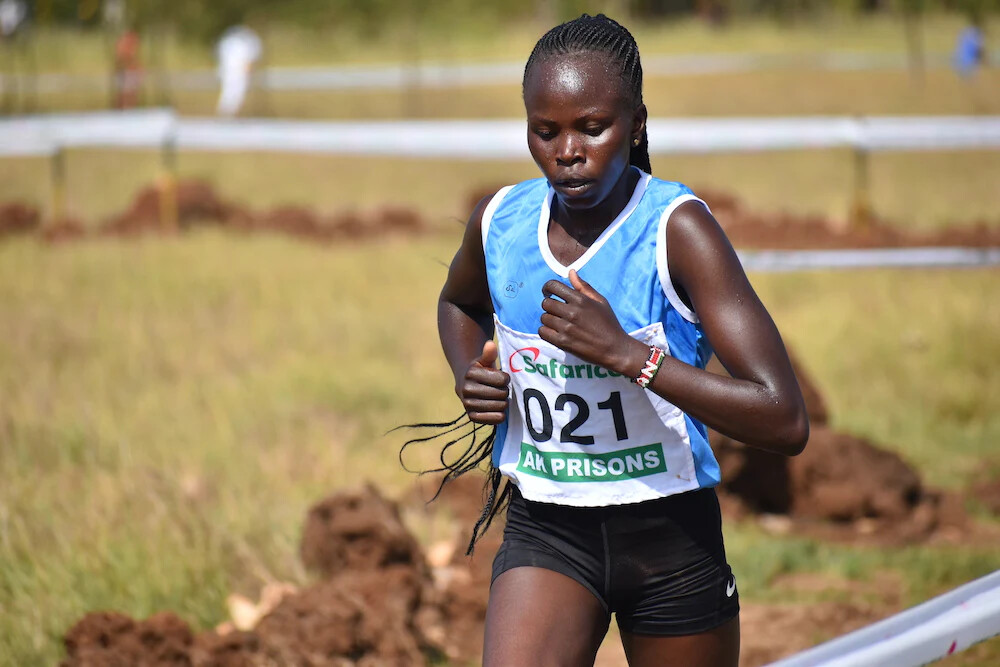
The ruling from AIU indicated that an out-of-competition provided by the 25-year-old Kasait during a doping control conducted on behalf of the AIU on January 20, this year.
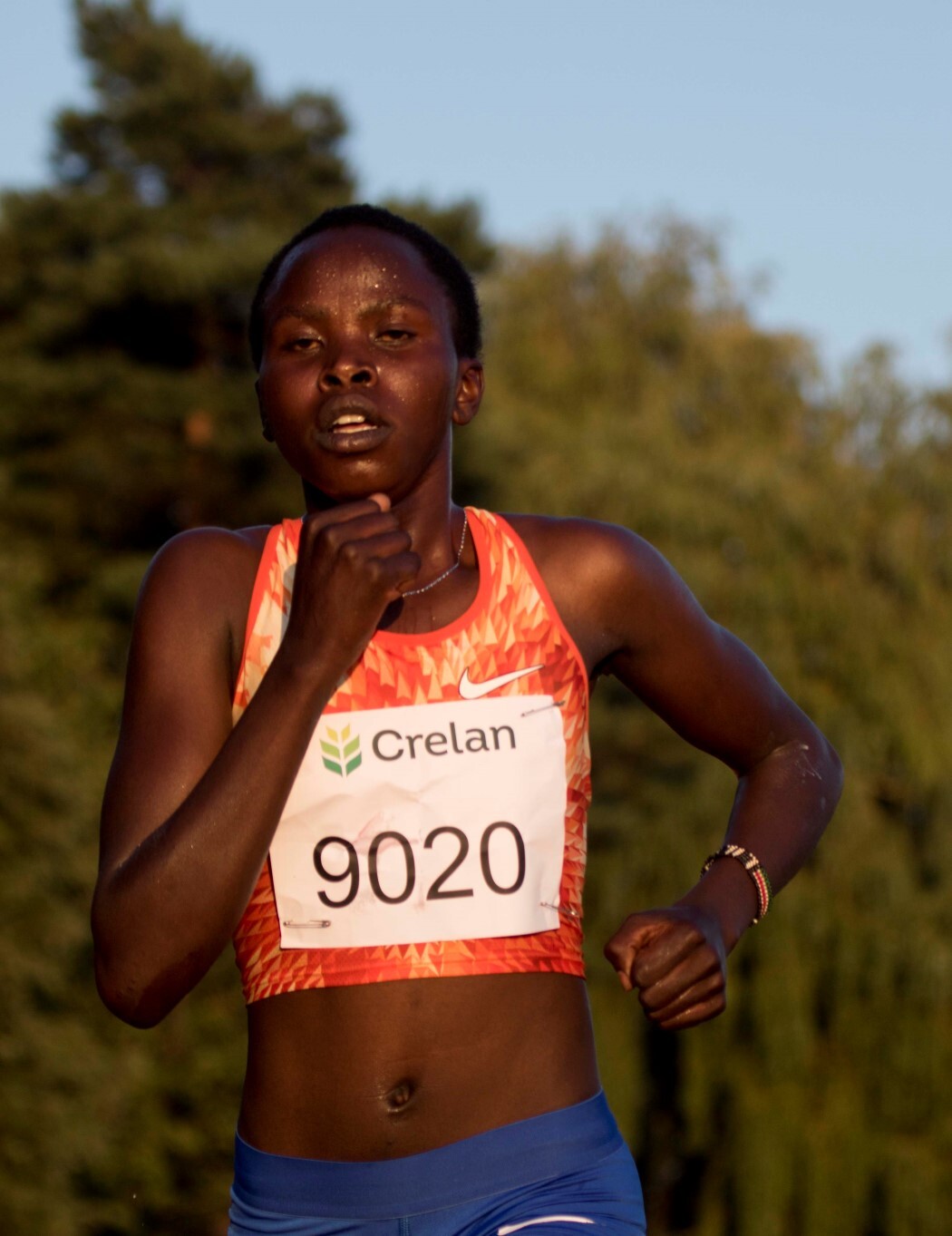
“It resulted in an adverse analytical finding for Letrozole, which is prohibited at all times, which was potential anti-doping rule violations (ADRVS) pursuant to Rule 2.1 and Rule 2.2 of the World Athletics Anti-Doping Rules (ADR)," said AIU who notified the athlete of the violation on February 16 this year.
Kasait now joins a long list of close to 20 Kenyan athletes who have been banned or suspended for various doping offences this year.
The last time for Kasait to compete was last year where she won the national trials in 5,000m to represent Kenya at the Tokyo Olympic Games where she finished 12th.
The suspension comes after five Kenyan athletes were banned from the World Athletics Championships held on July 15 to 24 in Oregon, USA, and Commonwealth Games held July 28 to August 8 in Birmingham, England.
The 2019 Boston and Chicago Marathon champion Lawrence Cherono was kicked out of Oregon before the men’s marathon after failing a dope test.
Marathoners Philemon Kacheran, Stella Barsosio, Purity Changwony and 1,500 metres athlete Kumari Taki were also hounded out of the Commonwealth Games for the same reasons.
Middle distance runner Eglay Nalianya was suspended from the World Indoor Championships in March in Serbia, for the use of Norandrosterone.
Long distance runner Mathew Kisorio was banned in April for the second time for four years for his whereabouts alongside Justus Kimutai and Morris Munene Gachaga, who got two years each for a similar offence.
Another distance runner, Joyce Chepkirui, was suspended by the Anti-doping Agency of Kenya (ADAK) for four years in March for discrepancies in her Athletes Blood Passport.
Two-time Paris Marathon champion Paul Lonyangata was among four Kenyans, who were flagged down by AIU in February.
AIU suspended Lonyangata on January 24 for the use of prohibited substance Furosemide. Others are Edward Kiprop Kibet, Tabitha Wambui and Vane Nyaboke.
(09/21/2022) ⚡AMPby Ayumba Ayodi
For the second year in a row, all runners who applied to run the Boston Marathon will be accepted into the race, as long as they have a valid qualifying time
For the second year in a row, everyone who qualified for and applied to the Boston Marathon will get to run.
The Boston Athletic Association (B.A.A.) announced on September 21 that there is no cutoff time for the 2023 race. Applicants who ran a verified qualifying time for their age group and gender during the qualifying period will be accepted into the race, which will be held on April 17, 2023.
The field size of the race is 30,000 runners, which will make the race the same size as the 2022 edition—and almost back to pre-pandemic levels. In 2020, before the pandemic canceled the race, the field size was set at 31,500.
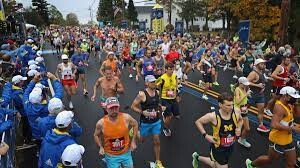
But runners have been slow to return to road racing—even as COVID-19 cases have dropped, vaccines and boosters have become widely available, and races have returned to the calendar.
Athletes cite the expense of race entry fees and the high cost of travel required to get to events, wariness about COVID-19, and shifting motivations as reasons why they’re not racing as frequently as they did in 2019 and the early days of 2020.
It appears even the Boston Marathon is not immune from these trends.
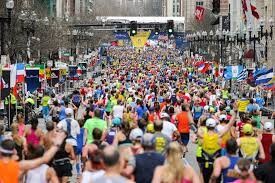
Usually 80 percent of the field, or roughly 24,000 spots, are reserved for time qualifiers. The other spots go to elite runners, those running for charity, and special invitational entries.
According to the B.A.A., the race had 23,267 applicants during this year’s registration period. The field of 2023 qualifiers is made up of 13,315 men, 9,930 women, and 22 nonbinary athletes.
In 2019, the B.A.A. received 27,288 applications for the 2020 Boston Marathon (which never happened, due to the pandemic). Application numbers have declined 14.7 percent from pre-pandemic levels.
The drop is in line with what other races are seeing across the U.S.—but somewhat surprising given Boston’s status as the Holy Grail among many marathoners.
Since the 2014 Boston Marathon, running a qualifying time has been no guarantee of entry into the race. Those who beat their qualifying times for their age and gender by the largest margins get in, while those who just squeak by with a qualifier have often been shut out.
Every year, runners eagerly await the announcement of the “cutoff” time—the margin by which you had to beat your qualifying time in order to gain entry into the race. In 2018, that cutoff reached 4:52 for the 2019 race, and more than 7,000 qualified runners who applied did not get in.
That September, the B.A.A. announced it was tightening the entry standards by 5 minutes across all age groups and genders.
Today’s announcement that there is no cutoff could also affect charities. In the past, many qualifiers who didn’t hit the cutoff ran the race for a charity. But with all verified applicants accepted, that reduces the pool of runners seeking bibs—and doing the required fundraising—for nonprofit organizations.
The 2023 race will be the 10th anniversary of the Boston Marathon bombings.
“On Patriots’ Day, the determination, passion, and unity of marathoners will be on display, bringing our community together in the spirit of athletics and our heritage,” said Jack Fleming, acting Chief Executive Officer of the B.A.A., in a release. “We are very much looking forward to the 127th running of the Boston Marathon in just seven months.”
(09/21/2022) ⚡AMPby Sarah Lorge Butler
Boston Marathon
Among the nation’s oldest athletic clubs, the B.A.A. was established in 1887, and, in 1896, more than half of the U.S. Olympic Team at the first modern games was composed of B.A.A. club members. The Olympic Games provided the inspiration for the first Boston Marathon, which culminated the B.A.A. Games on April 19, 1897. John J. McDermott emerged from a...
more...Thousands of London Marathon runners to face disruption due to train strikes
Thousands of London Marathon runners are expected to have their journeys disrupted by train strikes next weekend.
Asked announced on Tuesday that train drivers at 12 companies across the country will walk off the job on October 1 and 5 over a pay dispute.
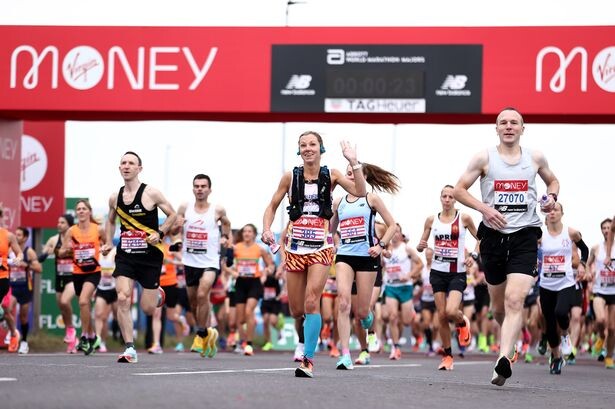
They will be joined by RMT union members, including conductors, train cleaners and station staff and Network Rail’s signallers and maintenance teams, in their national rail strike on October 1.
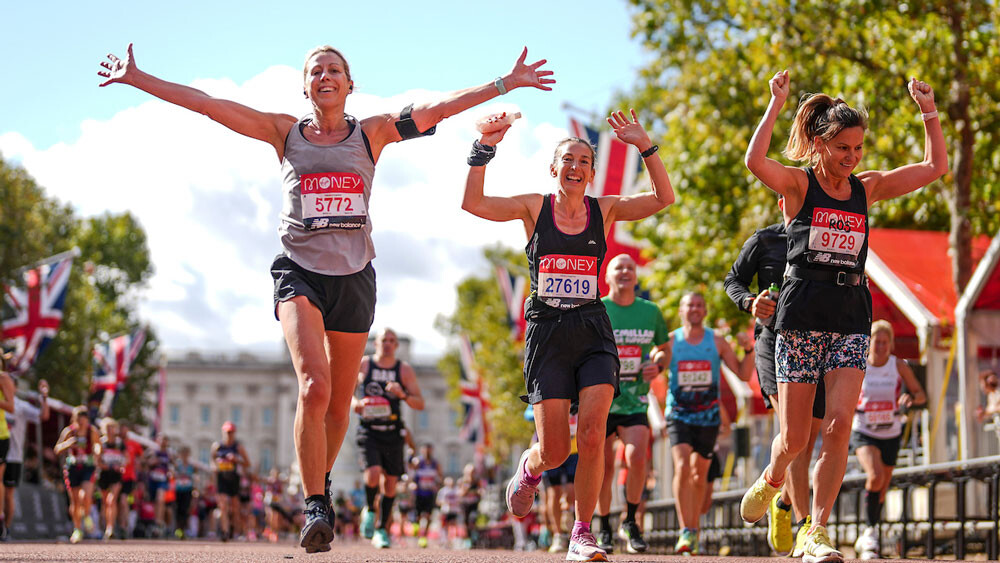
People travelling to the London Marathon on Sunday October 2 will be affected, as the 24-hour strikes have a knock-on effect the following day. There will be no services between 7 and 7.30am, Greater Anglia has warned.
Last year around 40,000 people ran the event in person and 40,000 virtually.
(09/21/2022) ⚡AMPby Miriam Burrell
TCS London Marathon
The London Marathon was first run on March 29, 1981 and has been held in the spring of every year since 2010. It is sponsored by Virgin Money and was founded by the former Olympic champion and journalist Chris Brasher and Welsh athlete John Disley. It is organized by Hugh Brasher (son of Chris) as Race Director and Nick Bitel...
more...This nutritious pizza is fuel for the fastest, you might not be able to run as quickly as Kilian Jornet and Emelie Forsberg, but you can definitely eat like them
Power-ultrarunning couple Kilian Jornet and Emelie Forsberg have it all–glorious mountain miles to run surrounding their home in Norway, the launch of athletic brand NNormal, and delectable home-cooked meals baked from their small family farm. While Jornet recently won both Hardrock 100 and UTMB, Forsberg is an accomplished athlete herself and details her running journey in her book Skyrunner.
Forsberg is also the co-founder of Moonvalley, a plant-based sports nutrition company, with fellow pro runners Ida Nilsson and Mimmi Kotka. Forsberg has a simple pizza recipe that is so easy and versatile you’ll want to have it on a weekly rotation.
Homemade pizza is a family favourite at my house. Since our kids were little, my husband and I have taken turns whipping up a batch of pizza dough, pulling out whatever vegetables we find in the fridge and letting everyone create their own masterpieces. The best part about pizza is that it’s easy to cater to everyone’s unique tastes–try a double batch of dough or split this recipe into four for individual pies.
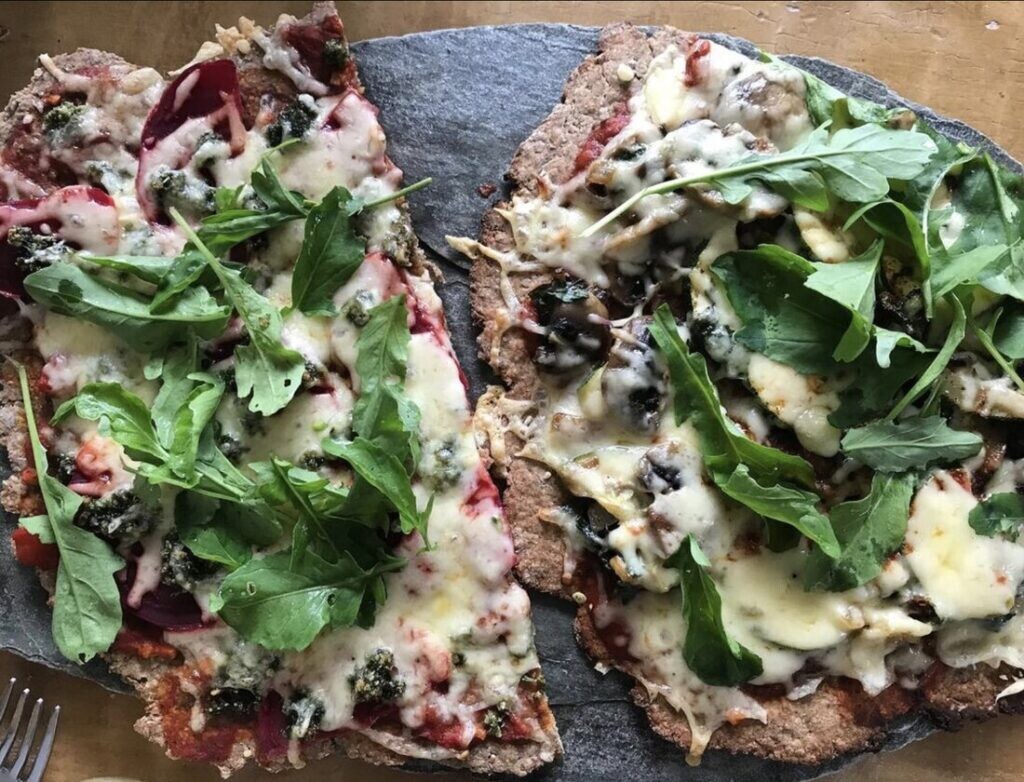
Emelie Forsberg’s ‘Fast Food’ Veggie Pizza
Ingredients (makes two pizzas)
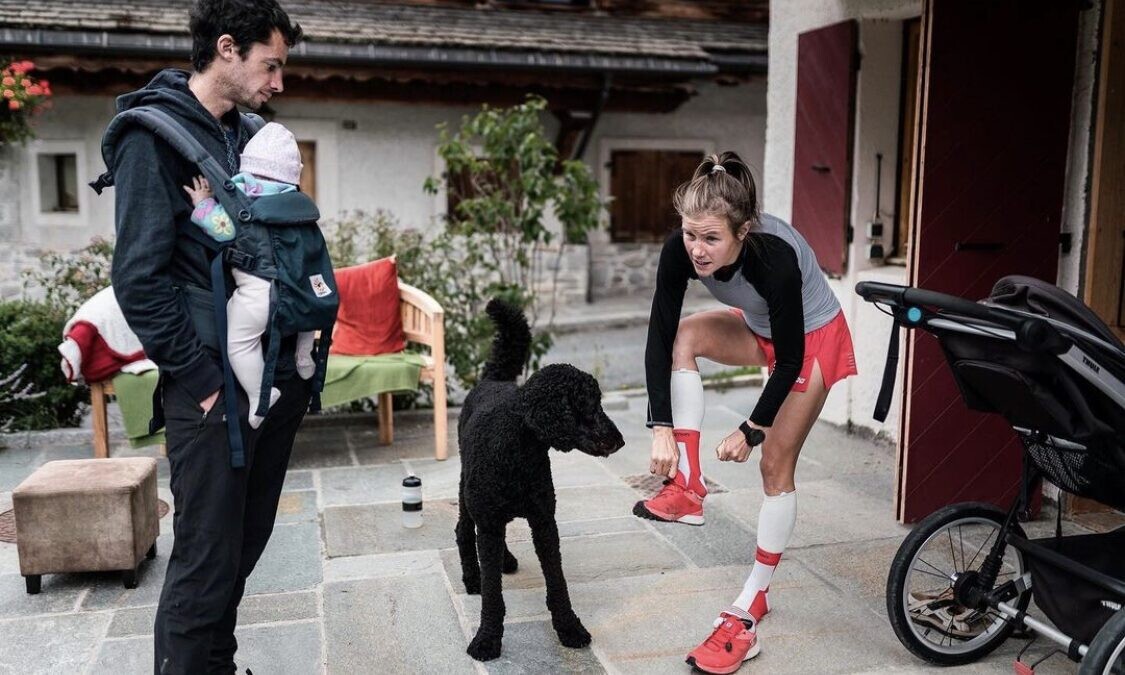
Dough:
2 1/4 cups almond flour (since there is no yeast in this recipe, Forsberg suggests any type of flour without wheat, including corn, coconut, chickpea, or a combo)
3/4 cup water
1/2 tsp salt
1/2 tsp garlic powder
1/2 tsp baking powder
1 Tbsp vegetable oil
Toppings:
assorted veggies of choice (mushrooms, beets, eggplant, tomato)
tomato sauce
cheese (can use vegan)
arugula for topping
Directions
Mix all the dough ingredients together well. Roll out the dough on some parchment paper and pre-bake it for 5 mins at 225 C (440 F).
While the dough is pre-baking, start chopping your veggies. Forsberg says she throws in what she has at home, and if she’s in a hurry will simply use plain store-bought tomato sauce.
Add tomato sauce, veggies, and your choice of cheese, and pop back in the oven at 220 C for approx 10 more minutes. Top with arugula and enjoy.
(09/21/2022) ⚡AMPby Keeley Milne
What are progression runs?
Progression runs are a worthy addition to a runner’s training arsenal, especially if you’re building up to a pace or returning from an injury.
The concept is simple. Start easy, speed up as you go along and then finish fast.
Correctly done, a progression run can provide an excellent training stimulus with less stress than a full tempo run, and it doesn’t have to be one of the main runs in your training schedule either.
It can be a lighter workout or just a way to test those legs on days in between key sessions.
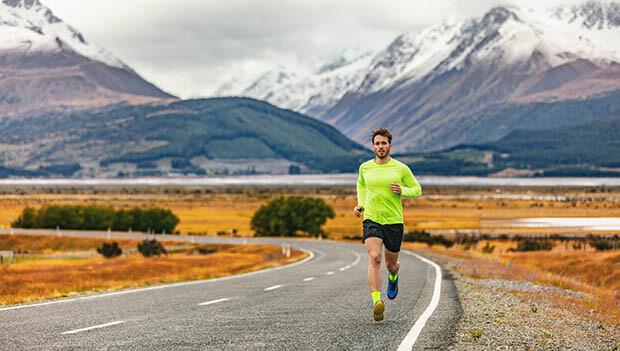
Building up from a relaxed starting pace, and as the run continues, bit by bit, you edge closer to your intended goal speed.
The longer warm up and build up should leave your legs already a little taxed when you come to the meaty section of the run, but unlike intervals, this isn’t the result of multiple hard running blocks.
Building up to a pace
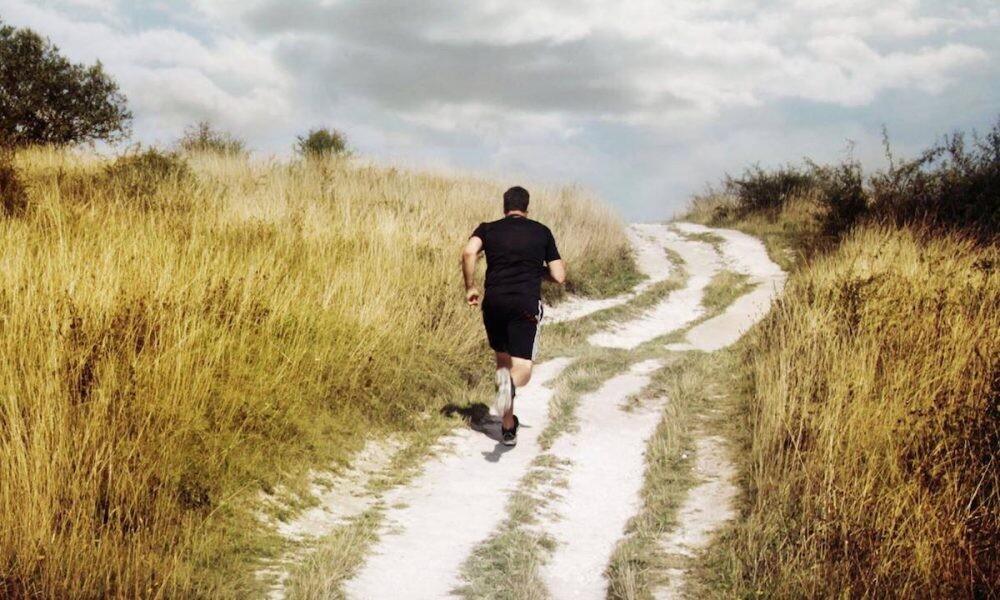
So you want to test your training progress or maybe you want to see how the legs respond to race pace?
The more this stimulus feels like race day, the better. But rather than running a full distance at your intended pace or just doing intervals on fresh legs, you build up to the speed over a few miles, and then importantly, aim to hold it.
Starting easy, and then progressing to a steady effort before a faster finish can be more difficult than simply doing a warm-up followed by intervals or a tempo run.
It can teach you to work on tired legs in the second half of a race, which is a good time for visualising that push for the finish.
Coming back from an injury
Equally progression runs can be beneficial for those coming back from injury. The extended warm up and build up of speed gets the muscles and joints ready for the higher intensity to come.
Coming back from injury is always difficult. If any issues are lingering then a progression run might highlight them before you run too fast.
When you’re building up to six-minute miles, but the legs start complaining at 6:30s then you can back off to limit any damage done.
Jumping straight into six-minute miling in that situation could result in injuries reappearing and damage the progress of your rehabilitation.
A common mistake for runners to make though is to start the progression aspect of the run too soon. You mustn’t underestimate the added difficulty compared to a straight up tempo effort.
If you don’t have the extra gears to move up into, then you’ll find yourself at top speed halfway through. That’s not fun.
Starting a bit easier allows the body to warm up correctly, keeps the steady section of the progression comfortable, and importantly means you completed the session successfully.
Types of progression runs
Progression running can be as simple or complicated as you like.
Personally, as long as the progression element is in there, set paces aren’t something I would prescribe someone I coach. This is especially true if you are running on undulating roads or trail.
An added benefit of not setting a pace is that it can encourage a runner to think a little more about their effort levels.
Treadmillin’
The main reason for doing a progression run on a treadmill is to alleviate the boredom of the ‘dreadmill’.
I find the monotony of indoor running lessens if you keep increasing the speed with every kilometre (or other set distance or time) until you fall off the back – but be careful.
A treadmill is useful for regulating those early paces and ensuring you get the right speed at the top end too. And it turns out a little computer is better at judging that pace than the human brain.
If you tell a runner to hit X pace at the start most will start out 20 seconds too quick then slow down.
Progressing the progression
The easiest way to segregate a progression run is by time. Simple go for 15/15/15 minutes or 30/10/10 with each section faster than the previous one.
You can get overcomplicated and do 1.3km at 10.3kph, 2.17 mile at 11.96kph and 3000m at half marathon pace but why make your head hurt?
Maybe on a treadmill a km/h increase every kilometre might work nicely. In the great outdoors though, such delicate pace increases aren’t practical.
Easy, steady, and then maybe marathon pace or tempo pace allows for a bit of flexibility.
Start nice and comfortable, especially the first time. There’s nothing worse than getting through 15 minutes easy, 15 minutes steady and then finding out you haven’t another gear.
You also don’t want to do a reverse progression or regression run. This is an amateur move where you start as fast as possible and then slow down.
Not an easy session
For some, especially when paced poorly, progression runs can be one of the toughest to master.
However, done correctly, this type of run can be a good session when easing back into training, testing a niggle for the first time after injury or trying out a faster pace.
It’s also worth being aware that you may already be doing progression runs unintentionally. Many of us will warm up on an easy run and, when endorphins are flowing, push the pace to finish. So don’t underestimate the training stress when you do this.
(09/20/2022) ⚡AMP
by Robbie Britton
Broken mile repeats to negative-split training for your upcoming half-marathon
When training for a half-marathon, longer interval workouts are essential to developing your top-end speed. One-mile repeats are a combination of speed and endurance, two things needed in a half-marathon, and are often prescribed by coaches to help raise your aerobic threshold. But these repeats can feel long and tedious, especially if they are in your training plan every two weeks.
Instead of doing one-mile repeats, try this broken-mile workout designed to help you negative-split your next half marathon.
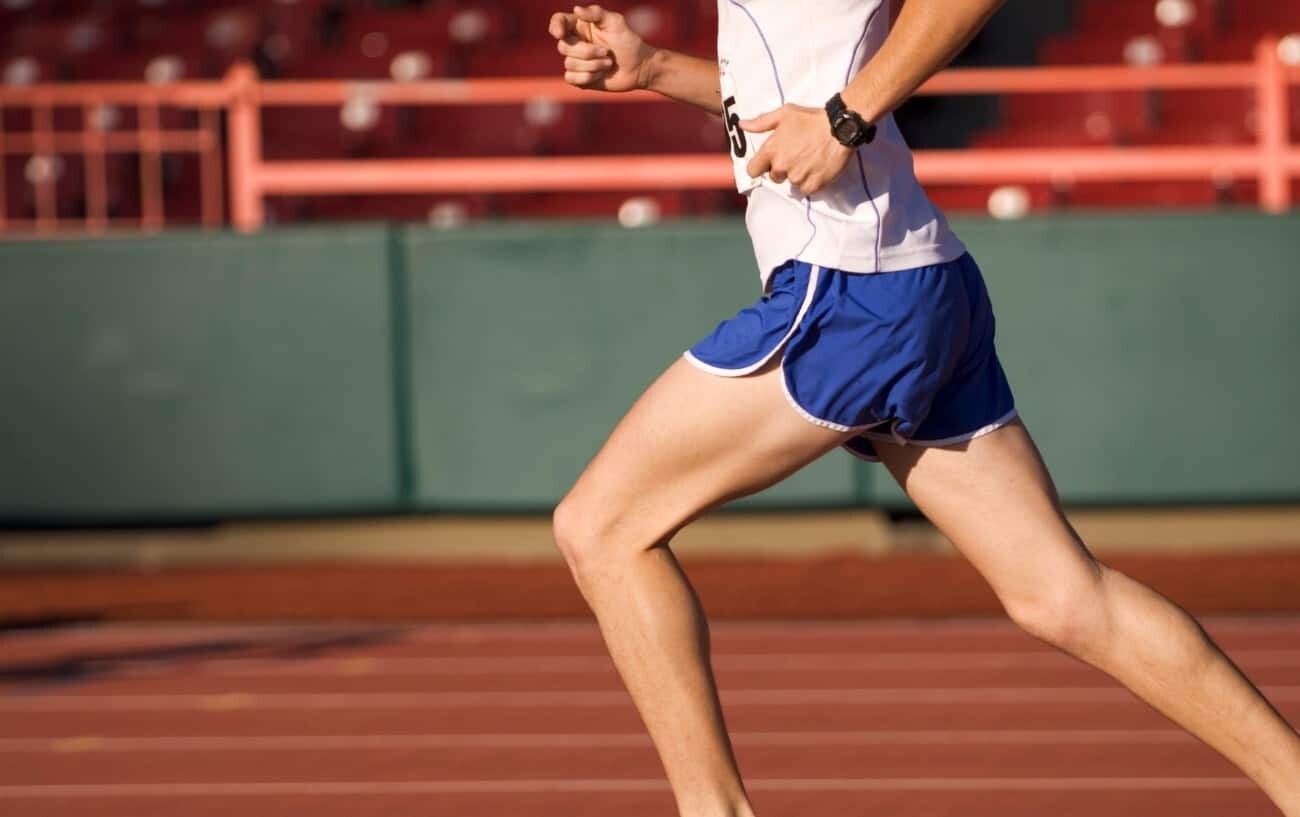
The workout
Four to six reps of 1,000m, 30 seconds jog rest, 600m with 2 minutes stand or slow jog rest between reps.
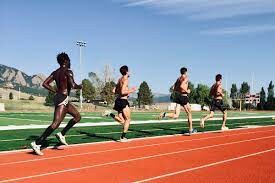
Start with 10 to 15 minutes of warm-up and dynamic activation.
The strategy behind the workout is to do the 1,000m (or 1K) at your goal half-marathon pace, take a short rest, then 600m at a faster yet comfortable pace. You want to negative-split the rep, with your final 600m to be at a faster pace than your first 1,000m.
Between reps, jog slowly for two minutes or take standing rest. End the workout with 10 to 20 minutes of cool-down jogging.
Training for a negative split teaches you how to manage your energy and pace yourself properly. If you can complete six reps at your goal pace for the 1,000m reps, you should have no problem sticking to pace through the 10K in your half-marathon, making sure you don’t blow up during the second half.
Negative splitting takes a lot of discipline, and practising it in training can help you build up confidence in the second half of the race.
(09/20/2022) ⚡AMPby Marley Dickinson
Hong Kong Marathon rescheduled for February next year
The Standard Chartered Hong Kong Marathon has been rescheduled to February next year, the organizer announced on Tuesday, days after canceling the race amid ongoing Covid-19 restrictions in the city.
“The Hong Kong Association of Athletics Affiliates (HKAAA) announced today… that it has received the Government’s full support to actively plan the staging of the 25th Standard Chartered Hong Kong Marathon on Sunday, 12 February 2023,” a press statement by the organizer read.
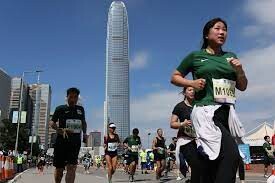
Last Friday, the HKAAA said the sporting event would not go ahead in November as planned, citing “insufficient time for runners and relevant stakeholders to adequately prepare for the race.” Organizers said they had yet to receive approval from the government with only two months remaining.
Commissioner for Sports Yeung Tak-keung questioned the group’s reason on Monday, saying the 2021 race was also approved with only two months to go.
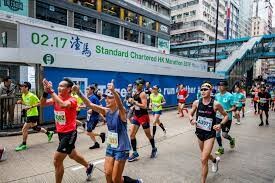
He said the government had been in close contact with the organizer and provided help as best as it could. Yeung at that time said the HKAAA did not consider postponing the race, even there was an available slot in February.
Rescheduling
The HKAAA on Tuesday, however, reversed course, hours after Chief Executive John Lee had expressed disappointment over the axing of the popular sports event.
“Our position is very clear, we are very supportive and we want both sides to work towards the goal of making it happen,” Lee said during his weekly press briefing. “[I]t is both [in] the organiser’s interest, and Hong Kong government’s interest and the community’s interest for these things to happen. So I want that common will to be developed for the good of Hong Kong.”
Further details were yet to be announced by the HKAAA, but it promised to “strictly adhere to and implement all necessary anti-pandemic measures,” and work closely with relevant government departments.
Covid concerns
Several sporting events have been canceled or relocated due to Hong Kong’s strict Covid-19 measures, with all incoming travelers required to undergo three days of hotel quarantine and four days of “medical surveillance.” The city also maintains a four-person public gathering limit and an outdoor mask mandate.
Blaming the stringent quarantine rules, the organizers of the 2023 World Dragon Boat Racing Championships abandoned Hong Kong for Thailand on Sunday. The previous day, the Oxfam Trailwalker event was also called off.
Lee on Tuesday said the government would review the pandemic situation and make necessary adjustments to the quarantine policy, with an announcement to follow “as soon as possible.” Experts have called for measures such as mandatory hotel quarantine to be scrapped so that Hong Kong can begin to return to normalcy.
Hong Kong has reported a total of 1.71 million Covid-19 infections and 9,901 related deaths since the pandemic began.
(09/20/2022) ⚡AMP
by Almond Li
HONG KONG MARATHON
The Hong Kong Marathon, sponsored by Standard Chartered Bank, is an annual marathon race held in January or February in Hong Kong. In addition to the full marathon, a 10 km run and a half marathon are also held. Around 70,000 runners take part each year across all events. High levels of humidity and a difficult course make finishing times...
more...Here’s how to get mountain-running legs, even if you live in the flats
Those of us who live in prairie provinces are familiar with the dilemma of trying to fit some form of hill workout into our schedule. A mountain race sounds glorious (and the vert is definitely real), but how do you get your legs in shape to tackle steep climbs and downhill running? Here are three ways to nail the fitness that will take you up to the peaks with ease, even if you live hours away from any hilly terrain.
Become friends with stairs
Stairs can be an incredibly effective tool for runners, even if you don’t have mountains in your plans. When you push off each stair, it’s a form of explosive or plyometric training. This builds strength and power, increasing the ability of your muscles and joints to react upon landing. A set of bleachers can be a veritable playground for a runner, with a wide variety of workouts that can be done. Try this ladder stair workout to get started.
Pyramid stair workout
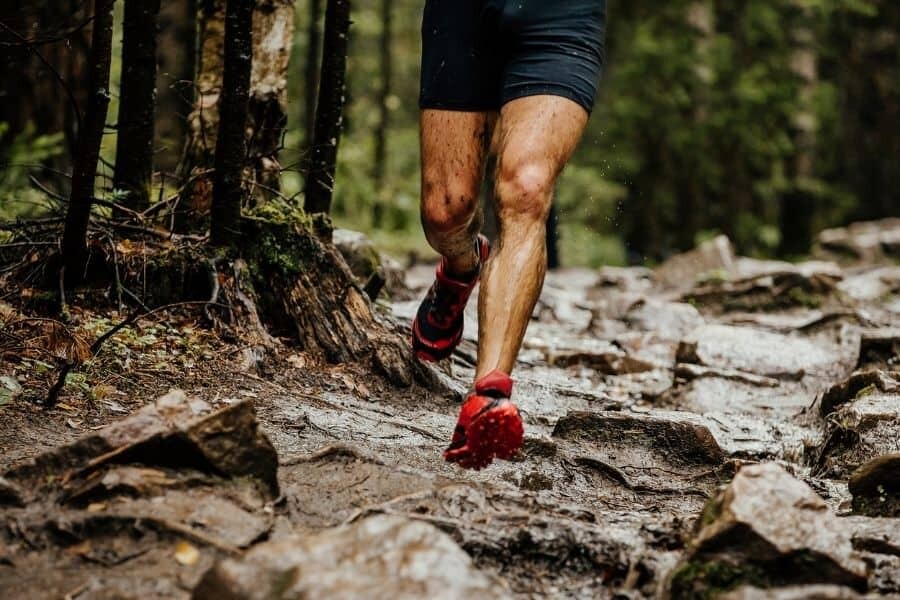
Warmup: 10 to 15 minutes easy running on flat ground
Workout: Run up and down stairs or bleachers for two minutes, rest for 30 to 60 seconds
Run up and down stairs or bleachers for three minutes, rest for 30 to 60 seconds
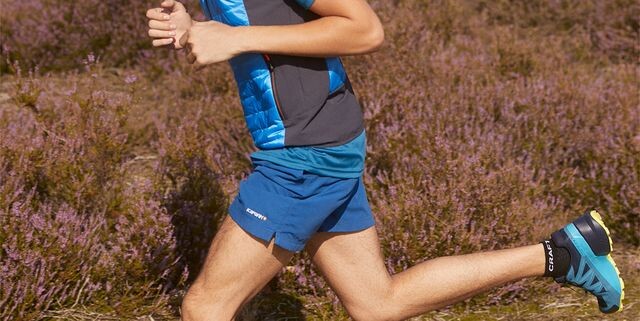
Run up and down stairs or bleachers for four minutes, rest for 30 to 60 seconds
Run up and down stairs or bleachers for three minutes, rest for 30 to 60 seconds
Run up and down stairs or bleachers for two minutes, rest for 30 to 60 seconds
Cooldown: 10 to 15 minutes easy running on flat ground
Build functional strength
Functional strength training will help your legs propel you up the ascents, and will help you maintain efficient form even when you’re feeling tired. Body-weight exercises are perfect for building mountain legs–you don’t need a gym membership or access to fancy equipment. This 3-minute routine by coach and author David Roche will have you ready to tackle the climbs and descents of a hilly race.
“The burn should feel somewhat similar to the screaming quads of steep climbs,” says Roche. He suggests adding it to your routine twice a week, on hard workout days (speedwork, or after a long run), so that you get the maximum recovery benefits the day after. Note that even though you’re only adding three minutes of leg-strengthening to your routine, if you don’t normally do drills like these, you will probably feel quite sore afterward the first few times.
Embrace the treadmill
Treadmill-incline workouts can be a fantastic go-to to build climbing strength and bolster confidence. You can mimic hill sprints, or longer, rolling hill runs on a treadmill with just the press of a button. Try this hill repeat workout to start off.
Treadmill hill repeats
This workout mimics a traditional workout of shorter hill repeats. If you’re new to hill repeats, start your incline at four to five per cent, but more experienced runners can up the incline to six to eight per cent.
Warmup: 10 to 15 minutes easy running
Workout: Six x 60 to 90 seconds at 5K to 10K pace with three minutes of recovery between each one (easy running). If you choose the shorter sprints, aim for the 5K pace, and try to hit your 10K pace if you’re doing the longer sprints.
Cooldown: 10 minutes easy running
Remember to follow a hill session with an easy running or recovery day.
(09/20/2022) ⚡AMPby Keeley Milne
Moses Kibet wins Sydney marathon in record time on Australian soil
Kenyan Moses Kibet has claimed a historic victory in the Sydney marathon as the top three finishers all bettered the previous fastest time on Australian soil.
Kibet clocked a winning time of two hours, seven minutes and three seconds on Sunday, crossing the line just two seconds ahead of countryman Cosmas Matolo.
Ethiopian Chalu Deso Gelmisa – the victor in the Paris marathon earlier this year – was third in 2:07:08.
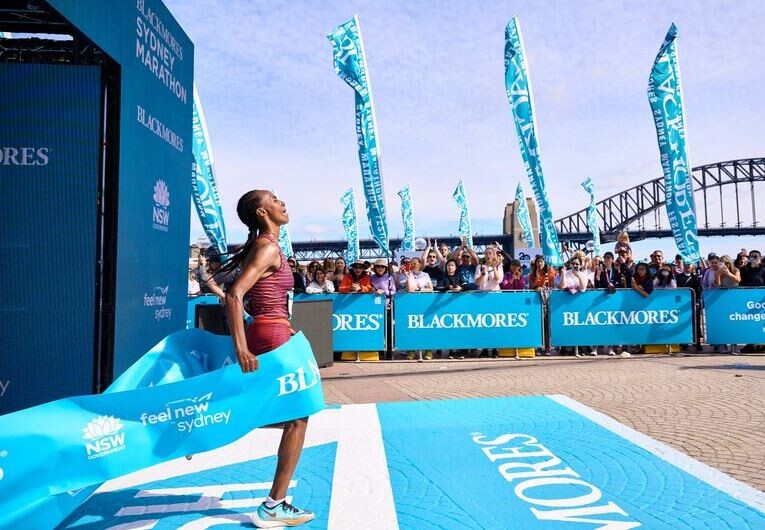
The three Africans smashed the Australian all-comers record of 2:07:50 set by Japan’s Yuta Shitara on the Gold Coast in 2019.
Ethiopia’s Tigist Girma Getachew won the women’s marathon in 2:25:10 ahead of compatriot Letebrhan Haylay Gebreslasea and Eritrea’s Nazret Weldu Gebrehiwet.

Jun Hiromichi won the men’s wheelchair marathon in 1:52.47, with Australian Richard Colman second in 1:53:28.
Australian Sinead Diver – who was a creditable 10th in the marathon at last year’s Tokyo Olympics – claimed victory in the women’s half-marathon at the Sydney Running Festival in a course record of 1:13:07.
Diver was also fifth in last month’s Birmingham Commonwealth Games marathon which was won by countrywoman Jess Stenson.
The Sydney marathon is in the first year of a three-year candidacy to join the prestigious World Marathon Majors.
(09/19/2022) ⚡AMPKipchoge underlines Paris 2024 ambition, says world record could be broken in Berlin
Marathon world record-holder Eliud Kipchoge has hinted he might break that mark when he runs his sixth Berlin Marathon next Sunday (September 25) - and has also renewed his vow to seek a record third Olympic title at Paris 2024.
Speaking by videolink from his Kenyan training base, the 37-year-old - who set the world record of 2 hours 1min 39sec the last time he ran in Berlin four years ago - was reluctant to be specific, but insisted with one of his enigmatic smiles: "I'm thinking of running a very good race."
"And if it is my personal best, I will accept it," Kipchoge continued.

"But I don't want to commit to a time.
"I will try to push myself.
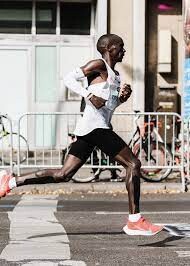
"I always say, if you want to push yourself, come to Berlin."
Each of the last seven lowerings of the men's world record have occurred at the Berlin Marathon.
In the more distant future, Kipchoge plans to add the Paris 2024 Olympic title to the ones he has already secured in Rio de Janeiro and Tokyo.
"That’s a very important thing to me," Kipchoge said.
"Because I am running to make history.
"I am running to tell young people that consistency is what we need, for performing at a high level.
"It's what the world needs.
"I trust I will be lining up in Paris 2024 and having a lot of energy to run to the gold medal."
Nobody has ever won three Olympic marathon gold medals.
In 2019, Kipchoge became the first person to run a marathon in less than two hours as he clocked 1:59:40.2 in Vienna in a specially-constructed event, although this did not count as a world record because standard competition rules regarding pacing and the provision of fluids did not apply and it was not an open race.
Kipchoge refuted the idea that it was not "a real race" today.
"What was in Vienna was a real race," Kipchoge insisted.
"If you run the marathon in sub-two hours it is a real race!
"In Vienna I was making history, and in Berlin, when I ran 2:01.39, I was making a world record.
"I trust that I have showed the way to many athletes of the next generation that one day a human being will run under two hours in a normal course, like Berlin or somewhere."
Turning his attention back to his next race, he added: "I don’t say I am going to run under two hours but I am going to run a very good race.
"I don’t like to commit myself.
"Let us call it a good race.
"And what I trust is, one of these fine days I might even run under two hours…"
(09/19/2022) ⚡AMP
by Mike Rowbottom
BMW Berlin Marathon
The story of the BERLIN-MARATHON is a story of the development of road running. When the first BERLIN-MARATHON was started on 13th October 1974 on a minor road next to the stadium of the organisers‘ club SC Charlottenburg Berlin 286 athletes had entered. The first winners were runners from Berlin: Günter Hallas (2:44:53), who still runs the BERLIN-MARATHON today, and...
more...Ethiopian duo Mengesha and Teshome secure Ethiopian double in Copenhagen
Milkesa Mengesha and Tadu Teshome took top honors at the Copenhagen Half Marathon on Sunday (18). And with 15 men finishing inside an hour at the World Athletics Elite Label road race, the event witnessed record depth.
Mengesha, the 2019 world U20 cross-country champion, beat a quality field to notch up his second half marathon victory of the year, winning in a PB of 58:58. Teshome, meanwhile, smashed her PB to lead an Ethiopian 1-2-3, winning in 1:06:13.
After a steady opening 5km of 14:02, the pace dropped slightly in the following few kilometers of the men’s race as the large lead pack reached 10km in 28:10. The leading contenders – which included Mengesha and his compatriots Amedework Walelegn and Chala Regasa, Kenya’s Felix Kipkoech, Vincent Kipkemoi and Edmund Kipngetich, and South Sudan’s Dominic Lobalu – then started to increase the pace.
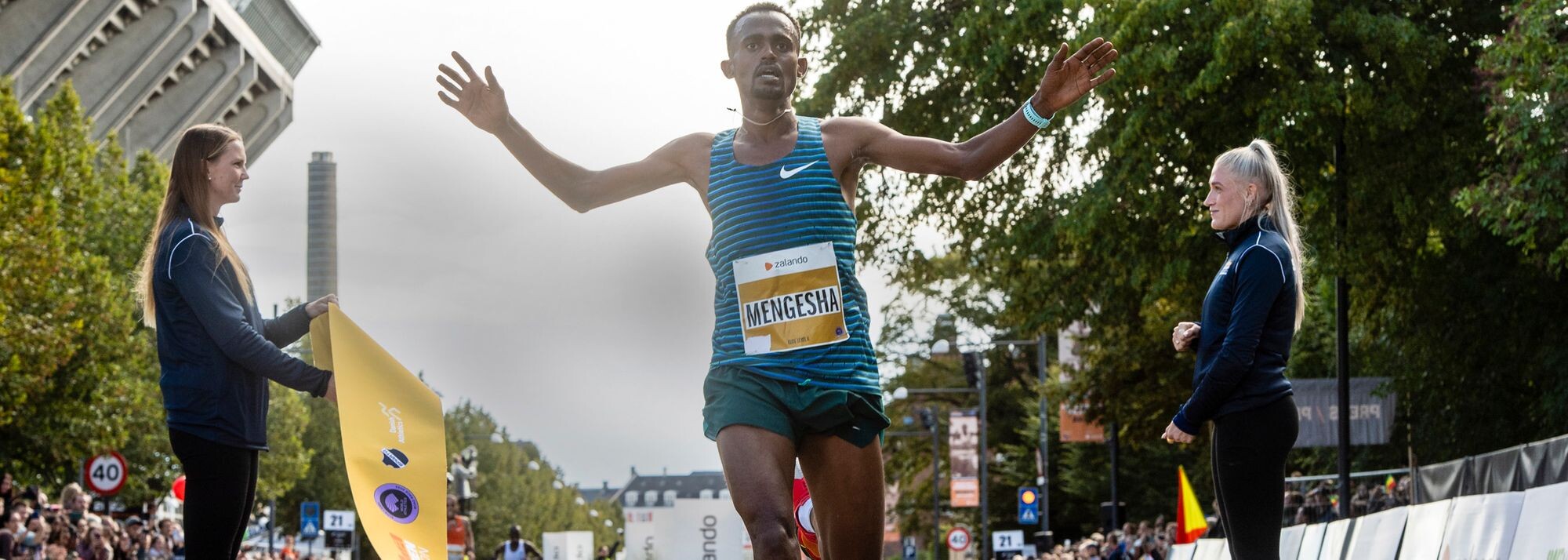
By the time of the 15km checkpoint, reached in 42:06, the lead pack was down to 12. They remained bunched together for a few more kilometers before Mengesha started to ease away, carving out a small lead before going on to win in 58:58. Compatriot Walelegn followed him home in 59:05, two seconds ahead of Kipkoech.
Lobalu, winner of the 3000m at the Wanda Diamond League meeting in Stockholm earlier this year, was fifth in a national record of 59:12. Further back, Switzerland’s 40-year-old Tadesse Abraham became the oldest man in history to finish inside 60 minutes for a half marathon, clocking 59:53.
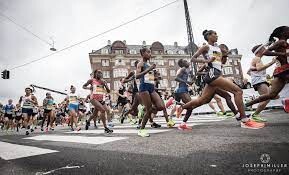
In contrast to the men’s race, which increased in pace as it went on, the women’s race started off remarkably quick but soon became a war of attrition as athletes tried to hold on as best they could.
When the first 5km was covered in a swift 15:19, most of the lead pack decided to ease off the pace, but Teshome and Tsigie Gebreselama maintained that tempo for another 5km, reaching 10km in 30:40 – inside both of their PBs for 10km.
Gebreselama then broke away from Teshome and opened up a gap of 30 seconds by 15km, reached in 46:39, but it didn’t last. Teshome came back over the next few kilometers and caught her compatriot with about two kilometers to go.
Once she was in the lead, Teshome continued to pull away and she went on to win in 1:06:13, 22 seconds ahead of Gebreselama, who was making her half marathon debut. Ethiopia’s Tiruye Mesfin almost caught Gebreselama, eventually finishing third in 1:06:42.
Leading results
Women
1 Tadu Teshome (ETH) 1:06:13
2 Tsigie Gebreselama (ETH) 1:06:35
3 Tiruye Mesfin (ETH) 1:06:42
4 Magdalena Shauri (TAN) 1:06:52
5 Eunice Chumba (BRN) 1:07:34
6 Sintayehu Tilahun (ETH) 1:07:41
7 Janet Ruguru (KEN) 1:07:51
8 Anchalem Haymanot (ETH) 1:08:09
9 Vicoty Chepngeno (KEN) 1:08:22
10 Betelihem Afenigus (ETH) 1:08:35
Men
1 Milkesa Mengesha (ETH) 58:58
2 Amedework Walelegn (ETH) 59:05
3 Felix Kipkoech (KEN) 59:07
4 Vincent Kipkemoi (KEN) 59:09
5 Dominic Lobalu (SSD) 59:12
6 Chala Regasa (ETH) 59:13
7 Edmund Kipngetich (KEN) 59:25
8 Matthew Kimeli (KEN) 59:39
9 Titus Kimutai (KEN) 59:44
10 Ronald Kirui (KEN) 59:51
(09/19/2022) ⚡AMPby World Athletics
Copenhagen Half Marathon
The Copenhagen Half Marathon was the first road race in Scandinavia and is one of the fastest half marathons in the world. The Copenhagen Half Marathon has been awarded with the International Association of Athletics Federation's (IAAF) most distinguished recognition - the IAAF Road Race Gold Label. Copenhagen Half Marathon was awarded the IAAF Road Race Bronze Label in January...
more...Why stretching is important for runners
Do you often get sore after exercising? Do your muscles feel taut and painful? If so, you’re not alone. Many runners find their muscles going tight after their daily workout. This is because some don’t incorporate stretching into their routine.
It’s a common belief that stretching only improves flexibility, but that’s not all. It also decreases your risk of injury and promotes blood flow to your muscles so that you don’t get cramps and stiff muscles. This is why athletes must include stretching in their daily activities, and this is equally true for runners; the benefits of stretching are too significant to ignore. To know more about why stretching is essential for runners, keep reading.
1. Prevents Injury
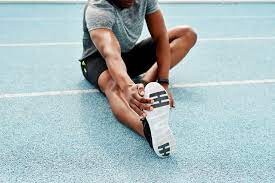
Stretching before running reduces the risk of injury. This is because when you stretch, your muscles expand and enhance your flexibility. As a result, you won’t suffer from injuries that correspond to taut muscles because now you have more room to twist and turn yourself. Your blood flow also increases, so your muscles will get enough oxygen and won’t become sore after your routine exercise. Stretching also decompresses your spine and joints, which helps relieve pain related to these areas.
2. Increases Range of Motion
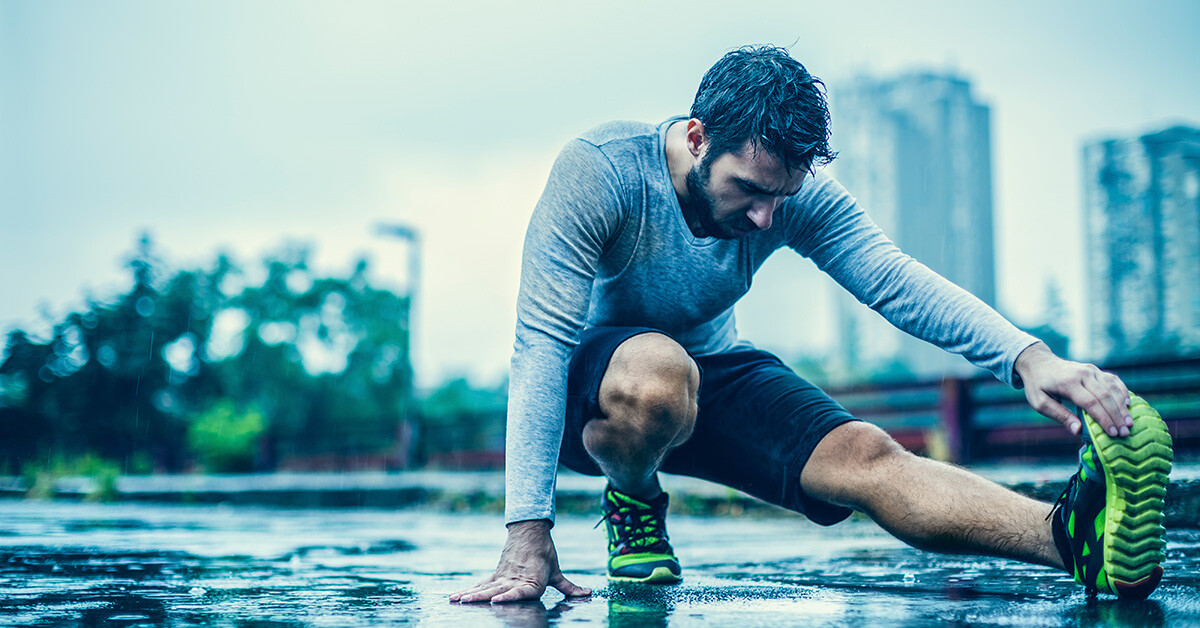
Repetitive athletic movements can cause tension to develop in your body. Through stretching, you decompress your joints. This ultimately increases your range of motion. You will feel that your performance also improves drastically. Runners require larger strides for better productivity, and stretching before the run will enable you to move with longer strides.
3. Improve Posture
A bad posture affects a running stride. One of the reasons why you experience back pain is because you don’t stretch. This affects your posture, and you might experience difficulty running. Stretching manipulates your joints and muscles, decompressing them and improving posture affecting your running pose as well. You will also experience relief in back and joint pain.
4. Impacts Mental Flexibility
Stress affects your flexibility as well. It tightens muscles and causes them to become taut. When you stretch, your body releases endorphins. These hormones reduce pain, and you feel positively good. This can help you decrease stress levels before a run so that they don’t hinder you and you perform your best.
5. Decreases Post-Run Aches
Stretching after a run will loosen your muscles so that you don’t suffer from cramps. It also decreases the risk of any ligament tear many people suffer from. So, runners need to stretch before and after a run. There are different types of stretches, such as active stretching, dynamic stretching, and proprioceptive stretching, to name a few, so be sure to follow a guideline and go for the ones that suit you the most.
Endnote
Incorporating stretches into your daily routine will help improve circulation and flexibility and increase your range of motion. It is especially beneficial for athletes. Stretching is a prerequisite for workouts or sports. It is a meditative and beneficial exercise that increases flexibility and range of motion and decreases the risk of injury. If you do suffer from a fall or any damage, stretching will help you recover faster by enhancing blood flow and alleviating soreness and tautness.
However, stretching without any research and guidance can negatively impact you and cause an injury. You need to know the types of stretches and what proportions you should do them. Be careful and do not overexert yourself.
(09/19/2022) ⚡AMPby Colorado Runner
New thinking on metabolism suggests a 20-year-old has the same metabolism as a 60-year-old
Some surprising truths about matabolism
We imagine our metabolism as a fire, flaming up when we exercise to torch calories. But that’s just a very small fraction of what it does, according to Herman Pontzer, Ph.D., an evolutionary anthropologist at Duke University, the author of Burn: The Misunderstood Science of Metabolism, and the principal investigator for a game-changing new study on metabolism.
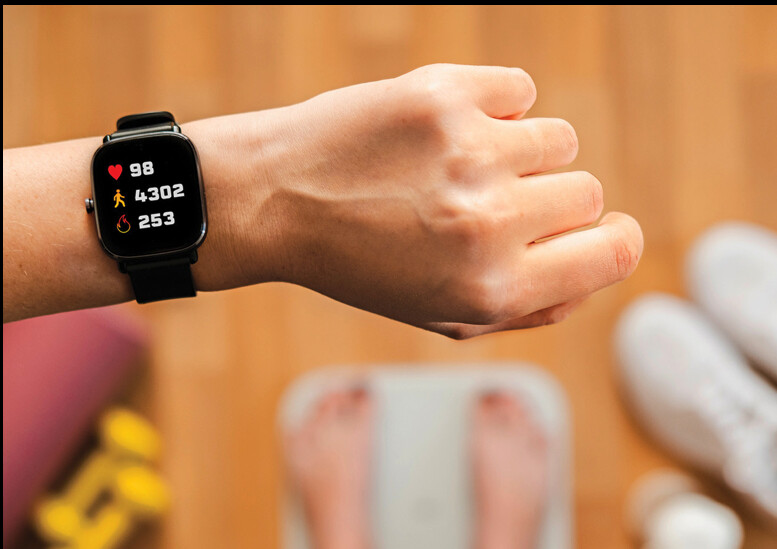
“Metabolism is the work your cells do every minute of every day,” says Pontzer. “You’ve got 37 million of them, and each cell is like a little factory churning out everything needed to keep your body functioning.” Some calories do get burned during exercise, but most of what you eat is used to fuel the continuous work your cells do.
The new research, published in Science by Pontzer and more than 80 coauthors, looked at metabolism more precisely than had ever been done before. It measured metabolism in almost 6,500 people around the world, from newborns to 95-year-olds. Once the scientists controlled for variables that affect energy expenditure, like a person’s body size and percentage of fat, they got “a clear road map of metabolism over our life span,” says Pontzer.
METABOLISM DOESN’T SLOW DOWN IN MIDLIFE
For years we’ve heard that our metabolism peaks when we’re teenagers and slows significantly as we approach middle age. But the researchers discovered that metabolism crests far earlier and declines much later, and that it has four distinct stages.
Metabolism is at its highest during infancy, and a baby’s metabolic rate is 50 percent higher than an adult’s. From ages 1 to 20, metabolism drops about 3 percent a year. Then, from ages 20 to 60, metabolism holds steady. After age 60, it slowly starts to decline (0.7 percent a year). That means for 40 years we’re burning calories at a steady rate, about 2,500 a day on average, says Pontzer. And a 60-year-old has the same metabolism as a 20-year-old!
MEN DON’T HAVE A BETTER METABOLISM
“There’s nothing special about the male metabolism,” says Pontzer. “Men tend to be bigger, and their bodies consist of more lean muscle and less fat.” Muscle uses more energy than fat, which accounts for the difference (the reason he can lose a pound faster than you can). The scientists controlled for these factors and found no difference in metabolic rate.
MILESTONES DON’T CHANGE METABOLISM
It’s a myth that pregnancy and menopause make a big difference. “These major metabolic milestones didn’t affect metabolic rate,” says Jennifer Rood, Ph.D., a coauthor of the study who specializes in research on metabolism and energy expenditure at Louisiana State University’s Pennington Biomedical Research Center. “That was a surprise. But it’s also encouraging. The fact that your rate remains steady through childbirth and into your 60s means you don’t have to work harder to maintain a healthy weight, as long as you follow a healthy diet and get the recommended amount of exercise and rest.”
HAVING MUSCLE HELPS
The types of cells you have affect the amount of work they do and the energy they burn, says Pontzer. “A cell in your fat is not as busy as a cell in your muscles,” he says. “If you have a lot of lean mass, you’re going to burn calories more efficiently than someone who has more fat mass.” That’s why exercise, particularly muscle-building strength training, can be beneficial.
Alas, a reality check: There is no proven way to boost metabolism, says Pontzer. But exercise and diet do make a difference. “Think of it this way: You’re burning a set number of calories each day, but you get to decide how to burn them,” says Pontzer. “If you expend them on exercise, you’re going to be a lot healthier and have less inflammation than someone who doesn’t. The same is true with food. You decide how to fuel your body. That’s where a healthy diet factors in.”
TIMING MEALS MATTERS
When the day begins to wind down, our body does the opposite—cranking up to be at its calorie-burning peak, according to a study published in Current Biology. “We discovered that you naturally burn about 10 percent more calories in the late afternoon than you do later at night,” says Kirsi-Marja Zitting, Ph.D., an associate neuroscientist at Brigham and Women’s Hospital in Boston, an instructor at Harvard Medical School, and the lead author of the study. That’s about 130 calories that your body is torching without any extra effort on your part.
Researchers suspect that metabolism ebbs and flows according to our circadian rhythms. At night, when we’re asleep, our systems are expending less energy, so our metabolic rate slows. Eat in those wee hours, as night shift workers do, and your body isn’t able to burn off the calories, which could eventually lead to weight gain, says Zitting. During the day, when we’re naturally active, our metabolism rises, until it crests around 5 p.m. “Previous research has shown that hunger spikes in the afternoon as well,” says Zitting. “Since that’s also when we’re burning the most calories, it makes sense that we’re hungriest then, too. Our bodies may be tuned to a late-in-the-day rhythm.”
Syncing our diets to our internal clocks can have health benefits. For general well-being, the most important thing is to maintain a regular schedule, says Zitting. “Wake up and go to bed around the same time every day,” she advises, “and have breakfast, lunch, and dinner at about the same hours as well.” Your body is primed to do things at certain times. Throw its agenda out of whack, and your sleep, health, and weight can suffer.
Also, avoid eating at extreme hours. Let’s say you get home from work at 10 p.m. Don’t consume a big meal then because your body is in slowdown mode and is less likely to burn it off, says Zitting. Instead, have a healthy dinner earlier, before you leave work.
Finally, it may help to eat your carbs early in the day and foods higher in fat at night. “Our research found that you are more prone to burn carbohydrates in the morning and lipids [aka fats] in the evening,” says Zitting. “The difference was small, but it was significant.”
(09/18/2022) ⚡AMPYou’ve Heard of Running for Beer. But What About Running as Beer?
New Zealand ultrarunner Glenn Sutton finished the Dunedin Marathon on September 11 in a huge beer can costume that he crafted himself.
You might find this hard to believe, but only one of the 165 runners that completed the Dunedin Marathon in Dunedin, Otago, New Zealand on September 11 was wearing a human-sized beer can costume.
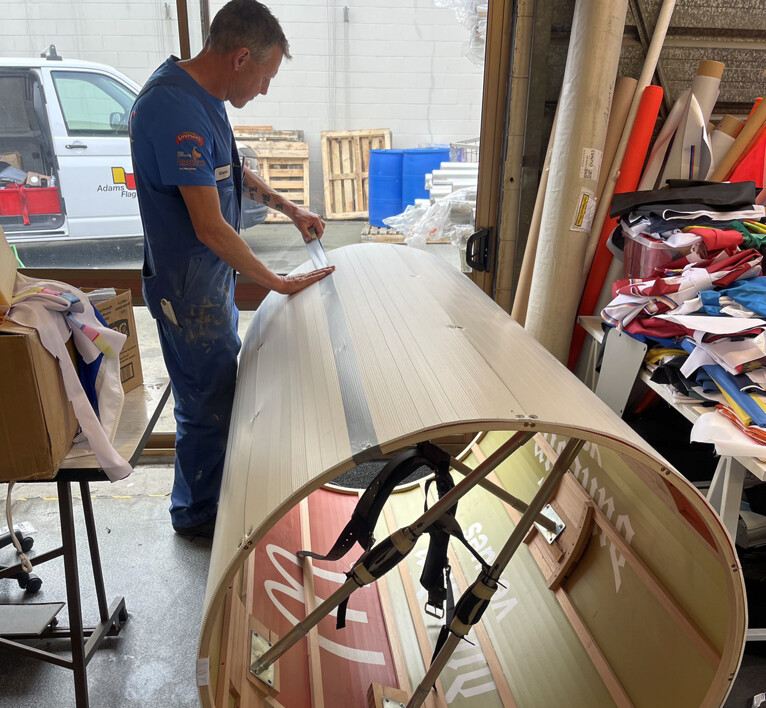
Glenn Sutton, a 48-year-old ultra runner from Dunedin, and local brewery Emerson’s, the marathon’s sponsor, came up with the idea before the COVID-19 pandemic canceled the 2020 edition of the marathon.
“I thought it would be something quirky to do. I hadn’t seen it done before,” Sutton told Runner’s World. “I’ve seen cans where people’s arms and heads poke out, but not a full-size can.”
After two long years of waiting, the Dunedin Marathon was finally scheduled for fall 2022, so Sutton got to work. A joiner by trade, he put his ornate woodworking skills into constructing a beer can costume that would cover his entire body from his head to just above his feet. His friend Bruce Adams made the signage that covered the wooden frame, which depicted Emerson’s Super Quench, a low-carb Pacific pilsner that launched earlier this year.
While in the can, Sutton couldn’t use his arms much and could only manage a shuffle rather than a full stride. It was hot, “like running in a glass house,” Sutton said. He could only see through a plastic cut-out at eye level, which blurred his already obstructed vision.
On race day, Adams ran about five meters ahead of him to make sure Sutton was on the right path. Sutton, who’s run ultra races like the days-long Badwater 135 before, wasn’t worried about taking his time to finish the race. He typically runs under three hours for marathons, but knew this particular attempt would take longer—especially if there were setbacks along the way.
Unfortunately, a major setback did occur. With 5K left, an unexpected gust caused Sutton to clip his foot on the inside of the can. He tried to catch himself, but fell on the footpath.
At that point, he was “like a turtle on its back,” rolling around while locked into harnesses around his shoulders and waist. Though the can took some damage, Sutton survived the fall unscathed. He unstrapped, got out, re-strapped in, and trudged forward for the final three miles.
As he neared the end, Sutton heard his name over the loudspeakers. A crowd clapped him through the finish line, which he crossed in a time of 6:12:37.
“It was quite cool,” said Sutton. “It drew a bit of attention, and that’s what it was all about.”
Sutton’s next challenge? Big Dog’s Backyard Ultra Satellite Team Championships, where he has to run a 4.167-mile loop at the top of the hour, every hour, for as long as possible. Nations choose their 15 best ultra runners to compete against the rest of the world, and the team that logs the most yards wins. If Sutton outlasts his 14 New Zealand teammates, he individually qualifies for the Backyard Ultra world championships in October 2023.
“I enjoy challenging myself to go these distances,” said Sutton. “I don’t mind grinding it out—and I want a bit of pain.”
(09/18/2022) ⚡AMPby Runner’s World
Some races are down since the pandemic took charge of road racing for a couple of years but there is some good news
Even marquee events have seen declines of 25 percent or more between 2019 and 2022.
Across the country, many road races are returning after the COVID-19 pandemic forced them into a two-year hiatus. But runners haven’t yet come back to those events in the same numbers as they were turning out in 2019.
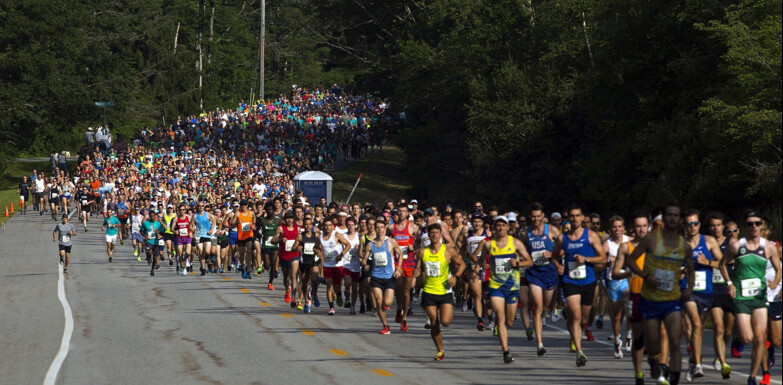
A few examples from the first eight months of 2022:
The BAA 10K in June had 5,144 finishers, down from 8,003 in 2019, a decrease of 35 percent.
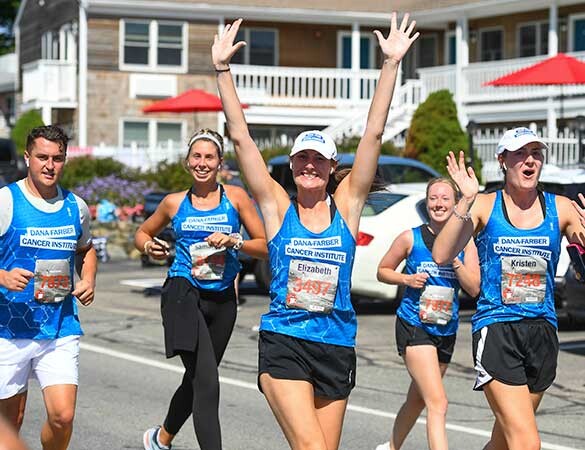
The Utica Boilermaker 15K in July had 5,848 finishers, which was up from 2021, when it had 3,480, but down from the 2019 tally of 11,194, for a three-year decrease of 47 percent.
In Colorado, the Cherry Creek Sneak, a 5K, 5-miler, and 10-miler in Denver, had its final running in 2022 after 40 years. Combined participation in the three events had already been falling before the pandemic, and it fell an additional 38 percent between 2019 and 2022 (from 3,390 finishers to 2,092).
Larger, well-known events haven’t been immune from the declines. The Cherry Blossom Ten Mile Run in April in Washington, D.C., had 2,700 fewer runners, for a decline of 15 percent.
The Falmouth Road Race in Massachusetts and the Beach to Beacon 10K in Cape Elizabeth, Maine, two popular destination summer road races, saw declines of 24 percent and 16 percent, respectively. The town of Falmouth reduced the field size of the race to 10,000 runners this year (from its usual 12,800) but only 8,610 finishers appear in the results.
Jean Knaack, CEO of the nonprofit Road Runners Club of America, wrote in an email to Runner’s World, “We are seeing a slow recovery in 2022, and we are tracking with participation data showing about 84 percent return.”
Why aren’t runners coming back to events? Industry experts cited many theories:
The economy: “I think inflation will be a factor for 2023 as events plan and people pick what events they can afford to run,” wrote Knaack. The cost of travel to races—for flights, hotels, rental cars, gas—has gone up. So, too, have race entry fees for many events, especially for runners who wait until the last minute to register.
Competing events: Long-postponed weddings are back on. So are family vacations. The annual road race might need to take a back seat this year.
COVID concerns: Many runners worry about contracting COVID at a race, or they get sick at an inopportune time, keeping them from the starting line.
Shifting priorities: Erin Vandenberg, 42, for years raced at least monthly, often more, at distances from 5K to the marathon. Running a race with coworkers and then getting drinks after in downtown Chicago was a common occurrence. But she always felt a certain pressure to be training hard and performing well, worried what the time read on the clock at the finish.
Since the pandemic, she has taken a new approach to running. “I want to enjoy it; not stress myself out about it,” she said. “I don’t know that getting up at 5 a.m. to hit a certain pace and worry whether I’m fueling correctly is how I want to spend my time.”
Vandenberg has run three races in 2022—including one with her dog.
Not every race is down. Michelle La Sala, president of race management company Blistering Pace, says two of the events her company works on—the Big Sur Marathon and the Napa Marathon—have emerged largely unscathed from the pandemic. Big Sur was down only 240 runners (6.8 percent) and registration is tracking strongly for 2023. Same for Napa, which “should grow significantly this year,” La Sala said.
The bigger “bucket list” marathons, with a few exceptions, are not having any problems at all, she said, while smaller, regional races, without a compelling point of differentiation, are “on the struggle bus.”
Grandma’s Marathon along Lake Superior in Minnesota was off only 6.4 percent in 2022 from its 2019 tally, and well up from 2021. The Eugene Marathon, in May in Oregon, and the Missoula Marathon, in June in Montana, were both well ahead in finisher numbers, although many might have been deferred entries from the cancellations of 2020 and 2021. Vandenberg has a deferred entry from the Chicago Marathon in 2020, and she plans to use it in 2023.
John Mortimer, owner and founder of Millennium Running in Bedford, New Hampshire, sounded an optimistic note as well. Millennium has 30 of its own events of varying distances, manages and times others, and it has a running store. Sales are strong at the retail location, showing him that people continue to walk and run, even those who took it up during the pandemic.
And race participation in Millennium events continues to be robust, in part, because the company developed a time trial start system during the pandemic as an alternative to a mass start race. For many months, they had the only events happening in New England.
The company kept in frequent contact with runners and tried to make the race experience safe and convenient for them. They continue to offer the option to make any race a virtual race, up until the last minute, if runners would otherwise have to be a no-show at an event—thereby ensuring the runners would at least be mailed their tee shirts and medals.
That policy will continue, Mortimer said. “Every week we’re shipping out apparel and medals and bibs,” he said. “We’re trying to make it easy for the participant to be a part of the running community.”
The effort aimed at keeping relevant has paid off, Mortimer said, and registrations for most of the company’s events haven’t declined. The same can’t be said, he knows, for races that have been off for two years.
For them, “It’s out of sight, out of mind,” he said. “People have moved on.”
(09/18/2022) ⚡AMPby Runner’s World
How Running Played a Big Role in the New Film, ‘The Woman King’
We spoke with the director and the run coach on set to get the scoop on training.
There’s a moment in The Woman King (released today) that, no spoilers, is one of the best running scenes this film-lover and running enthusiast has ever seen on screen. It involves the titular character and protagonist, Oscar-winning actress Viola Davis, dressed in the attire of the warrior army she leads. She sets off defiantly, on foot with machete in hand. As she takes her first few steps, bold and unwavering, we see not far behind her, the other Agojie women running in single file after her. It’s a rousing action that captures the heart and soul of the mighty Hollywood epic—and the running looks masterful.

It’s thanks to director Gina Prince-Bythewood’s own love of and dedication to running that the scene works as well as it does. A former triple jumper at UCLA, Prince-Bythewood tells Runner’s World that it drives her nuts “when you watch an action film or sports film and the actors can’t run.”
Known for her character-driven films, from Love & Basketball to The Secret Life of Bees, the director flexed her action film muscle in The Woman King. Set in 1820s West Africa, it’s about the all-women military squad of the Kingdom of Dahomey, called the Agojie.
Bringing The Woman King to the big screen was a years-long Herculean feat in itself—with Davis, Prince-Bythewood and the producers having to navigate a host of behind-the-scenes challenges Black women face in the entertainment industry before they even started filming, from convincing executives to bankroll their movie to being allowed to do hair and make-up the way they wanted it. To handle the on-set demands of shooting in South Africa, Prince-Bythewood wanted to make sure her cast was prepared.
Why Prince-Bythewood Prepped the ‘The Woman King’ Cast for Running With the Help of a Coach
Along with months of grueling martial arts and weapons training plus weight lifting, Prince-Bythewood enlisted the help of running coach and former 400-meter champ Jerome Davis. “Jerome is an incredible coach,” she tells Runner’s World. “There’s a difference between just learning to run and learning to run well. Also, there’s a difference between sprinting and long-distance running. I needed everyone to look good doing both.”
Having worked with Jerome Davis before, on both The Old Guard, with Kiki Layne, and the TV series, Shots Fired, with Sanaa Lathan, Prince-Bythewood was confident Davis could work his magic on The Woman King. She gave him the direction to make the women look athletic and believable.
“That was the key word, ‘athletic,’ especially in the heat of an action scene. I wanted it to feel second nature; these women grew up running. Running was an important part of their training, and I wanted the audience to feel the natural gait of these women,” says Prince-Bythewood.
Davis, who competed at the World U20 Championships and the World University Games in the late 90s, believes he’s always been a coach at heart. “I think it started in high school, I would always try and encourage my teammates, and it was kind of natural. I just always love to see people achieve and do their best,” he tells Runner’s World. Having been a coach for more than 20 years, these days he works a lot with elementary and high school runners.
The key to a good running scene, Davis says, is that you want to get as close to what you would see in a race or a good high school meet. “You want the form to be great,” he says. Running on film is like any other skill an actor might have to pick up for a role. “It’s like being a musician or a barber, you think, ‘Oh, they just do it. They just show up and the work comes out beautifully and it’s just easy.’ But the reality is, it’s an art form to it.”
Getting actors to perform the art of running requires flexibility and patience, considering they’re obviously not professional runners. So Davis asked them for an hour a day, three to four days a week, “and I’ll make you look like you have run your whole life.”
What Run Workouts Looked Like for the Cast of The Woman King
A large part of the hour-long run sessions, which took place over six weeks, focused on the warmup, which Davis sees as essential, both in achieving a solid foundation for good running form and preventing injuries that could impact the production schedule. In Davis’ workouts, that warmup would include drills.
“I’m a very big believer in plyometric drills to be able to activate the muscles that you want to use, and not only activate the muscles you want to use, but help get you in the mind frame of good running technique,” Davis says. Working on a small track at Cold Canyon Park in Beverly Hills, the actors would start with A-skips and butt kicks, and he’d have them run backwards to activate the hamstrings.
Because the actors would only have to run short distances for their scenes, he kept the track work short and honed in on repetition. “I would have them do build-ups of about 70 meters,” he says. “So every 10 meters they would get faster and faster and faster. And then they would walk back, and then they would get faster and faster and faster. I’m trying to get them at about 90% of their maximum speed.”
At the end of sessions, Davis had everyone do a two-lap cooldown, along with some stretching.
But Davis’ main focus during workouts: how the actors hit their stride, which he gave pointers on every chance he got. “I’m really focusing on their form; I’m looking at their arms, I’m looking at their hands, I’m looking at their facial expression,” he says. “There’s a cadence that comes with running and there’s also a controlled force. I want you to be fierce but I also want you to be relaxed.”
Davis also made sure the actors had a solid knee drive, activating the hip flexor, and pulling that knee up toward the chest—something he considers a telltale sign of whether someone is a runner if they can hit that point of the stride.
Another one of Davis’ mantras he’d impart to the actors? “Arms dictate your legs.” If you want to go faster, he’d tell them, you have to move your arms faster. “Your arms swing from your shoulder. There’s a ball inside of your shoulder for a reason. Your arms need to stay at 90 degrees so that you’re using the ball,” he says.
Davis worked closely with the women who make up the Agojie, including Adrienne Warren and Thuso Mbedu, who play the newest recruits to the army in The Woman King. Mbedu, a 31-year-old South African actress known for The Underground Railroad, has been vocal about her dislike of running on her social media. “Thuso hated running when we started,” says Prince-Bythewood. “I won’t say she loves it now, but she respects it.”
Davis commends Mbedu for her commitment to the training. “She would get so nervous to come see me,” he says. “But her last couple of sessions, I was like, ‘Alright, you’re getting it, I can tell it’s all starting to click.’”
While the Agojie women worked with Jerome Davis on their running, their general, Viola Davis worked with her long-time trainer Gabriela Mclain. At one stage, Davis was running a 6:23 mile on the treadmill, which Prince-Bythewood says made everyone feel proud: “That’s a full out [effort], and props to Viola for putting in the work.”
On set, Jerome Davis also chimed in with running tips for the actors, making them warmup for about 15 minutes ahead of filming run scenes. “You might be 19 years old or you might be 45 years old, but please, make sure you warm your body up. The directors, the associate producers, none of those people understand warming your body up. They just think you can go out there and just perform and run,” he says. “They’re just gonna say, ‘Action!’ That’s all they’re gonna say, and then you’re going to blast these reps of running, and next thing you know you come up with an injury and you’re out for weeks and weeks.”
In addition to warming up, Davis promoted the importance of massages and hydration to the actors to keep them in shape for every high-energy scene.
Overall, Prince-Bythewood was happy with the results. “People don’t pay enough attention to running when they’re doing action films, but for me, as a former track star, it’s all I pay attention to.”
How Running Has Shaped Prince-Bythewood’s Life Off Screen
Growing up loving to race her sisters, running has been a constant in the director’s life, from playing soccer to basketball, and then cross-country and track at school.
After college, as her film career took off, Prince-Bythewood’s running slowed down for a moment, but she got back into it after the birth of her sons and the C-sections she had. “It’s hard to come back from that: your mind tells you can do stuff and your body is not aiming and listening,” she says. “But it was through running that I was able to get those two in sync again.”
While making movies may keep her often too busy for the kind of runs she likes to take, Prince-Bythewood will always take any opportunity she has to bring it into her work—especially when presented with a scene like the one led by Viola Davis that has the potential to stay with audiences once the credits have rolled and the lights go up.
“I remember reading that scene in the script and feeling lifted. It was one of those scenes where, as a director, you feel the importance of it because you’ve reacted to it as an audience first.” Hiring a running coach is testimony to the devotion Prince-Bythewood had in making that scene—and the film as a whole —work as powerfully as it does.
MORE FROM RUNNER'S WORLD ON APPLE NEWS
(09/18/2022) ⚡AMPby Runner’s World
Your breath might be holding you back and these three drills help freedivers learn to use their lungs as efficiently as possible.
When it comes to training, many of us spend a fair amount of time devoted to designing the exercise routine itself (like how to get that extra pump on chest day), our form, gear, and recovery. One category we often overlook? The most basic and important thing of all: Breathing.
The MH team met up at the Red Bull Performance Camp with Kirk Krack, freediving coach at Performance Freediving Academy, to learn breathing drills that he uses to help people learn to optimize the lungs. Men’s Health fitness director Ebenezer Samuel, C.S.C.S. served as the guinea pig. Check out the video to learn how Krack helps people optimize the ole inhale and exhale. Below, a brief rundown of some things we learned.
“Our lungs are balloons trapped inside of cages," explained Krack. "Our lungs have the ability to expand more than the cage, than the ribs and the muscles… so how do we increase that by doing certain training and stretching routines? Specific to freediving, we can increase our lung volume up to 15 percent and more.”
What's more, Krack added that by holding our breath underwater, we can push more red blood cells into the circulatory system. “So that's like a natural form of doping,” he said.
Krack noted that there's definitely a level of risk in holding our breath. “We're going through a level of hypoxia of varying degrees of lack of oxygen That could potentially get to the point where we can't make the decision to come on up and that could be a fatal thing if you were doing it by yourself in a pool,” he said. “So this is something we always do with a trained buddy, knowing what the procedures are and what to look for, the hazards, and as well as how to do it properly, is really important.”
3 Breathwork Drills for Better Lung Capacity
Here are the three drills Krack put Samuel through. Don't give these a try on your own; even at the seminar with Krack leading the exercise, everyone trained with a partner.
Drill 1: Ventilation
This inhale-and-exhale cycle is a boon for stress relief. “This is really great for focus control and stress and just kind of getting yourself back into your headspace and your game as well as calming you down and relaxing you because it's really about lowering the heart rate over those course of breaths or of the minutes that you're breathing like that,” said Krack.
Drill 2: The Purge
You’ll incorporate your chest into this one. With high intensity exercises, you accumulate carbon dioxide, said Krack. “That's why you're breathing heavily. So if you breathe with more intention, to get rid of the CO2, that's going to prep you and get you ready for the next exercise.”
Drill 3: Peak Inhalation
Time to fill those lungs up, folks. For most people done in a safe way with a trained partner or at home out of water, Krack said it’s good to aim for a two-minute breath hold. “And we're going to go from the diaphragm, the lower to upper chest. We're going to actually engage the shoulders and the neck as well, trying to get as much volume into our lungs,” said Krack. “It's our main fuel tank.”
Worth noting: In addition to being physically tough, this isn’t easy mentally, either. Give yourself from grace if this doesn't come easy. “Breath holding is part of our primal fears," Krack said. "It's fear of falling, being eaten, and this one suffocation."
(09/18/2022) ⚡AMPby Men’s Health
SIMBASSA, BRUCE VICTORIOUS AT THE USATF 10 KM ROAD CHAMPIONSHIPS
Abbabiya Simbassa ran an incredible final mile on the men’s side, while Stephanie Bruce used a furious kick to the finish in the women’s race, both claiming victory Saturday morning in Northport, New York at the USATF 10 km Road Championships presented by Toyota.
The USATF 10 km Road Championships was the ninth stop on the 2022 USATF Running Circuit presented by Toyota.

As the starting cannon sounded, the men’s field immediately strung out along the streets of Northport, with Jacob Thomson pushing the pace and taking over the early lead. The honest early pace kept the front pack small, with Thomson being joined by Sam Chelanga, Simbassa, and Korir, with a few second gap back to the rest of the field. With the halfway point in sight, Thomson opened a small lead over the rest of the lead quartet, passing through the 5 km mark in 14:21 and earning a half-way bonus.
Chelanga and Simbassa passed through two seconds back in 14:23, with Korir coming through 5 km in 14:27. Thomson would fall off pace shortly after halfway, with Simbassa and Chelanga taking over the pacing duties and pushing the pace over the next mile.
Korir sat just behind in third. With less than two miles to go, Simbassa pushed the pace and opened an immediate gap on Korir and Chelanga. Simbassa continued to push over the next mile, opening a nearly 20-second lead heading into the final mile of the race.
Over the final mile, Simbassa maintained both pace and form, extending his lead ever so slightly, on his way to claiming his third USATF Running Circuit title, crossing the finish line in 28:12, a new course record. Behind Simbassa, Korir and Chelanga waged an epic kick to the finish, with Korir pulling ahead by a step in the final meters to claim second overall in 28:34, while Chelanga placed third in 28:35.
Dillon Maggard, Futsum Zienasellassie, and Tai Dinger ran much of the race together Saturday, but in the end, it was Maggard pulling away in the final mile to claim fourth in 28:45. Zienasellassie earned another top-five finish on the USATF Running Circuit season with his fifth-place effort in 28:55, while Dinger finished a second behind in sixth in 28:56. Geoffrey Kipchumba claimed seventh overall in 29:00. Thomson slid back to eighth overall in 29:19. Ryan Kutch and Brian Barraza rounded out the top ten in 29:28 and 29:34.
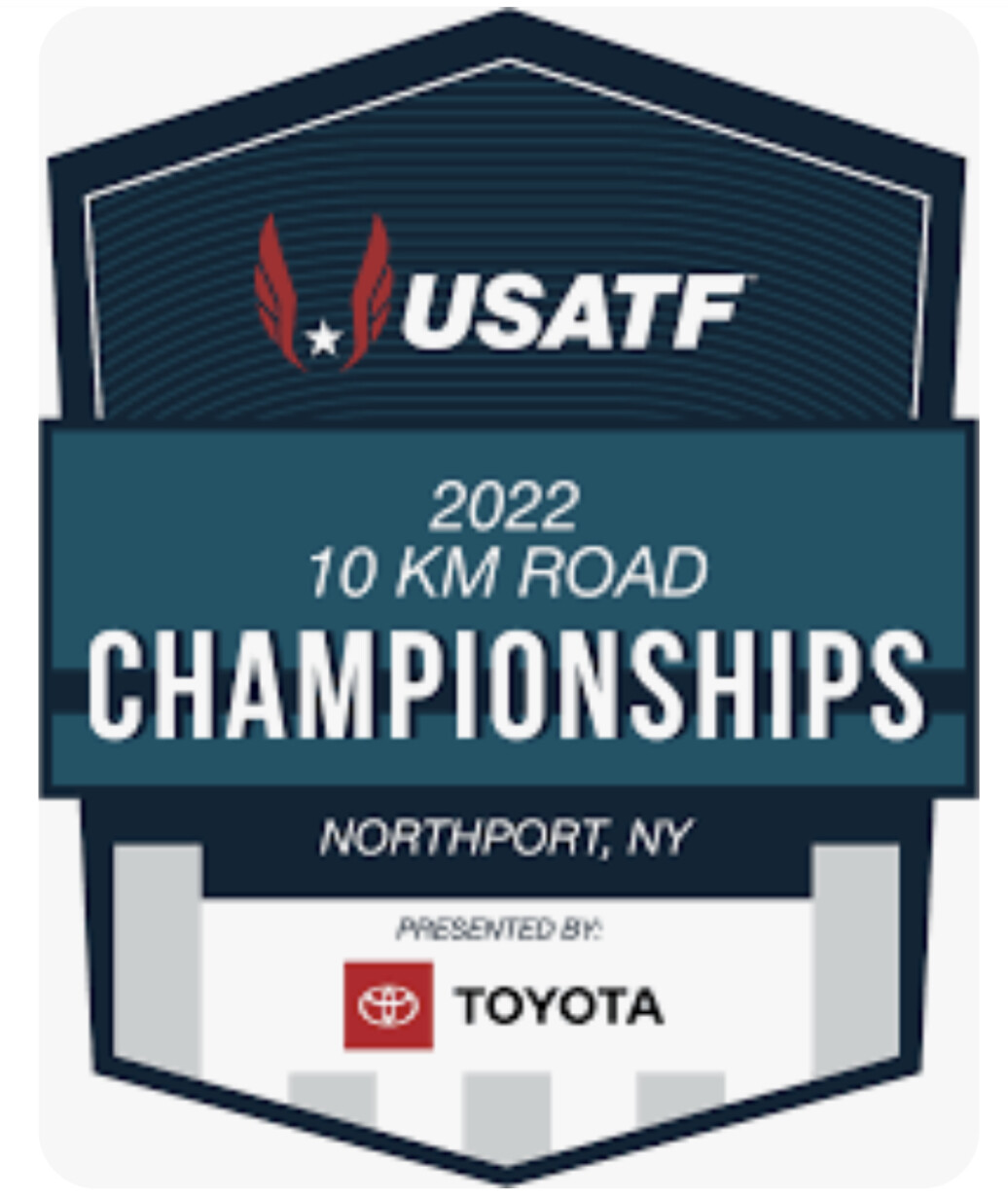
With Korir’s runner-up finish, his second of the USATF Running Circuit season, he elevated himself to an even more dominant first-place standing, with a 104 point total. Zienasellassie’s fifth-place effort added another six points to his standings total, giving him 56.5, sitting in second place overall. Chelanga’s third-place finish moved up into third place overall in the standings with 42 points.
Early in the women’s race, a pack of four women pulled away from the field, establishing a pace that no one else could manage. Bruce, Annie Frisbie, Nell Rojas, and Ednah Kurgat formed a tight pack and worked with one another along the streets of Northport.
The quartet came through the halfway point mark in 16:05, all four looking strong and able to handle the fast pace. Little changed among the top four until the final mile and a half, when Kurgat started to dip off the back of the pace, while the other three charged ahead, seemingly only a matter of time before someone made a move to try and break open the race.
Over the final mile, Bruce charged to the lead, ramping up the pace, a move that would prove decisive. Bruce pulled away from Rojas, Frisbie, and Kurgat, and never looked back, raising her arms as she crossed the line while earning her second USATF 10 km Road title and her third USATF Running Circuit victory of her career.
Bruce finished first in 31:52, while also breaking the course record. Rojas was able to break free of Frisbie and Kurgat in the final 800m to place second in 31:56, while Frisbie finished two seconds back in 31:58 and Kurgat seven seconds back in 32:03, as the two placed third and fourth, respectively.
With her runner-up effort, Rojas added 12 more points to her USATF Running Circuit standings total, giving her 33 points overall. That addition moves Rojas up into sole position of third overall, a half point ahead of Aliphine Tuliamuk, but still well behind USATF Running Circuit standings leaders Emily Sisson and Keira D’Amato, who are tied for first with 55.5 points.
After the top four women, there was a race for fifth happening over the back half of Saturday’s contest. In the end it was Emma Hurley pulling away from the field in the final mile, racing to a fifth-place finish in 32:49. Hurley finished just ahead of Amy Davis and Molly Grabill, who ran to sixth and seventh place finishes in 32:52 and 32:54. Erika Kemp, who owned the previous course record, placed eighth overall in 32:59. Carrie Verdon took home ninth place in 33:05 and Anne-Marie Blaney earned tenth in 33:21.
Next up on the USATF Running Circuit is the USATF 10 Mile Championships presented by Toyota, which take place on Sunday, October 2 in Minneapolis, hosted by the Medtronic TC 10 Mile.
(09/17/2022) ⚡AMPTry this effort-based speedwork to crush your fall trail race
Whether you’re trying cross-country for the first time or have signed up for a fall trail race, taking your speedwork to the trails is a game-changer. It can be a bit of an adjustment to shift from road running to trails–you’ll be running these intervals based on effort, not pace.
Trail running is particularly spectacular in the fall. Crisp leaves underfoot, end-of-summer warmth in the air, and the opportunity to eke out a few more runs in shorts make trail time glorious before the snow flies.
Out-and-back repeats
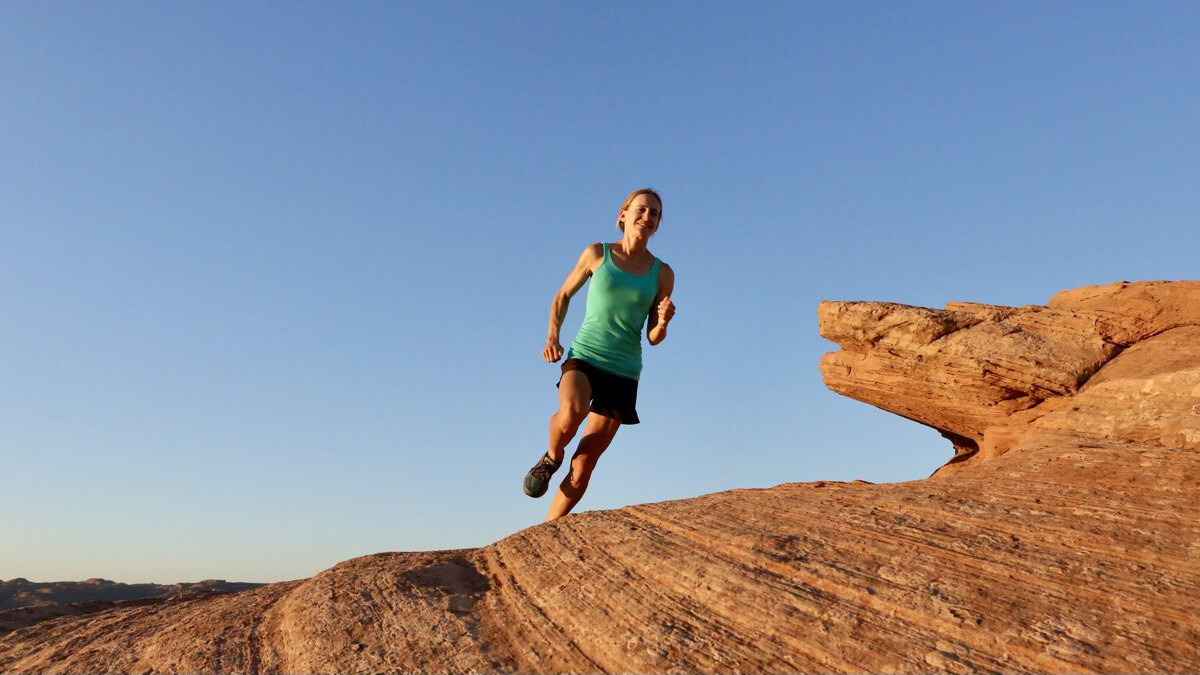
For these out-and-back repeats, pick a starting point on the trail and mark it. After you’ve finished your hard three-minute interval, mark your endpoint. Recover with easy jogging, and then run your next hard interval from the endpoint back to the start, trying to make it past the point where you began. Challenge yourself to run a little bit further each time, even if it’s only a few extra steps.
Warm up with 10 to 15 minutes easy running.
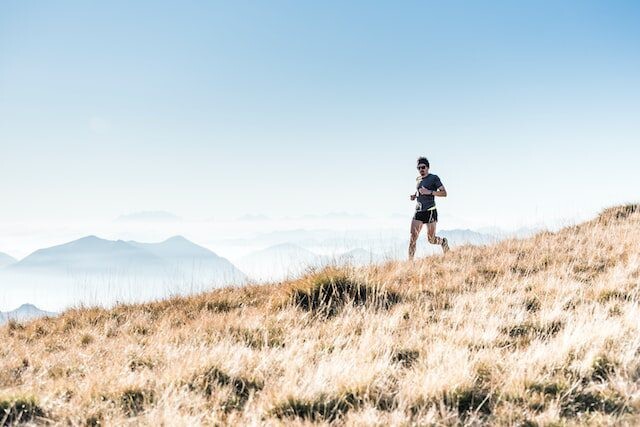
Start with 6 x 3 minutes hard effort, 90 seconds rest or easy running between each one.
Cool down with 10 minutes easy running.
Pace-change sprints
Fine-tune your acceleration and deceleration skills on the trails by adding these pace-change sprints after an easy run of any length. Find a path roughly 100 metres long (your best guess is fine) and divide it into thirds, marking each section or noting a landmark.
Run at a medium-hard effort to start, hard for the second section, then medium-hard to finish; walk or run easily.
Remember to follow a speedwork session with an easy or rest day, and hydrate, even in the cooler fall temperatures.
(09/17/2022) ⚡AMPby Keeley Milne
Eilish McColgan will race Great Scottish Run 10k on October 2
British and European 10km record-holder will take on distance on the streets of Glasgow.
Eilish McColgan will be back on home turf this autumn as she takes on the Great Scottish Run on October 2.
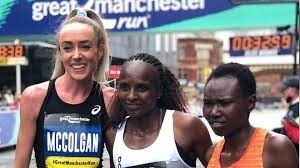
The 31-year-old holds the British and European 10km record – a time of 30:19 which she set at the 2022 Great Manchester Run – and will be confident of another fast time in Scotland’s biggest city.
McColgan was meant to make her much anticipated marathon debut in London on October 2 but after experiencing low blood sugar levels during long training runs – a condition called ‘rebound hypoglycaemia’ – she delayed her first taste of 26.2 miles until April.
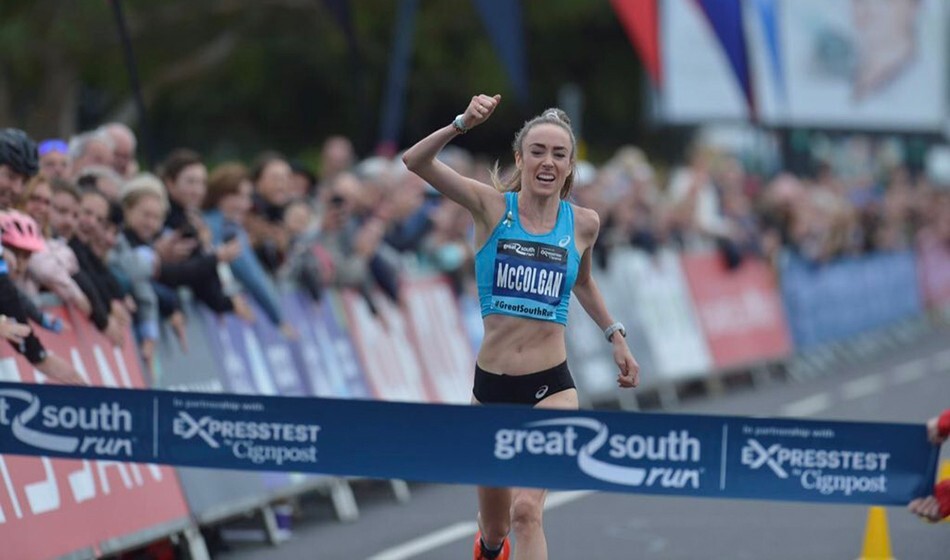
The Scottish athlete has had a quite extraordinary year that has seen her set British records over 5km, 10km and the half-marathon, while on the track McColgan also claimed four major championship medals, including a famous Commonwealth 10,000m gold medal for Scotland in Birmingham.
She became the first British distance runner to compete in six championships outdoor finals in the same season and covered an astonishing 31 miles over five weeks on the track.
At the Great North Run (September 11), McColgan was the official honorary starter, setting 60,000 runners on their way from Newcastle to South Shields in the world’s biggest half-marathon.
“It’s been a great year for me, culminating in my medals on the track, the highlight was my Commonwealth Games victory, roared on by the crowd,” McColgan said.
“After postponing my marathon debut until next year and being involved in last weekend’s Great North Run, I feel I have one more race left in me this season.
“I can think of no better place to do that than to come home and take to the streets of Glasgow over 10km on October 2 at the Great Scottish Run.”
“It was a real honour to see Eilish get the Great North Run underway last weekend,” Paul Foster, Chief Executive of the Great Run Company said. “She has been an amazing ambassador for our sport and continues to inspire people around the UK on and off the track.
“It’s an incredibly exciting prospect to have Eilish completing a stellar season with a debut performance at the Great Scottish Run. I’m sure our runners will be delighted to have the opportunity to run alongside her in person.”
“The Great Scottish Run is one of the UK’s premier running events and Scotland’s biggest 10km & half-marathon.
(09/17/2022) ⚡AMPby Tim Adams
Great Scottish Run
Experience the inspiring atmosphere of Scotland’s biggest running event and achieve something great this autumn. This spectacular weekend of running is a celebration of sport that is suitable for the whole family and is televised live on the BBC. The Bank of Scotland Great Scottish Run half marathon welcomes thousands of runners to the city of Glasgow every year. The...
more...Use this lower body strength workout to improve your stride power
When you’re running, your legs and core drive most of your body’s momentum. Strength training can improve your hip mobility and lower body strength, and will make your running more efficient and your stride more powerful.
This workout is designed to improve agility and balance by developing the largest muscles in your hips, glutes and legs. These muscle groups are responsible for stabilizing your entire body during a run, and building them will help you not only run stronger but faster too.

The workout
Try three to five circuits of the exercises below and give yourself 90 seconds to two minutes’ rest between each exercise.
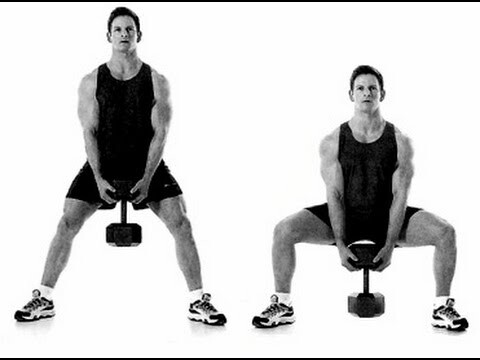
10 reps of single-leg Romanian deadlifts (each side)
The single-leg Romanian deadlift (RDL) involves hinging forward from your hips until your upper body is almost parallel to the floor. As you lean forward, your non-weight bearing leg is extended straight back behind you.
This range of movement develops your hip mobility, hamstring and hip-flexor flexibility.
10 to 15 reps of standing lunge with weights (each side)
Start by standing up straight and step ahead with one foot. Lean forward until your forward knee reaches a 90-degree angle and your rear knee is parallel to the ground. Return to the starting position and repeat with your other leg. Using weights will help build your power and balance (though the exercise can also be done without weights). Start with lighter dumbbells and move up to heavier ones if it feels too easy.
Make sure to keep your back in a neutral position, but don’t flatten the curve of your lower back. You want your knee to stay behind your toes and centred over your foot.
10 to 15 reps of Sumo squats with a medicine ball/weights or weighted item
Stand with your feet wider than shoulder-width apart and your toes pointed slightly out. Hold a dumbbell, medicine ball or a weighted item with your hands in front of your hips.
Push your hips back and squat down, keeping your chest up and knees out. Bring the weight you are bearing down to the floor in between your legs. Then stand back up to the starting position and repeat.
(09/17/2022) ⚡AMPby Marley Dickinson
Maybe races should hand out ribbons, not medals
For new runners, a race finisher medal is a significant symbol of personal development; you trained, you raced, and you finished. And that medal is a reminder of your accomplishment. I like the idea of putting a keepsake around your neck for something you’ve achieved. But after a while, as you run more races, you accumulate so many finisher’s medals that they start to seem like meaningless clutter.
When I began racing 20 years ago, I remember receiving race ribbons for finishing my small local 5K and also at elementary school track and field meets.

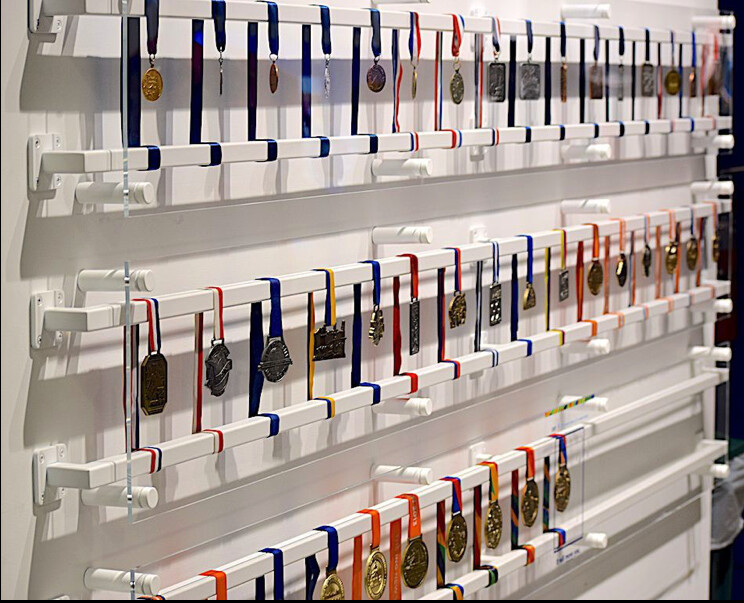
Ribbons are lightweight and easy to store. But there’s also so much more that you can do with them. You could create a scrapbook of all your race ribbons. You could sew them into a blanket. Or simply pin them to a corkboard.
I understand runners wanting to keep or frame their finisher’s medal from their first race, first marathon or the Boston Marathon. But most of the time, after asking yourself a year later, “Do I really need this thing?” finisher medals end up being thrown out or donated to charity. Granted, you could always buy one of those garish finisher medal racks to display them to your admirers.
According to PinProPlus, a U.S. supplier of custom promotional products and finisher medals, the cost of one finisher medal depends on the quantity ordered. Prices can range from one dollar to four dollars, depending on the detailing and the size of the order.
Ribbons are a fraction of the cost. To buy 500 custom medals, you’re looking at spending around $400 to $800; according to the website Ribbons Galore, the same number of ribbons would be $150 to $200.
Ribbons are inexpensive and practical, and smaller races need to stop handing out finisher medals that people don’t know what to do with.
(09/17/2022) ⚡AMPby Running Magazine
Steve Prefontaine's Nike Oregon Waffle shoes sell for USD$163,800
A pair of Nike Oregon Waffle shoes worn by distance runner Steve Prefontaine has been sold for USD $163,800 on the auction site, Sothebys.com.This pair of Oregon Waffle sneakers in a men’s size 9.5, including the original laces and blue insoles, was worn and owned by Prefontaine. The sneaker is finished in a nylon upper in the University of Oregon’s signature yellow and green colourway. Prefontaine is widely considered the greatest U.S. runner of all time.
The waffle pattern was developed by Oregon track and field coach and Nike co-founder Bill Bowerman.
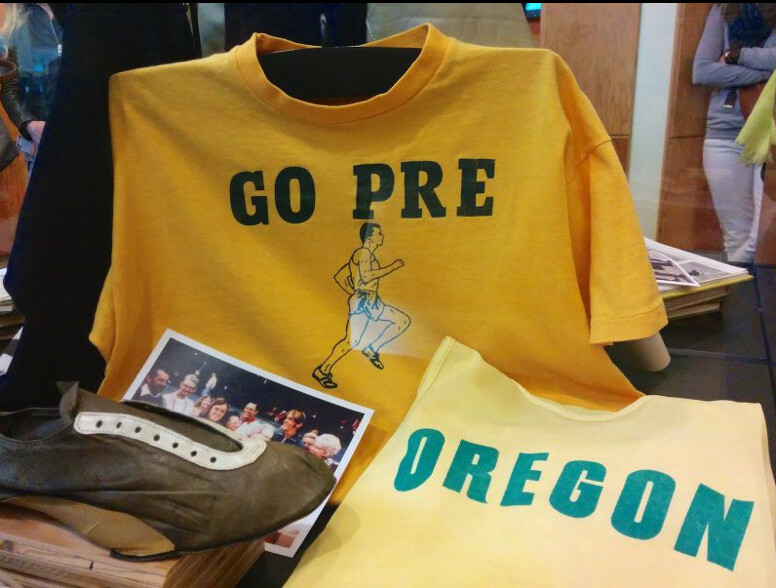
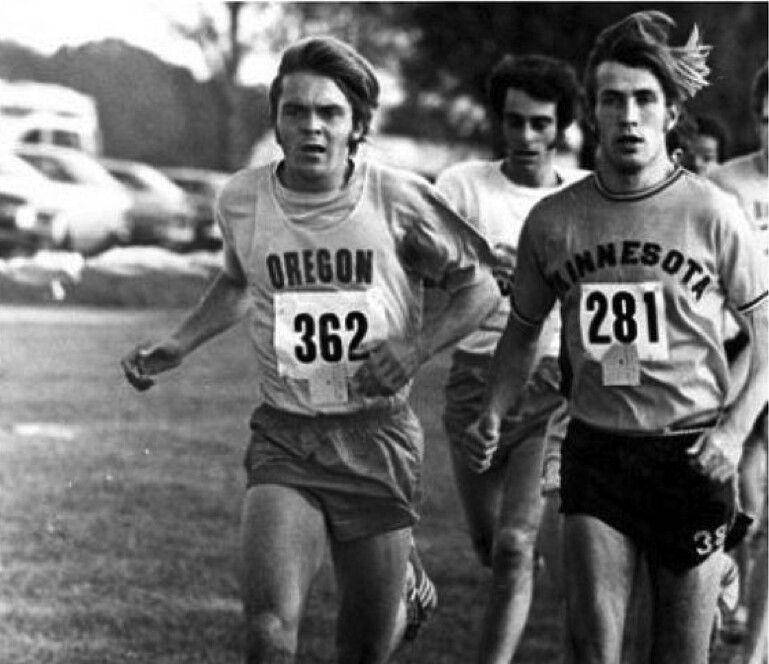
These are the first pair of Pre’s shoes to be publicly sold, which is notable considering the lasting impact he had on Nike, the most iconic sneaker company in the world: Nike.
Prefontaine was the first runner signed by Nike and jump-started the brand as a running shoe company.The auction for the shoe opened on Sept. 6, and the bidding began at $100,000.
From 1969 through the mid-1970s, Pre dominated the sport, setting eight NCAA records during his time at the University of Oregon and competing in the 5,000m at the 1972 Olympics in Munich. In 1975, Prefontaine died in a car accident in Eugene, Ore.
The winner of the auction will now get to hold on to a unique piece of running history. Each year, Prefontaine’s career and life are celebrated at the Prefontaine Classic, a world-class Diamond League track event held at Hayward Field in Eugene, in his honour.
(09/17/2022) ⚡AMPby Running Magazine
An Olympian, a burrito, a failed drug test: Former ASU runner Shelby Houlihan looks to rebound after doping ban
On a cloudy, characteristically cool December night in Beaverton, Oregon, Shelby Houlihan, the American record holder in the 1,500 and 5,000 meters, accompanied Courtney Frerichs, the Olympic silver medalist in the steeplechase, and Frerichs’ sister, Lindsey, to an authentic Mexican food truck near her home.
The three ordered carne asada burritos and returned to Houlihan’s house to eat and watch “The Bachelorette.”
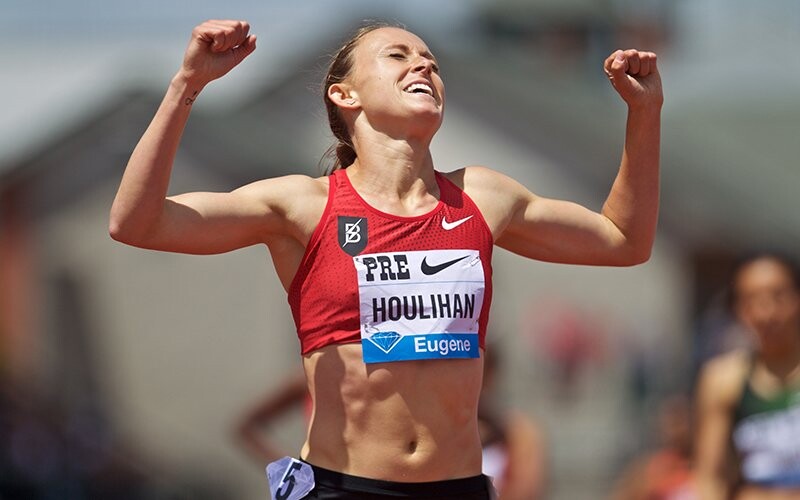
The next morning, on Dec. 15, 2020, the former Arizona State standout was given a random drug test. Weeks later, in mid-January, Houlihan was notified in an email from the Athletics Integrity Unit (AIU) that her urine sample revealed the presence of 19-norandrosterone (19-NA), a metabolite produced by the substance nandrolone – an anabolic steroid prohibited by the World Anti-Doping Agency (WADA).
She was issued a provisional suspension, which set off a cascade of events that led to a four-year ban, knocked her out of the U.S. Olympic Trials leading up to the Tokyo Olympics and will bar her from competing until January 2025 when she will be almost 32.
It is, Houlihan said, “an athlete’s worst nightmare.”
Houlihan, 29, has lost the financial support of Nike. She also saw former teammate Gabriela DeBues-Stafford leave the club rather than risk sanctions because of the Bowerman Track Club continued relationship with Houlihan.
Houlihan said her initial response to the positive test was “shock and disbelief.” She wondered, “How am I going to explain (the presence of a banned substance) when I don’t even know where it came from myself?”
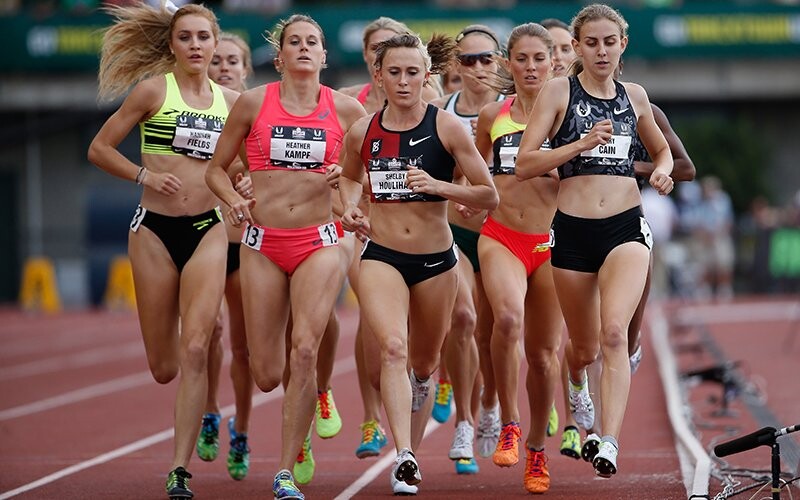
Houlihan was at a high-altitude training camp in Flagstaff when she received the email.
“I opened up my phone to an email that was urgent, confidential and … it was this lab report of scientific words that I could not read,” Houlihan told Cronkite News.
The Sioux City, Iowa, native said she read the email over about 10 times and had to Google which substance triggered the positive test, because she had never heard of nandrolone.
Then she called Jerry Schumacher, her coach at BTC, the professional Nike club that Houlihan had trained with since graduating from ASU in 2015.
“I’m just sobbing and trying to tell him what’s going on, but crying too hard,” Houlihan said.
The long road
Today, Houlihan lives alone in Portland and said she has relied on her former BTC teammates, her boyfriend and her family for support. She does odd jobs, including food delivery, and continues to train with the hope of returning to competition at an elite level.
It is not a situation she envisioned growing up in Sioux City, Iowa, surrounded by runners, including her mother, Connie, and her uncle, Bob Prince, who competed in college.
After winning several state titles at Sioux City East High School, Houlihan continued her success at Arizona State, where she won the NCAA 1,500 meters in 2014 and finished as a 12-time All-American, the second-most in program history.
She holds five school records: the outdoor 800 and 1,500 meters, and the indoor 800, mile and 3,000.
That success set the stage for 2016 Summer Olympics, where she finished 11th in the 5,000 meters and was the highest-placing U.S. runner in the race.
She also finished fourth in the 1,500 meters and set the American record at the 2019 World Outdoor Championships.
More Olympic success felt inevitable.
Shock and disbelief
Elise Cranny, a close friend and former Bowerman teammate of Houlihan’s, remembers that news of the positive test “didn’t really sink in” at first.
“I came back to the house, and I was like, ‘Man, something is very off … something is not right,’” said Cranny, who was living with Houlihan during the camp. “I think the initial reaction from everyone was disbelief, and like, ‘Oh, this is something that’s going to get figured out’ because it’s seriously wrong.”
Schumacher and Houlihan called attorney Paul Greene to “just try to figure out a game plan” and investigate further what could have happened.
The first step was a pregnancy test because nandrolone can be found in pregnant women. After she determined she wasn’t pregnant, Houlihan compiled a log of everything she ate the week before the test. She scoured text messages, bank statements, food receipts and iPhone locations to determine everything she had consumed.
“I was able to piece it together pretty well,” Houlihan said. “And then, ultimately, we just felt like the food truck the night before had to be the most likely source.”
Houlihan wouldn’t name the establishment that served her the burrito because she doesn’t “want to mess with any lawsuit.” However, she isn’t blaming the food truck.
“I don’t think they did anything wrong,” Houlihan said. “I think it just kind of happened.”
While Houlihan and her BTC teammates frequently ate at that food truck, she recalls that she received her order more quickly than usual, and the foil-wrapped burrito was unlabeled.
Houlihan believes she may have been mistakenly given a burrito containing offal (pig organ meat), which can contain nandrolone.
She remembers the meat in the burrito being finely chopped and that grease pooled in the foil. She said it seemed more rich than the burritos she had eaten there before, so much so that she was unable to finish it despite being very hungry after eating little else that day.
“We knew (nandrolone) can be found in pig offal, and we knew that I ate at a food truck that served pig offal 10 hours before (the test),” she said. “And we knew that when you ingest it, it can be at its highest levels 10 hours after ingestion, and that’s the exact kind of time frame that I had eaten that.
“And so as unlikely as all of those things were, it just seemed like the only thing that we could say, ‘All right, this makes some sense,’ and that’s really the only thing that we had to go on.”
Houlihan was the only one among the three who ate at the food truck who was tested.
A search for answers
She provided a hair sample that was examined by a toxicologist and it showed no trace of nandrolone. She also passed a polygraph examination that concluded she was not lying when asked if, at any time, she knowingly or intentionally ingested nandrolone.
Houlihan’s urine tests taken Nov. 22, 2020, Jan. 23, 2021, and Feb. 4, 2021– before and after the positive test – all were negative. She also had her vitamins and supplements analyzed by a lab.
The previous urine tests and the lab report convinced Houlihan that it’s unlikely the positive result was triggered by a supplement or vitamin she was taking. She is still being randomly tested and all of her ensuing tests have come back clean.
She believes that given “the information that we have right now, (the burrito) is the only thing that kind of makes any type of logical sense.”
Houlihan hired a private investigator to trace its sources of meat, but the effort was unsuccessful.
The private investigator found that the food truck owner purchased 30 pounds of pork stomach in a frozen batch from Iowa Beef Processors in September of 2020. However, the owner had no box or label from the meat used in December that could be traced to its processing plant.
And the investigator couldn’t determine whether the owner used pork from a castrated or uncastrated boar. Houlihan’s attorney argued it must have been uncastrated boar meat that triggered her positive test.
When the AIU officially charged Houlihan four months later, the U.S. Olympic Trials, scheduled for June 18-27, were fast approaching. Houlihan decided to go straight to the Swiss-based Court of Arbitration for Sport (CAS) to avoid missing the trials.
The CAS rejected Houlihan’s explanation of what happened and banned her from the sport for four years on June 11, 2021.
Houlihan’s ban lasts until Jan. 13, 2025. She missed last summer’s Tokyo Olympics, the 2022 World Athletics Championships in Oregon, and she’ll miss next year’s World Athletics Championships in Budapest and the 2024 Paris Olympics.
The CAS’s three-member panel found that Houlihan’s “explanation that the 19-NA in her sample resulted from her consumption of the meat of an uncastrated boar simply cannot be accepted. The explanation presupposes a cascade of factual and scientific improbabilities, which means that its composite probability is (very) close to zero.”
Lacking evidence
The panel said that Houlihan failed to prove that the burrito she ate contained boar offal.
“First, the athlete would have had to have been served pork at the food truck despite ordering beef,” the court said. “Second, the pork consumed would not have been ‘normal’ pork product ordered by the food truck, but uncastrated boar. Third, uncastrated boar enters the food chain through completely different channels than pork.”
The panel said that the polygraph result and Houlihan’s hair sample were not “sufficient for the Athlete to rebut the presumption that the ADRV (anti-doping rule violation) was intentional.”
The court also said the concentration of nandrolone in Houlihan’s urine was “2-3 times higher than the highest values reported in the scientific literature after the ingestion of much more significant quantities of meat of mature (uncastrated) boar.”
On June 14, 2021, Houlihan publicly announced she tested positive for nandrolone and would not be competing at the upcoming Olympic Trials. Because Houlihan hadn’t been racing, many thought she was battling injuries instead of serving a provisional suspension.
“And at the end of the day, the panel didn’t think it was probable enough, which is unfortunate,” Houlihan said. “But yeah, I mean, that’s the only thing that we really have as an explanation. I hope at some point, maybe some more information pops up, and maybe it’s something else entirely. I don’t know. But it would be great to have an answer at some point.”
In May, Houlihan appealed the suspension to the Swiss Federal Tribunal.
She lost. It was her last opportunity.
The hardest part to watch, Crany said, “is her getting renewed hope through the appeal process or through different things, and then seeing her kind of have that life back in her eyes again, just for it to come crashing down.”
At one point, Houlihan was offered a reduced sentence – a three-year ban instead of four years – if she admitted guilt.
She refused.
“I never even considered that to be an option, because I knew I didn’t take (nandrolone) intentionally,” Houlihan said. “And I wasn’t going to admit to something that I didn’t do. At least I fought for myself and tried to do the right thing. But taking accountability for something that I didn’t do, it’s definitely not on the table for me.”
Houlihan thinks the system is flawed because the doping agency never had to prove she took a banned substance.
“There was obviously something in my system and I understand that I have a responsibility for what’s in my body,” Houlihan said. “But I think knowing that I never intentionally put it there and (I’m) still having to serve a four-year ban is definitely a flaw in the system. I don’t feel like they did their due diligence in trying to figure out what the truth was. It was just at the end of the day I couldn’t, beyond a reasonable doubt, prove where it came from.”
Houlihan said she believes the burden of proof should be shifted and “split 50-50 between the doping agency and the athlete.” While she believes that she should have to prove what triggered the positive test, she also believes the doping agency should have to prove that she intentionally cheated.
“Just even the playing field a little bit,” Houlihan said. “If you’ve ingested something, it’s almost impossible to try to figure out where that is. Because you’re getting notified a month or two later, I don’t have the source anymore. So it’s just a really impossible task to try to figure out. And I think it’s pretty flawed that if you can’t figure it out, it’s just an automatic four-year ban, and you’re treated like a doper.”
A new normal
Houlihan’s life today includes strong family and friend support.
Cranny said she had a lot of conversations with BTC teammates to make sure Houlihan felt supported.
“What you initially think of is her mental health and someone’s life being completely ripped out from under them and not being able to do what you love to do and what she feels like she’s been born and made to do,” Cranny said. “In the beginning, you worry about her being by herself, and making sure that she has people around her and she feels supported.”
Shelby’s mother, Connie Houlihan, who lives in Phoenix, said she is worried about the mental toll on her daughter.
“You’re afraid of suicide,” Connie Houlihan said. “You know, everything’s a possibility … with depression and with something that critical that they took away from her. You don’t know. Of course, you’re scared to death.”
Connie said a couple of Shelby’s sisters went to be with Shelby right away because they didn’t want her alone. Shelby wouldn’t let her parents come visit, however, because, Connie said, “she was so overcome.”
“I think, if we would have flown there right away, she would have … this is the way she explained it to me, ‘That it would have made it all too real.’
“She was really struggling dealing with it,” Connie said. “She was crying all the time. But I think that was the hardest part for us that we couldn’t just jump on a plane and go and be with her because we respected her decision.”
Chloe Houlihan, one of Shelby’s five sisters, said her sister remained “very resilient through everything.” She said she has tried to be someone Shelby “can talk to when she’s kind of struggling.”
Shelby no longer trains with her BTC teammates, something which Chloe said has been difficult and “a little bit isolating” for her sister.
Until May, Houlihan was paying Schumacher to coach her as an independent athlete, but she confirmed she’s now training entirely by herself – using six years of past training logs as a reference.
“We just felt it was best to maybe cut ties for a little bit,” Houlihan said. “I think there was just a lot of publicity going on around me and him still working together. There was just a lot of scrutiny, I think.”
Some of that publicity and scrutiny was fueled by DeBues-Stafford’s decision to leave BTC because of Houlihan.
A two-time Canadian Olympian who placed fifth in the 1,500 at the Tokyo Olympics, DeBues-Stafford announced in April she left BTC due to Houlihan’s continued ban involvement with BTC at the time.
“Fundamentally, I left the Bowerman Track Club because, despite my best efforts, I was unable to verify that the club was not in violation of World Athletics anti-doping regulations,” DeBues-Stafford said in an interview conducted via email.
DeBues-Stafford was concerned that Houlihan was working out “under the guidance of” the three BTC coaches (Schumacher, Shalane Flanagan and Pascal Dobert) at the same location and times that other BTC athletes were working out while under the supervision of the same coaches.
“While we never did a rep together, there was still what felt to me like an unnecessarily risky proximity between both men’s and women’s teams and an athlete serving a ban,” DeBues-Stafford said.
According to DeBues-Stafford, Houlihan would also use the private gym – built at Schumacher’s residence for BTC athletes to use – at the same time BTC athletes were there under staff supervision.
“Shelby would drive to the Nike campus up to four times a week at the team’s regular time and the starting point for our regular daily runs together so she could run with us,” DeBues-Stafford said. “If she arrived before us, she would wait for BTC athletes at the meeting spot to see if any BTC athletes arrived so she could run with us. These sometimes included long runs. She also ran with the team on a regular basis at altitude camp in Flagstaff.”
Houlihan said she and her attorney inquired about the rules of her ban and were told that she couldn’t go to any practices or work out with anyone on the team, but if she happened to bump into them and they were running at the same place, then she could run with them.
“My attempts to discuss my concerns with team staff were rebuffed, as were the earlier and more sustained efforts of other teammates,” DeBues-Stafford said.
BTC did not receive independent legal advice on the issue, DeBues-Stafford said. She also said Houlihan shared accommodations with a full-time member of BTC staff during the Flagstaff camp, and those accommodations were used for organized BTC athlete support activities.
“When I asked if Shelby’s lawyer had explicitly asked the AIU about her using the same gym as BTC and about how to handle the altitude trip, I did not get a clear response,” DeBues-Stafford said.
DeBues-Stafford said she “independently sought answers,” and reached out to an anti-doping organization to verify that BTC’s collective behavior was within the rules and that there was no liability on anyone other than Houlihan.
According to DeBues-Stafford, “the anti-doping organization could not guarantee that the actions of BTC and Shelby did not constitute a violation, and could not guarantee that other athletes and support staff couldn’t face repercussions either.”
She said the anti-doping agency cited two rules in the World Anti-Doping code and advised her to leave BTC and submit an official anonymous tip to the AIU.
A trying time
While Schumacher and some of Houlihan’s other teammates knew about her positive test in January of 2021, DeBues-Stafford did not learn about Houlihan’s positive test until a couple of days before the team publicly announced the ban about six months later.
“Learning this news in mid-June almost derailed my Olympics,” DeBues-Stafford wrote in an Instagram post in April. “It was a small miracle that I showed up in Tokyo in shape to run sub-four (minutes) twice in 48 hours and place fifth.”
Houlihan said she was “surprised” and felt “blindsided and hurt and confused” by DeBues-Stafford’s social media posts because DeBues-Stafford had not told her about her concerns.
“I never knew that that was a problem for her,” Houlihan said. “And I’m not sure why she didn’t reach out to me. I reached out to her after I read her posts.”
Houlihan said she apologized to DeBues-Stafford for being affected by her situation.
“I think she just felt like she didn’t want to add to what I was going through by bringing it to me, which I don’t agree with, personally,” Houlihan said. “I felt like I would have rather had that conversation with her and I would have been more than glad to try to help that situation for her in any way, instead of what ended up happening. I think that was a lot worse – what ended up happening – than her just coming and talking to me about it.”
DeBues-Stafford has since moved to Victoria, B.C. and is now coached by Trent and Hilary Stellingwerff.
“When I told Jerry (Schumacher) I was leaving BTC due to the lack of separation between Shelby and the group, he asked if I really wanted to leave, given he was thinking of possibly no longer coaching Shelby if she lost her appeal at the Swiss Federal Tribunal,” Debues-Stafford said.
Debues-Stafford said Houlihan was still driving to the Nike campus and running with BTC when Debues-Stafford left Portland on March 31.
“Growing fear over the team potentially breaking rules, coupled with frustration at the lack of action by the team left me in an awful and unsustainable headspace,” DeBues-Stafford said. “I left altitude camp early at the end of February to get some breathing space and made my decision to leave the team.”
A powerful influence
Cranny said she misses running with Houlihan and credits her for pushing her to succeed.
“I think of her all the time when I’m racing now,” Cranny said. “She’s a huge reason why I feel like I am where I am right now in my own running. She just really opened my eyes to the importance of not limiting yourself and putting yourself in it.”
Although BTC could look a lot different, Houlihan would still like to eventually come back to the group once her ban is up.
“I definitely would like to rejoin Bowerman,” Houlihan said. “That’s like my family, basically. I’ve been a part of that group since I went pro in 2015 and I know those athletes so well. And I know that that training environment is great for me.”
Cranny also wants Houlihan to rejoin BTC and said she can’t picture her former teammate anywhere else
“It feels like this is her family,” Cranny said. “I feel like everyone here is really supportive of her, really close friends with her. So I hope (she rejoins BTC). That’s something that we’ve definitely talked about as a team is wanting to work out with her again once the ban is up.”
When asked if she thinks she can still compete at the elite level once the ban is up, Houlihan said, “I guess that’s one thing that we’re just gonna have to find out.”
Houlihan is no longer a member of BTC nor being paid by Nike. She spent $250,000 in legal fees fighting her ban without any financial support from the Beaverton-based shoe and apparel giant.
“They said that they support me, and they believe in me, but as far as financially, I haven’t really received any support from them in that way,” Houlihan said.
Houlihan lost her six-figure professional contract with Nike and hasn’t had a paycheck in over a year. Her Nike deal also gave her the opportunity to earn performance-based bonuses on top of her base compensation, income that is also gone.
Houlihan’s mom called the entire process “an injustice” and said it wouldn’t make sense for her daughter to jeopardize her Nike contract by doping.
“Why would somebody with a contract that she had and the money that she was making, why would she cheat?” Connie said. “She had a contract (with Nike) through the (Tokyo and Paris) Olympics like, why would you cheat?”
Houlihan said Nike hasn’t offered her a job, either.
“I’ve been doing some food delivery things like DoorDash and stuff, just to try to make a little money on the side, but yeah, just trying to get by.”
Houlihan continues to train but admits it is difficult.“It’s been really challenging, to be honest,” Houlihan said.
As she trains alone, without her former coaches and teammates for support and motivation, Houlihan said she sometimes stops halfway through a workout or doesn’t always finish it at all. She finds it more difficult to hit her targeted times.
“I think it’s easy to do that when I’m having a great time and I’m having fun, and I’m finding joy in running,” Houlihan said. “But a lot of the things that make it fun aren’t really there for me right now.”
(09/16/2022) ⚡AMPby David Veenstra (Cronkite News)
World record holder Jacob Kiplimo to run Vedanta Delhi Half Marathon
Ugandan star hopes for “fastest half marathon ever seen on Indian soil”.
Jacob Kiplimo, only 21, is the reigning world half marathon champion and last year ran the phenomenal world record time of 57:31.
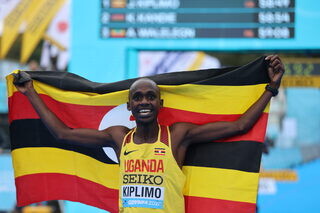
The young Ugandan star has already had an outstanding 2022, winning both the RAK Half Marathon in Ras Al Khaimah (UAE) in February in a world-leading 57:56 and then the Great North Run half marathon last Sunday. During the summer, Kiplimo focused on the track and won a World Athletics Championships 10,000m bronze medal and then a memorable 5000m/10,000m double at the Commonwealth Games last month.
Ethiopia’s Amdework Walelegn improved the Delhi course record to 58:53 in 2020 but Kiplimo believes he can run the fastest half marathon ever seen on Indian soil during his first visit to the country next month. “I have been told that the Vedanta Delhi Half Marathon course is a quick one and the record suggests that you can run fast times there. I am in good shape, and I will focus on preparing specifically for the race over the next few weeks,” said Kiplimo.
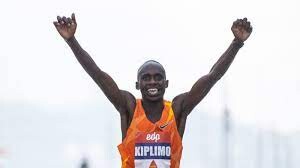
The 17th edition of this race has a new title sponsor, with the race promoters Procam International joining forces with India’s leading natural resources conglomerate, Vedanta Limited. With transformation for a sustainable future at the heart of Vedanta’s business operations, its commitment to giving back to society has been a part of the company’s core ethos. Both Vedanta and the Delhi Half Marathon are striving to be catalysts for change in society so it is a partnership that will be mutually beneficial to their joint aims.
“On behalf of the Vedanta family, I feel honored to welcome the current world half marathon and world record holder Jacob Kiplimo to the Vedanta Delhi Half Marathon 2022. When Jacob became world champion at such a young age, his story become an inspiration for many. I am sure that his participation here will motivate thousands more to take to part and run for causes that deeply touch us all,” said Priya Agarwal Hebbar, Non-Executive Director, Vedanta Limited.
The race has a prize fund of USD 268,000, and the international elite field will have its sights on the first prize of USD 27,000 for both men and women. “We are thrilled to be able to welcome Jacob Kiplimo to India for the very first time and to headline this year’s Vedanta Delhi Half Marathon. It is a reflection of the event’s stature that it annually draws some of the biggest names in distance running,” said Vivek Singh, Joint Managing Director, Procam International.
“As one of the leading half marathons in the world, I’m excited that we are back on the international calendar, bigger and better. It’s our privilege to welcome Vedanta as the title sponsor, as we look to build on our shared objective of strengthening the legacy of this event as a stimulus for empowerment and change,” he added.
(09/15/2022) ⚡AMPVedanta Delhi Half Marathon
The Airtel Delhi Half Marathon is a haven for runners, creating an experience, that our citizens had never envisaged. The streets of Delhi converted to a world-class running track. Clean, sanitized road for 21.09 kms, exhaustive medical support system on the route, timing chip for runners, qualified personnel to ensure smooth conduct of the event across departments. The race...
more...High Class Elite Field marks Frankfurt’s Return
The Mainova Frankfurt Marathon will take place on October 30 for the first time since 2019. Among the men’s elite are three contenders with personal bests of under 2:06 which points to a high-quality race in prospect. The Ethiopian Betesfa Getahun is the fastest runner in the field at present with a best of 2:05:28. Also on the start line will be the German runner Filimon Abraham from theTelis Finanz Regensburg club. The organisers of the race, which will end in its traditional, spectacular fashion in Frankfurt’s Festhalle, expect to have around 12,000 marathon runners for the 39th edition of the event. The race is an Elite Label Road Race, a distinction awarded by World Athletics, the world governing body of athletics. Entries are still available at www.frankfurt-marathon.com
“We are delighted that the Mainova Frankfurt Marathon is back after a two-year interruption because of the Corona Pandemic – with strong elite fields, a big number of mass runners and all the emotions which we have experienced in the past,” says the Race Director Jo Schindler. “We’ll experience the Mainova Frankfurt Marathon just as it’s always been: a big start and thrilling run-in to the finish in the Festhalle in front of thousands of spectators. Our aim is to create a unique running experience for mass and elite competitors alike and to see many beaming faces at the end of race day.”

The organisers have now announced part of the men’s elite field while recruiting for the women’s race continues and the elite women’s field will be announced at a later date. An up-and-coming Ethiopian is the fastest man on the start list: Betesfa Getahun is 23 and made his marathon debut in 2019 with an impressive, high-quality performance, running 2:05:28 for fourth place in Amsterdam. The Mainova Frankfurt will be his fourth race at the distance for the runner whose pedigree includes a strong showing in sixth place at the 2018 World Half Marathon Championships in Valencia.
The other runner, who has already gone under 2:06, is also from Ethiopia and is just 21: Gebru Redahgne is a newcomer to running at international level, running outside of his homeland for the first time only last year when he finished second in the Cape Town Marathon in 2:10:17. He made a massive improvement this year in Barcelona where he ran 2:05:58 for another second place finish and only five seconds behind the winner. Gebru Redahgne wants to take full advantage of Frankfurt’s fast course to improve his personal best still further.
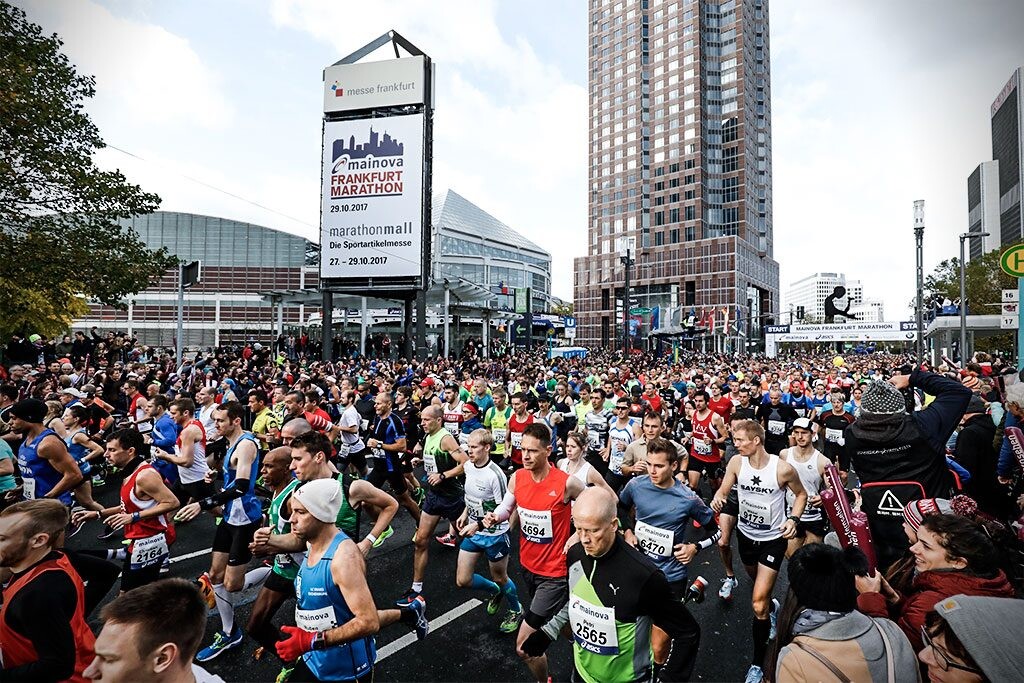
A runner from Kenya is making his return to the Mainova Frankfurt Marathon where he has more than once impressed with the quality of his performances. Martin Kosgey twice finished second in the Festhalle, in 2016 and 2018, as well as taking fourth place on two more occasions, 2017 and 2019. Frankfurt was where the 33-year-old set what remains his personal best of 2:06:41. The Mainova Frankfurt Marathon on October 30 will be his first race in a year when he produced a solid performance to finish runner-up in Eindhoven in 2:06:56.
Since almost every German runner at top level were involved in either the World or European Championships this summer, almost none of them will be competing in Frankfurt. An exception is Filimon Abraham of the Telis Finanz Regensburg club who has the potential to join the leading ranks of Germany’s marathoners. After failing to finish on his marathon debut in Hamburg in April, the 29-year-old, who finished 19th in the 10,000m at the European Championships in Munich in August, is renewing his marathon quest on Frankfurt’s fast course.
(09/15/2022) ⚡AMPMainova Frankfurt Marathon
Frankfurt is an unexpectedly traditional and charming city, with half-timbered buildings huddled in its quaint medieval Altstadt (old city), cosy apple wine taverns serving hearty regional food, village-like neighbourhoods filled with outdoor cafes, boutiques and street art, and beautiful parks, gardens and riverside paths. The city's cache of museums is second in Germany only to Berlin’s, and its nightlife...
more...Five reasons why you should run on vacation
When you hear the word ‘vacation,’ running usually isn’t the first thing that comes to mind. But running is the perfect form of exercise when you are travelling because it allows you to sightsee, stay in shape and get a little you-time.
Here are five reasons why you should pack a pair of trainers on your next trip.
1.- The perfect way to explore a new place
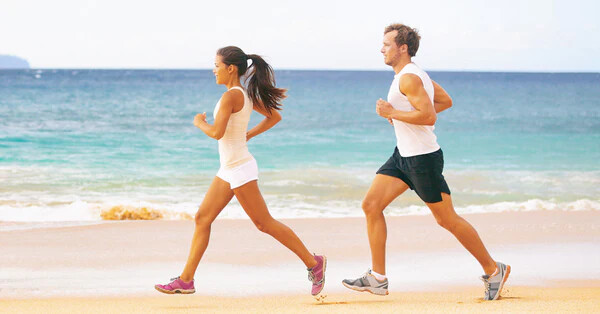
Running in a place you’ve never been lets you see a lot more than what you’d see from a bus or sauntering around (though of course, you’ll do that, too). It’s a great way of learning where to go in a new city.
You can explore a city’s history, beaches, trails and everything in between. If you are visiting a hilly city like San Francisco, Vancouver or Paris, you can get in a hill workout and see the sights at the same time. You may even catch the sunrise if you get up early enough.

2.- It is an efficient way to get around
The more you use your legs, the less you need alternative means of transportation. One of my favourite things to do is to run to the beach, swim and run back, which is also a great way of staying cool.
3.- Great way to stay in shape
We are not asking you to do interval training, but why not stay in shape while on vacation? Your run does not have to be as intense, but at least you will not go home feeling bad that you completely neglected your training.
4.- Immerse yourself in the local running community
Run the local parkrun, or check out if there are any run clubs on Strava or at the local running store. This is a great way to meet like-minded people and immerse yourself in the culture. You may discover new places to eat or visit from the recommendations of local runners, not to mention making new friends.
A local run group will also help you find the best trails, routes, and runs in the area–allowing you to gain the full vacation experience.
5.- It looks cool on Strava
Whenever someone is in a unique place on my Strava feed, I develop a severe case of FOMO (fear of missing out) and instantly smash the kudos button.
Imagine being a local legend in Greece… or achieving a CR in Australia. Also, do not be afraid to share landscape pictures of beaches, local eats and sunsets for some extra jealousy and kudos on your post.
(09/15/2022) ⚡AMPby Marley Dickinson
Wildfire in California causes thousands to evacuate, impacts Western States course
The Mosquito wildfire, which began west of Lake Tahoe amid extreme heat on Sept. 6, is the largest fire currently burning in California. The blaze has already burned through 58,544 acres in El Dorado and Placer counties.
Western States Endurance Run (WSER), one of the most famous ultra trail races in the world, sits right in Mosquito’s path. Runners begin the annual, much-revered 100-mile race in Auburn, and finish on the track at Placer High School.

On Tuesday afternoon the fire flared up, pushing toward the community of Foresthill and arriving at the edge of Foresthill High School, blazing through structures across the street. Firefighters appear to have kept the fires away from the high school, but it’s not clear how many cars and structures were consumed in the flare-up.
We connected with Craig Thornley, race director of WSER, on Tuesday. “Lives and homes are the highest priority right now. The WSER trail and our race is a lower priority,” Thornley said.
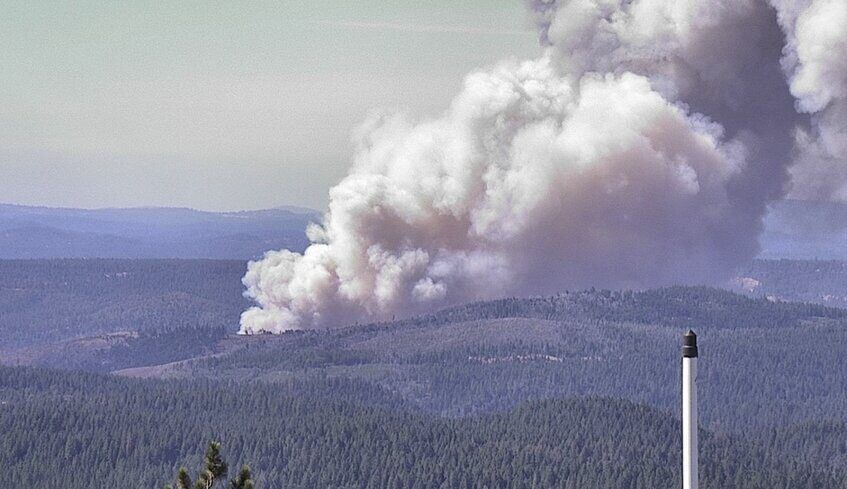
“That said, eventually the fire will be contained and the US Forest Service will be able to go in and assess the damage to the WS trail and the bridges. Currently, the fire has affected the trail as far up as Devil’s Thumb [aid station] through El Dorado Canyon and Michigan Bluff, to the turnoff onto the single track from Chicken Hawk. That’s about 10 miles of trail. It still could burn up towards Last Chance and Dusty Corners, but it is unclear what effect the burn scar will have on fire growth,” added Thornley.
The flames have forced more than 11,200 people to flee as they encroach on homes and buildings, burning 64 structures by Wednesday including at least 25 homes, according to Cal Fire. The fire grew more than 8,000 acres overnight and is spreading through the Sierra Nevada mountains.
“It continues to push steadily to the east in heavily forested areas with extremely dry vegetation,” officials said Wednesday morning. There is some optimism, however, as firefighters have the fire now 20 per cent contained.
(09/15/2022) ⚡AMPby Keeley Milne
1,500m world record holder Genzebe Dibaba to run Amsterdam Marathon
Dibaba, 31, will follow older sisters and fellow Olympic medallists Tirunesh Dibaba and Ejegayehu Dibaba into the marathon.
On Tuesday, the TCS Amsterdam Marathon confirmed on Instagram that the women’s 1,500m world record holder, Genzebe Dibaba, will make her marathon debut on Oct. 16 in Amsterdam.

Dibaba, 31, follows older sisters and fellow Olympic medallists Tirunesh Dibaba and Ejegayehu Dibaba into the 42.2-kilometre distance. Her 1,500m personal best of 3:50.07 from the 2015 Monaco Diamond League still stands as the world record, though Faith Kipyegon of Kenya ran the second-fastest 1,500m time in history (3:50.37) on Aug. 10.
Kipyegon beat Dibaba for the 1,500m title at the 2016 Summer Olympics in Rio.
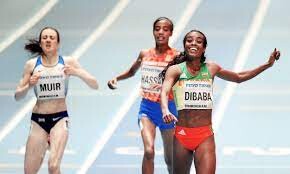
Dibaba has competed fewer than five times since she missed the 2019 World Championships and 2020 Olympics due to a foot injury. She has only raced the half-marathon distance once, at the Valencia Half Marathon in 2020, which at the time was the fastest-ever debut half marathon by a woman (65:18).
Joining Dibaba on the start line is her Ethiopian compatriot and 2016 Olympic 10,000m champion Almaz Ayana, who is also making her marathon debut. Ayana finished third at the Great North Run in Newcastle, U.K., last weekend in 67:10 and has run 29:17.45 over 10,000m.
The fastest debut marathon by a woman was 2:18:56 by Paula Radcliffe at the London Marathon in 2002.
(09/14/2022) ⚡AMPby Marley Dickinson
TCS Amsterdam Marathon
Do you want to enjoy Amsterdam in October and all that the city has to offer you? Want to feel a real athlete and start and finish in the historic Olympic stadium? Or run across the widely discussed passage under the beautiful National Museum? Then come to Amsterdam for the annual TCS Amsterdam Marathon in October! The TCS Amsterdam Marathon...
more...Hellen Obiri believes her winning the Great North Half Marathon is a huge inspiration as she prepares for her full marathon debut in New York
Olympic 5,000m silver medallist Hellen Obiri said cheers from the crowd on the streets of Newcastle and a good course propelled her to clinch the title once again.
As compared to last year’s edition, when the Covid-19 pandemic was still raging — forcing the limitations on crowds — Obiri said this year's edition was well attended and the course favourable.
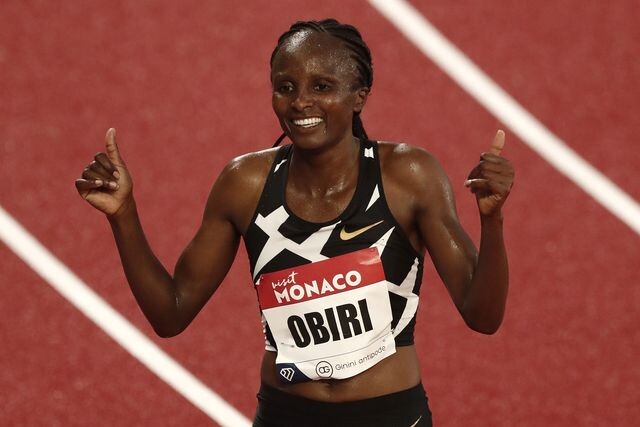
“Last year, the race was a bit tough due to the pandemic. However, this year’s edition has been amazing owing to the cheerful crowd. The course was also good unlike last year,” Obiri said.
Obiri won the Great North Run in 1:07:05, bettering her 1:07:42 from last year, ahead of Olympic marathon champion Peres Jepchirchir ( 1:07:07 ). Ethiopia’s Almaz Ayana placed third in 1:07:10.

Obiri, the world 10,000m silver medallist added: “It’s a good feeling. I am happy for what I have done.”
She added that the race was not a walk in the park with the presence of Jepchirchir and Ayana, a former Olympic and world 10,000m champion.
“I knew they were there and I knew the race was going to be a tight battle. However, I told myself I am the best and I will do my best. I had a plan to kick in the last 200m and it worked out well,” she said.
“I am so excited about my marathon debut but I'm also aware of the tough competition that awaits me. Right now, I am going to prepare well and I am hoping I’ll be healthy. I just want to run well and cross the finish line,” Obiri concluded.
(09/14/2022) ⚡AMP
by Abigael Wuafula
TCS New York City Marathon
The first New York City Marathon, organized in 1970 by Fred Lebow and Vince Chiappetta, was held entirely in Central Park. Of 127 entrants, only 55 men finished; the sole female entrant dropped out due to illness. Winners were given inexpensive wristwatches and recycled baseball and bowling trophies. The entry fee was $1 and the total event budget...
more...Joseph Njoroge clocks the 4th fastest Double 15k (10k+break+5k) ever this morning in Thika Kenya
Joseph Njoroge (blue jersey) from Ngong Athletics Club was the overall winner of the Second edition of the Double 15k race held in Thika on Wednesday morning.
The 18-year-old Nyandarua-born Njoroge clocked 29:56.17 in 10Km before caping the event with 14:43.93 to emerged top in 44:40.10 in the new race that is gaining ground in Kenya.
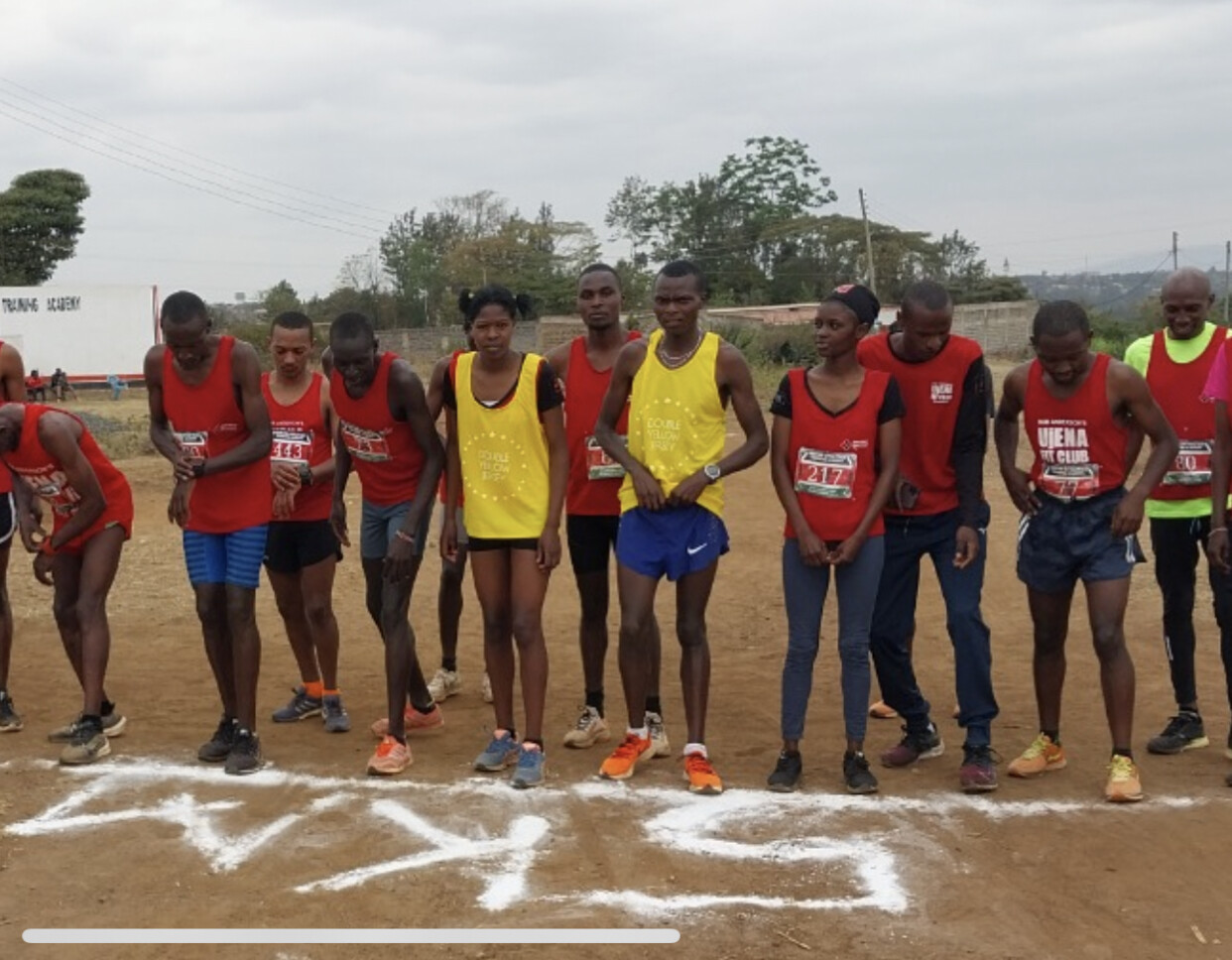
Local ace Zakariah Kirika, 21, who trains with the host Kenyan Athletics Training Academy (KATA) in Thika, combined 45:25.31 to finish second splitting 30:28.54 in 10Km and 14:56.77 after the break.
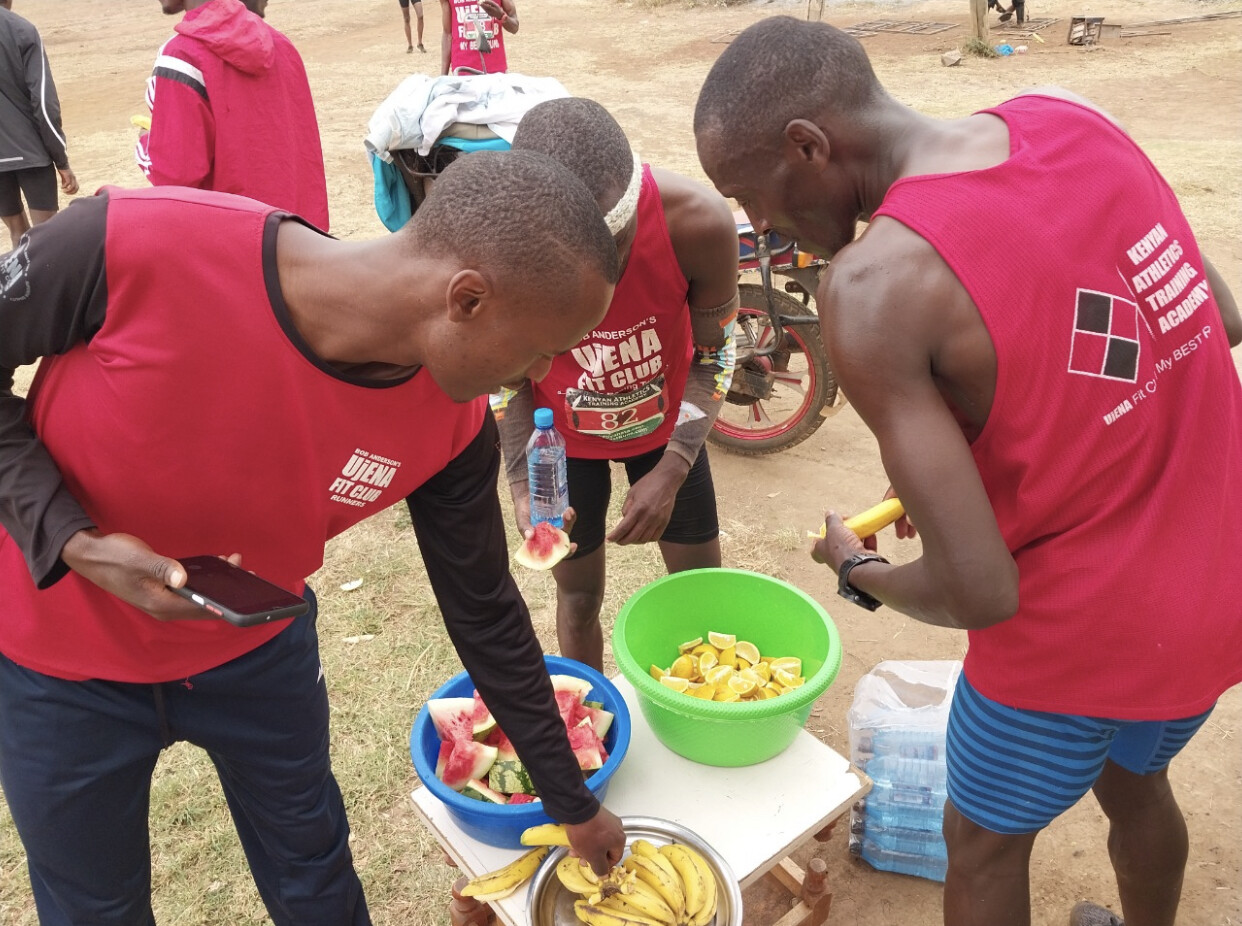
For the women, Newcomer Caren Chepkemoi from the Thika based Training Academy won the lady’s category in 59:50.76. She timed 40:14.97 in 10km and 19:35.79 followed by training mate Susan Njeriwho fished second in combined 1:00.01.68 in the race organized by Kenyan Athletics Training Academy.
62-year-old Charles Ndirangu who trains at KATA smashed the 60-69 world best clocking 55:11 for the two legs. His splits were 37:04 for 10k and 18:07 for 5k.
“The double Race tests athletes’ endurance. They must do 15Km split into 10Km and 5Km. This is separated by 1hr 45min break from the start of the 10Km race and beginning of the 5Km leg. Times are added together for scoring. The leaders after the first leg wears the yellow jersey so everyone knows who is leading going into the second leg," explained Bob Anderson, the creator of Double Racing in 2010 and the chairman of the Double Road Race Federation based in Mountain View California USA.
This was the second Double Race after the first was held in September last year during the official opening of the KATA that now hosts 15 athletes.
The KATA 10Km monthly Time-Trial resumes on October 15th in Thika.
(09/14/2022) ⚡AMP
KATA Time Trial Series
Welcome to the KATA Monthly Time Trial Held at the Kenyan Athletics Training Academy in Thika, Kenya, the KATA Monthly Time Trial is a unique and inclusive event designed to support runners of all levels in achieving their goals and showcasing their fitness. This event offers both 10K and 5K distances on an accurate, certified course, providing participants with...
more...London Marathon follows Boston in adding non-binary category
The London Marathon is the latest of the World Marathon Majors to include a non-binary entry option for its 2023 race, following the lead of the Boston Marathon.
An announcement was made before the ballot opens on October 1 and the change follows a review and consultation period by London Marathon Events, which organises the London Marathon.
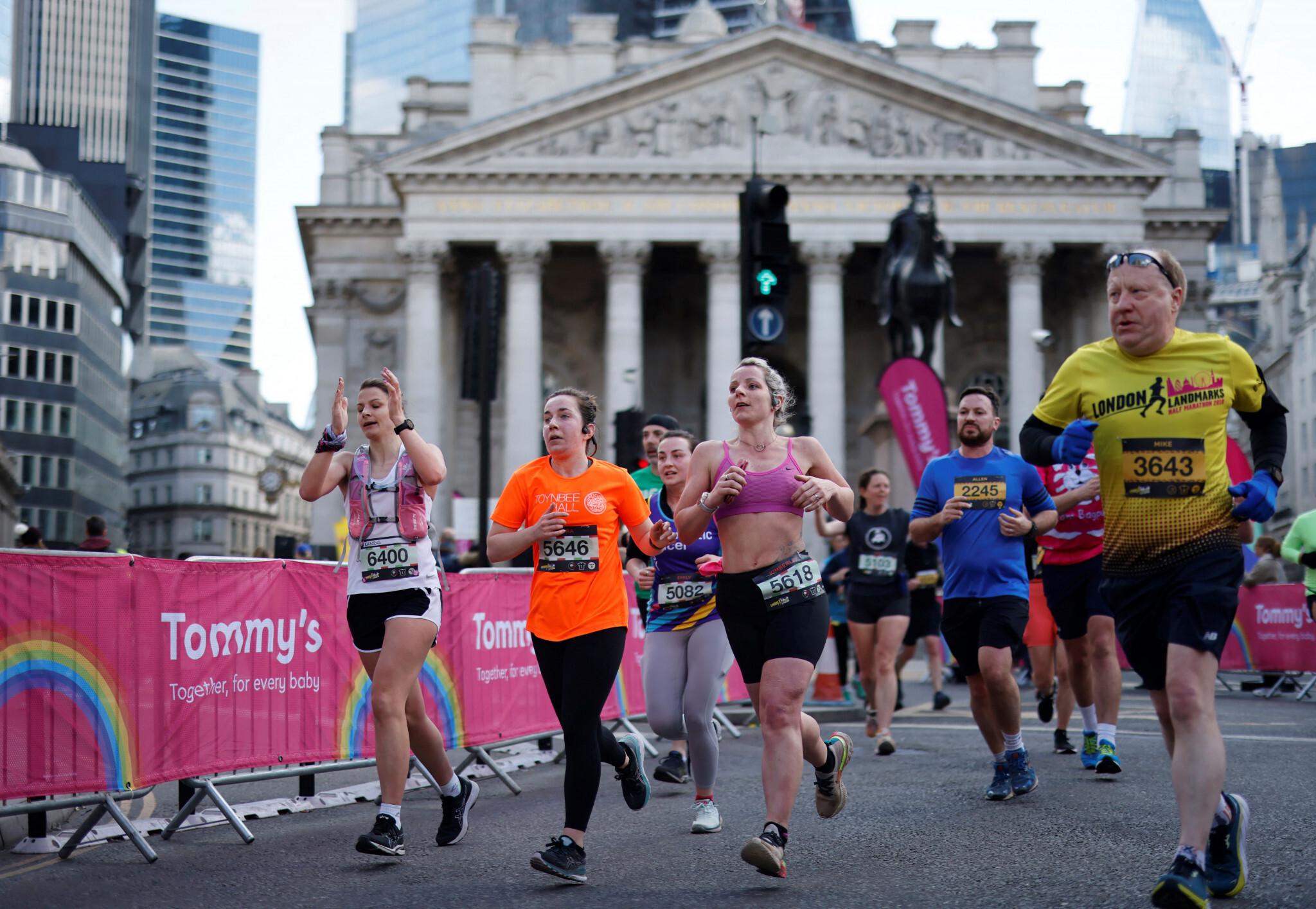
This means participants can register for the mass-participation race as a man, woman or non-binary individual.
Championship, elite and Good For Age races will not have a non-binary option for athletes.
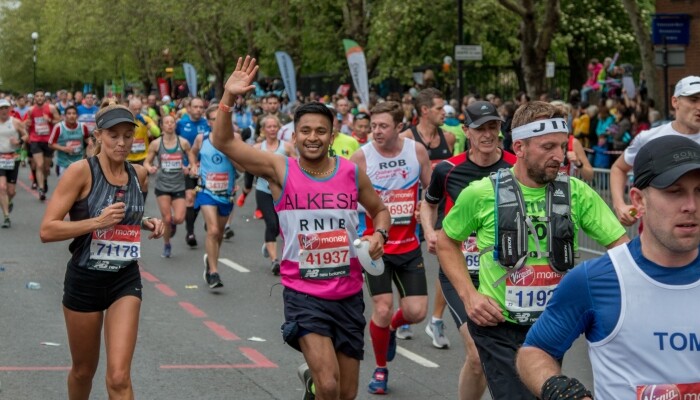
"This is a significant step forward for the London Marathon as we continue our journey to make our event truly inclusive," said event director Hugh Brasher.
"We know there is still much more to be done, but changes such as this demonstrate our commitment to making the London Marathon an event that is for everyone."
This new policy will also be rolled out across all London Marathon Events mass-participation races, including RideLondon and the Standard Chartered Great City Race.
New entry policies were also created in July which allow for assisted participants and more support for pregnant and postpartum runners.
The 2023 London Marathon is scheduled to take place on April 23.
This year's London Marathon is set to take place on October 2, having been moved from its usual position in April to allow more participants due to the threat of COVID-19 restrictions.
UK Athletics adopted non-binary guidelines from Scottish Athletics in 2018, which includes advice on the inclusion of non-binary athletes.
In 2019, Scottish Athletics went a step further by adding a non-binary entry option for athletes at its championship races.
(09/14/2022) ⚡AMPby Michael Houston
TCS London Marathon
The London Marathon was first run on March 29, 1981 and has been held in the spring of every year since 2010. It is sponsored by Virgin Money and was founded by the former Olympic champion and journalist Chris Brasher and Welsh athlete John Disley. It is organized by Hugh Brasher (son of Chris) as Race Director and Nick Bitel...
more...Canadian government requires ArriveCan app for Detroit marathon runners
If you are planning to run the Detroit Free Press Marathon on Oct. 16, you will have to download the ArriveCan app and follow Canada’s COVID protocols, or you will be forced to abandon the race.
Although the marathon starts and finishes in Detroit, all participants cross the Ambassador Bridge into Windsor, Ont., to run a small portion of the race along the riverside and then return to Detroit via a tunnel under the Detroit River.
An email was sent out to all participants of the race on Sept. 8, saying, “We have been notified by the Canadian government that ALL international race participants will be required to use ArriveCan as part of their participation at all Detriot Free Press Marathon events.
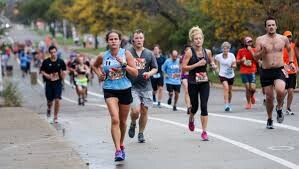
“This procedure is mandatory to complete to participate in the Detriot Free Press Marathon and failure to do so could result in being prohibited from entering Canada and a DNF.”
Race participants were also warned of another way they could be denied at the border: Canada’s current COVID isolation period.
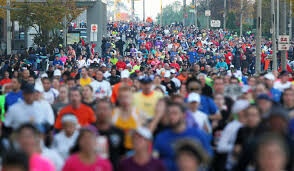
“Canada has a 10-day isolation period for those who test positive for COVID-19, meaning if you test positive for COVID-19 anytime after Oct. 5, you are not allowed to cross into Canada on race day,” the email states.
Runners taking part in the marathon and international half marathon will be required to carry three things during the race–a passport, a digital or paper copy of your proof of vaccination and a digital or paper copy of your ArriveCan receipt (including the eight-digit receipt reference code). Runners may have their hands full.
The Detriot Free Press Marathon has been a fixture on the North American running calendar since the late 1970s. The race is a USATF-certified course and is a popular race destination for many Canadians looking to qualify for the Boston Marathon.
Critics have been calling for the abolition of the app for months, due to the necessity of having to use a digital device, the level of detail required and its possible effect on airport delays.
(09/14/2022) ⚡AMPby Marley Dickinson
Detroit Free Press Marathon
Our marathon course offers international appeal, traversing both downtown Detroit and Windsor, Ontario, crossing the border at both the Ambassador Bridge and Detroit-Windsor Tunnel. You will run through historic neighborhoods, around beautiful Belle Isle, and along the spectacular RiverWalk. ...
more...Athletics Olympic champion on the start line of the TCS Amsterdam Marathon
There is a remarkable name on the starting list of the TCS Amsterdam Marathon: Almaz Ayana. The 30-year-old Ethiopian athlete, who won gold in the 10,000 meters at the 2016 Olympics, will make her marathon debut on Sunday, October 16. Another first is the current world record holder in the 1500 meters: Genzebe Dibaba. Sports organization Le Champion also reports that CyBrian Kotut, Lemi Berhanu and Titus Kipruto are the fastest men on the start line in Amsterdam's Olympic Stadium. They have all won major marathons.
Almaz Ayana is one of the greatest talents of all time in long distance running. In 2016, she was phenomenal: she won Olympic gold in Rio de Janeiro in a new world record in the 10,000 meters (29.17.45) at the time, and bronze in the 5,000 meters. In that year, she was also awarded IAAF Athlete of the Year. The 30-year-old Ethiopian athlete previously won the world championship twice and the Diamond League final ranking twice. After a few years of absence due to the arrival of her son, Ayana is ready to add to her impressive record of achievements.
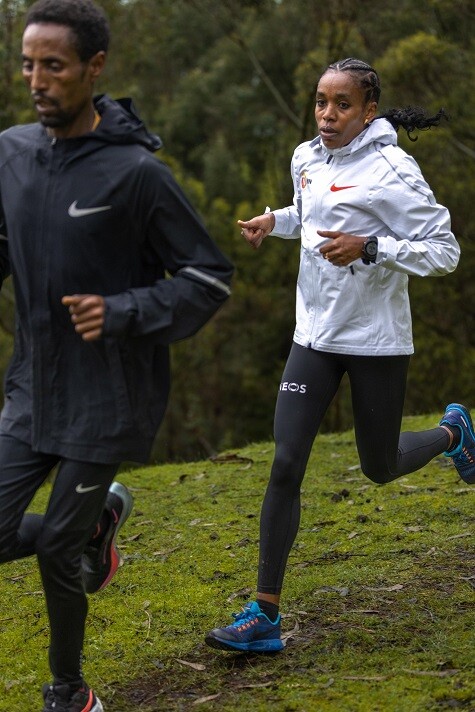
Genzebe Dibaba is the youngest sister of three-time Olympic champion Tirunesh Dibaba and Olympic silver medallist Ejegayehu Dibaba. The 31-year-old Ethiopian runner holds the world record for the 1500 metres (3:50.07, Monaco 2015). She also is an Olympic silver medal holder (2016, Rio de Janeiro). In 2015, when she became world champion in the 1500 meters, her brilliant performance was rewarded with the title of IAAF Athlete of the Year. She will be challenging for the first time over this classic distance.
These fast women are accompanied by Tsehay Gemechu, among others. Their 23-year-old compatriot has a personal best of 65.01 in the half marathon and finished fourth in the 5,000 meters at the 2019 World Athletics Championships.
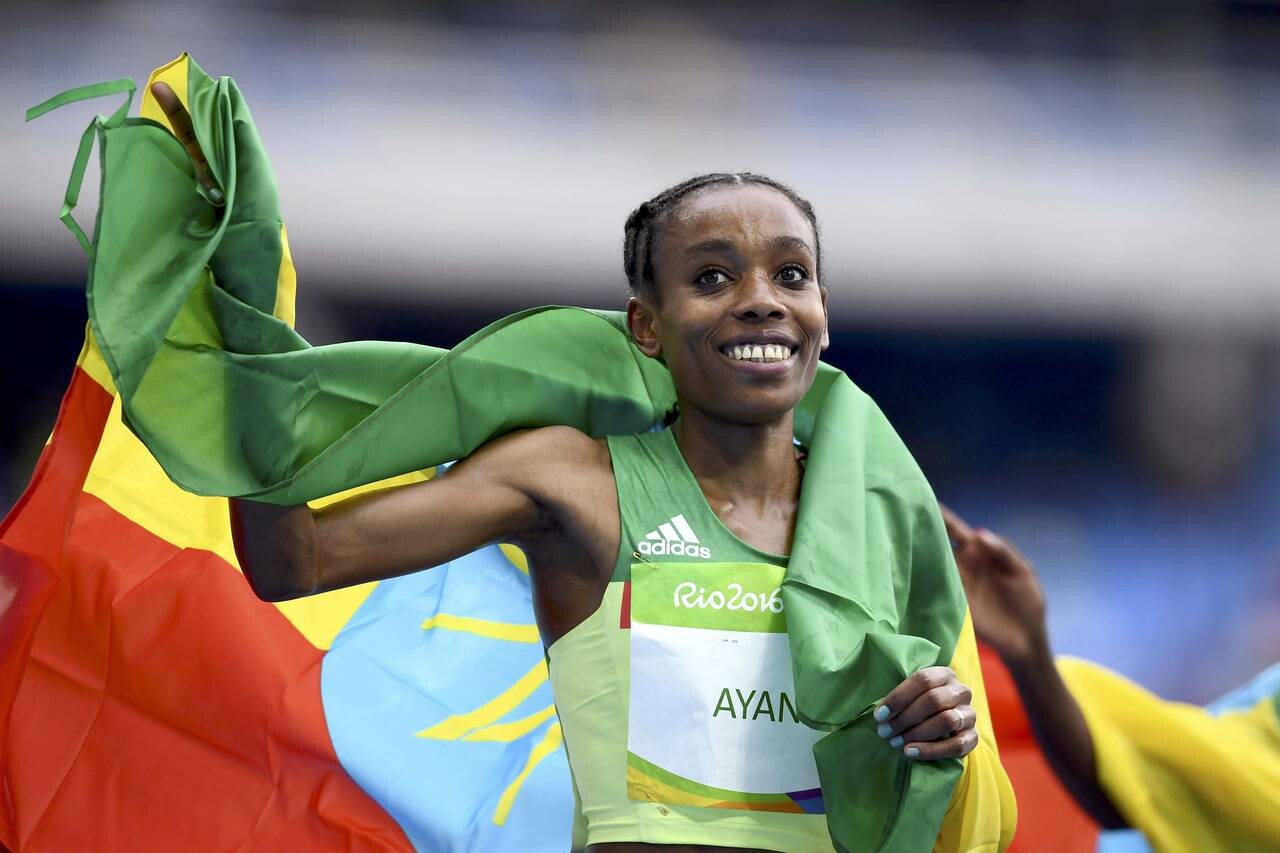
Course record of 2.03.39 in danger?
When the starting gun for the TCS Amsterdam Marathon sounds on Sunday 16 October, the eyes of the men will be on CyBrian Kotut, Lemi Berhanu and Titus Kipruto. On the ultra-fast course, they will be aiming for the course record of 2.03.39 (Tamirat Tola 2021).
CyBrian Kotut has already won a number of marathons: Hamburg, Florence and Paris. This spring, the 30-year-old Kenyan ran a personal best of 2.04.47 to win in Hamburg. Last November he was unbeatable in the 42,195 meters in Florence and in 2016 he triumphed in Paris.
Lemi Berhanu also knows all about winning. He has won the Dubai (2015), Boston (2016) and Xiamen (2017) marathons, among others. With a personal best of 2.04.33, the 27-year-old Ethiopian is in for the win.
Titus Kipruto is a revelation from Kenya. This spring, the 24-year-old marathon runner made a huge impression by winning the Milan marathon. In his second marathon, he finished in 2:05:05. Can he break his personal record again in Amsterdam? >{?Registration for NK marathon still possible
During the TCS Amsterdam Marathon, the Dutch marathon championships also take place, for which competitive athletes can register until September 26. The three main events, the full marathon, half marathon and 8K,
(09/13/2022) ⚡AMPby Runners Web
TCS Amsterdam Marathon
Do you want to enjoy Amsterdam in October and all that the city has to offer you? Want to feel a real athlete and start and finish in the historic Olympic stadium? Or run across the widely discussed passage under the beautiful National Museum? Then come to Amsterdam for the annual TCS Amsterdam Marathon in October! The TCS Amsterdam Marathon...
more...New Tech Revolutionizing Runner Apparel Market
Although running has a reputation for being an affordable sport that just about anyone can participate in, the average runner spends in the region of $1,000 a year on running kit according to a recent survey. While this may seem like a lot of money to spend on a sport that should not require any investments other than a fairly decent pair of running shoes, there are a number of things to take into consideration.
This includes the host of technological advances that have been made in recent years in terms of running clothes. The more high-tech an item is, the bigger the price tag will be. Here are just a few running gear developments that fitness enthusiasts are willing to spend good money on to ensure improved comfort and performance.
Increased Hygiene is a Priority
It is no secret that most runners simply throw their running attire in the washing machine to get it clean. Even running shoes can be cleaned this way, as long as they are manufactured from materials that can withstand a machine wash and the insoles and laces are cleaned by hand. However, it does pay to prepare your shoes for machine washing because the results will be even better. Furthermore, simply washing sweaty, dirty clothes and shoes is not always enough if you want to get rid of potentially hazardous bacteria, however. Anti-bacterial agents in active wear may not be new but the latest anti-germ fabric is not only designed to eliminate bacteria growth but to eliminate unpleasant odors as well. The latest technology gives active wear all the protection it requires by releasing antimicrobial properties whenever microbes present themselves.
Built-In Support is Very Popular
The days of having to wear bulky braces to support problem areas may be a thing of the past thanks to new tech that turns running apparel into supportive products. Stoko’s is one of the companies incorporating supportive gear into running clothes that won’t restrict natural movement and hinder performance.
Whether your running efforts are thwarted by ACL or MCL concerns, supportive tights made from a special technical knit fabric will support your knee where it is needed most. Similarly, supportive apparel is also available for the thighs, hips, and calves. If you have issues with your shoulders, biceps, or forearms, there is good news too as well-known brands have also developed vests and shirts that boast supportive technology.
Gain Lean Muscle Faster
With the demand for functional active wear increasing in leaps and bounds among both casual and serious runners, brands are pulling out all the stops to gain a competitive advantage.
Electromyography technology is particularly popular as it allows the user to track how hard their muscles are working while delivering detailed feedback via an easy-to-use application. Runners who want to get the most out of their time on the road or track can also boost their efforts by running in clothes that are made from weighted fabric. The added weight works the muscles harder during periods of activity, making it easier to increase lean muscle mass.
Running apparel has changed considerably over the last few decades. Thanks to technological advancements, clothes are not only becoming more comfortable but can provide a host of other benefits to the wearer as well.
(09/13/2022) ⚡AMPBoston Marathon creates nonbinary division for 2023 race
Nonbinary athletes will be able to run in next year's Boston Marathon without having to register as members of the men's or women's divisions, race organizers announced Monday.
The Boston Athletic Association, which administers the prestigious marathon, said it's been working to expand opportunities for nonbinary people — not just for the marathon but for the BAA's other races, which include a 5K, a 10K and a half marathon.

Organizers confirmed the change as registration opened Monday for the 127th running of the marathon on April 17, 2023. A field of about 30,000 is expected for next spring's edition of the storied race.
Nonbinary athletes can submit entry applications if they've completed a marathon as a nonbinary participant during the current qualifying window, the BAA said. It said it's still working to establish qualifying standards for nonbinary participants, but that its online applications will include 'nonbinary' as a gender option.
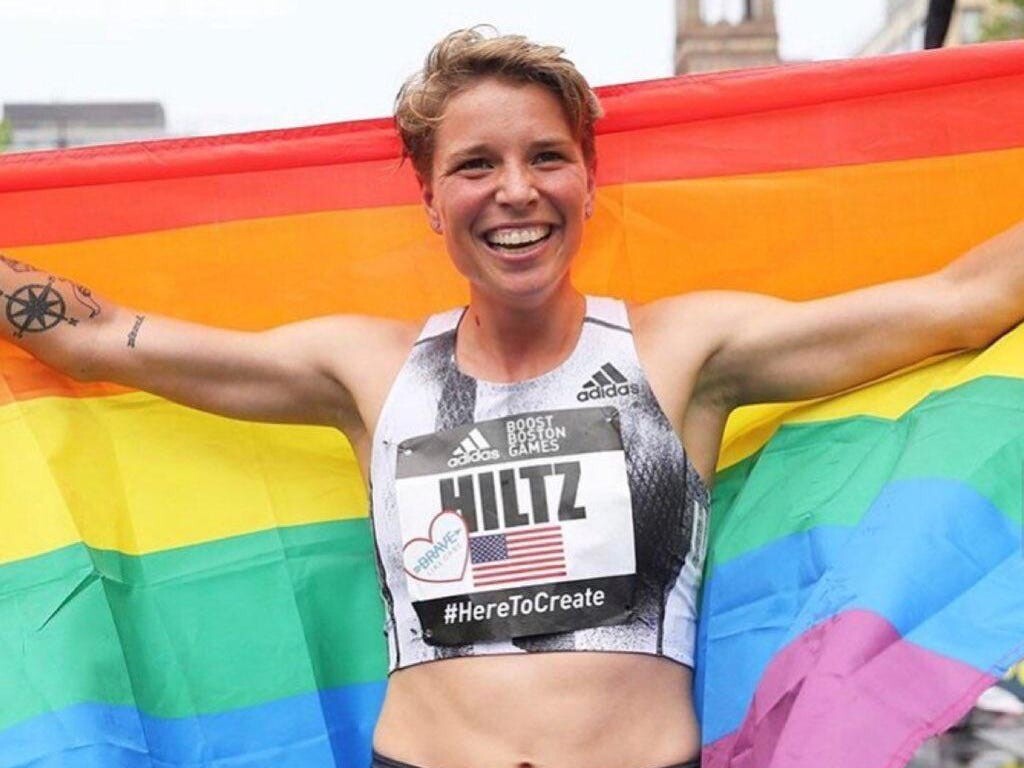
"Discussions are ongoing with nonbinary athletes in an effort to further promote inclusion at all BAA events,' the organization said, adding, 'We view this first year as an opportunity to learn and grow together.'
Nonbinary pro miler and 1,500 runner Nikki Hiltz, who came out as transgender last year and narrowly missed a spot on the US team for the Tokyo Olympics, lauded the move.
'There's still so much work to be done but I'm thrilled that nonbinary runners are being acknowledged by the Boston Marathon and BAA,' Hiltz tweeted.
One Twitter user wrote that he saw the decision as a 'good compromise' on the issue of gender divisions in sports, but others disagreed with the move.
'I'm sure no one will abuse this,' another Twitter user remarked sarcastically. 'Especially for a race that is notoriously tough to get qualified for.'
The Boston Marathon is the latest major marathon to begin adding nonbinary divisions.
Last year's Philadelphia Distance Run, a premier event offering a half marathon and a 5K, became the first large race in the US to establish a nonbinary division and offer equal prize money.
The Brooklyn Marathon and Half Marathon followed in April. Eighty-two competitors who had registered as nonbinary participants were among the finishers, including Jacob Caswell, a middle-distance runner for Columbia University.
'Being able to not even win but just compete as yourself, it's just been freeing,' Caswell, who won the nonbinary division in Brooklyn, told The New York Times.
(09/13/2022) ⚡AMPby Alex Raskin
Boston Marathon
Among the nation’s oldest athletic clubs, the B.A.A. was established in 1887, and, in 1896, more than half of the U.S. Olympic Team at the first modern games was composed of B.A.A. club members. The Olympic Games provided the inspiration for the first Boston Marathon, which culminated the B.A.A. Games on April 19, 1897. John J. McDermott emerged from a...
more...World 10,000m bronze medalist Margaret Chelimo sets eyes on the Dam tot Damloop road race
Margaret Chelimo will compete in the Dam tot Damloop road race on September 18 in Zaandam, Netherlands.
Chelimo said her main goal in the race is to run well. “My track season is now over and I am going to Dam tot Damloop for the road race. I just want to run well,” Chelimo said.
At her recent outing in Zurich for the Diamond League final, Chelimo placed second in 14:31.52.
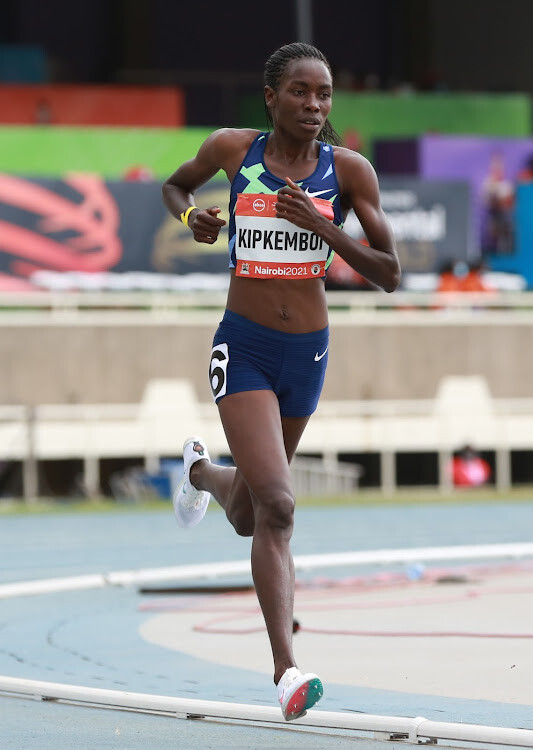
She revealed that her win at the 2015 All-Africa Games in Brazzaville, Congo marked her breakthrough in athletics and made her believe in herself. She posted 15:30.15 to win the 5000m race.
“I vividly remember winning that race in 2015…It was a defining moment for me. That’s when I became popular. That win made me realize that I could actually run well and inspired me to venture into athletics seriously,” Chelimo said.
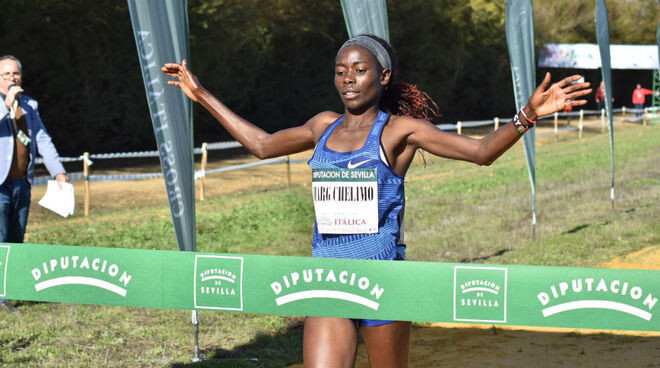
The 2016 Africa 5000m silver medallist said she looks up to former world 5000m champion Hellen Obiri and former Olympic 5000m champion Vivian Cheruiyot. “They are true role models and I draw my inspiration from them,” she said.
Chelimo said she is anticipating a good show at next year’s World Championships in Budapest.
“I will be there and I am planning for something good. I am building up well and staying focused on training,” she said. She added that athletics is not a walk in the park as there are many challenges.
“Athletics is not easy! There are both financial and injury challenges. Focus, self-discipline and sacrifice are the virtues that keep me going,” Chelimo said.
In the next three years, Chelimo believes she will be at a higher position in as far as athletics is concerned with major titles.
She described her first outing at the 2009 Bressanone World Youth Championships as a thrilling experience.
"That was the first time I traveled out of the country. I was happy to meet new people from different countries. At that time, I was also very young," she said.
When Chelimo is not training, she revealed she loves spending time on her small farm or watching television.
“I have a small farm where I plant vegetables. I also have some chicken that I look after. Sometimes, I just watch television like right now,” she concluded.
(09/13/2022) ⚡AMPby Abigael Wuafula
Dam tot Damloop
On Sunday, 50,000 runners can join the Dam tot Damloop. The unparalleled atmosphere, the tunnel, one of the world's largest business streets and the fact that starting and finishing in two different cities make this event so special. The distance is 10 English Mile, which also includes a number of world top runners each year. In addition, the Mini Dam...
more...

